This website uses cookies to ensure you get the best experience on our website. Learn more
- Australian Dollars
- British Pounds
- Canadian Dollars
- New Zealand Dollars
- South African Rands
- Swiss Francs
- U.S. Dollars
Talk to an expert +44 203 405 6666 Lines open now
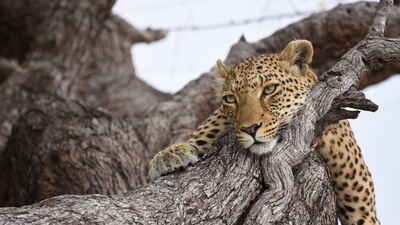

Where to see Leopard in South Africa
The leopard is not uncommon. The most numerous of Africa’s big cats, it occurs in all major conservation areas and across most habitats. Nonetheless, its grace and elusiveness make it a unique safari drawcard.
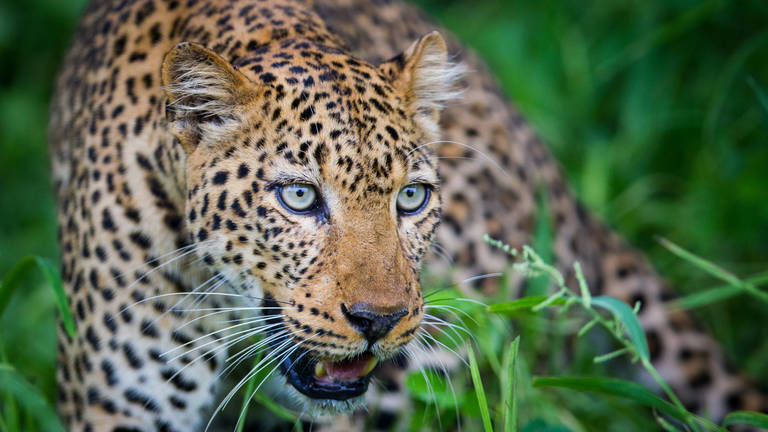
Quick facts about Leopard
The leopard is a powerful and versatile predator that varies greatly in size and habitat. It uses stealth and camouflage to ambush prey at close quarters, typically taking small to medium-sized antelopes, though everything from birds to young giraffes may make the menu. Most active at night, leopards are agile climbers and unique among big cats in using trees as ‘larders’ for prey. Key identification features include a long tail, usually curled at the white tip, and beautiful rosette patterning (unlike a cheetah’s solid spots). Males are around one-third larger than females, with a larger head and more jowly throat. Adults are largely solitary, though cubs may remain with their mothers for 18 months.
Range countries worldwide
Highest recorded altitude
Max. tail length
12–17 years
Average lifespan
The top camps for seeing leopard in South Africa
Based on 12 reports by our travellers since Jun 2018, visitors at these camps in South Africa have the best chances of sighting leopard.
Best chances to see
Good chances to see
Some sightings
No sightings yet
Top 10 camps for leopard
% of travellers who saw leopard
Where to see leopards in Africa
Leopards are widespread but good at hiding. By day, you may spy one in a tree. At dawn and dusk, they become more active on the ground. Night drives can be productive.
Top tips for viewing leopards
Leopards occur everywhere from mountains to rainforests but are best seen in savannah and woodland habitats. Highly territorial, they often show up repeatedly in the same area. Classic leopard country includes river loops with large trees and rocky kopjes surrounded by open bush. Even if invisible, a leopard’s presence is often betrayed by the alarm calls of prey, such as baboons, impala or even guinea-fowl. Be patient and you might get lucky. Certain locations, such as Zambia’s Luangwa Valley, are famed for leopard sightings. But all major conservation areas, from the Kalahari to the Maasai Mara , offer a chance, especially where guides know the habitats and whereabouts of individual cats. Night drives increase the chances further. Listen out after dark for the distinctive deep territorial call, which resembles the rasp of a saw.
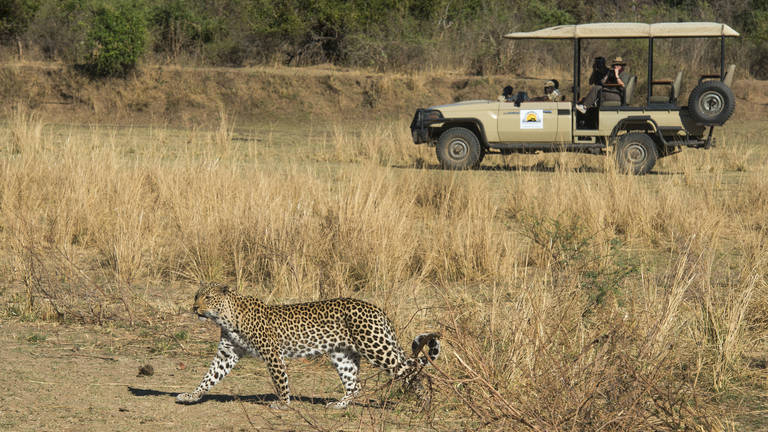
Our best South Africa holidays for leopard sightings
Based on our travellers' reports, these ideas for South Africa safaris are likely to give the best leopard sightings
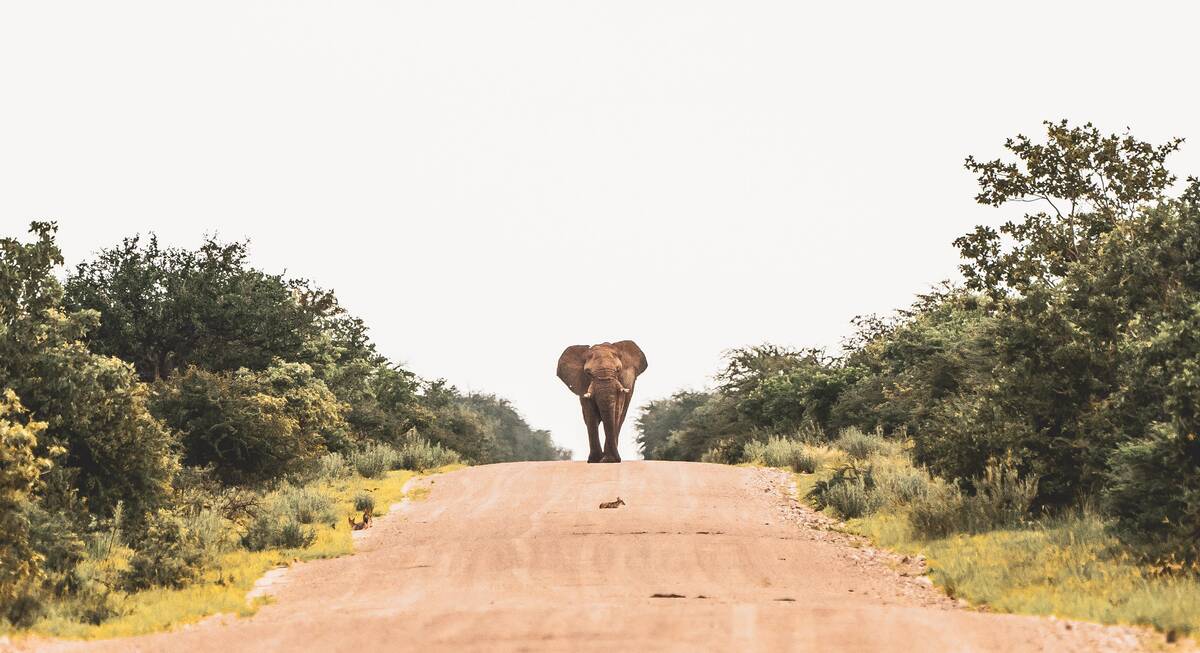
Black Wildebeest Self-drive Safari
19 days • 10 locations CAPE TOWN AIRPORT TO WINDHOEK AIRPORT
Journey from South Africa’s cosmopolitan Cape Town to central Namibia’s Okonjima Nature Reserve during this self-driven safari. The route passes through a stunning variety of landscapes, offering access to this beautiful continent’s rich diversity.
US$3,230 - US$3,710 per person
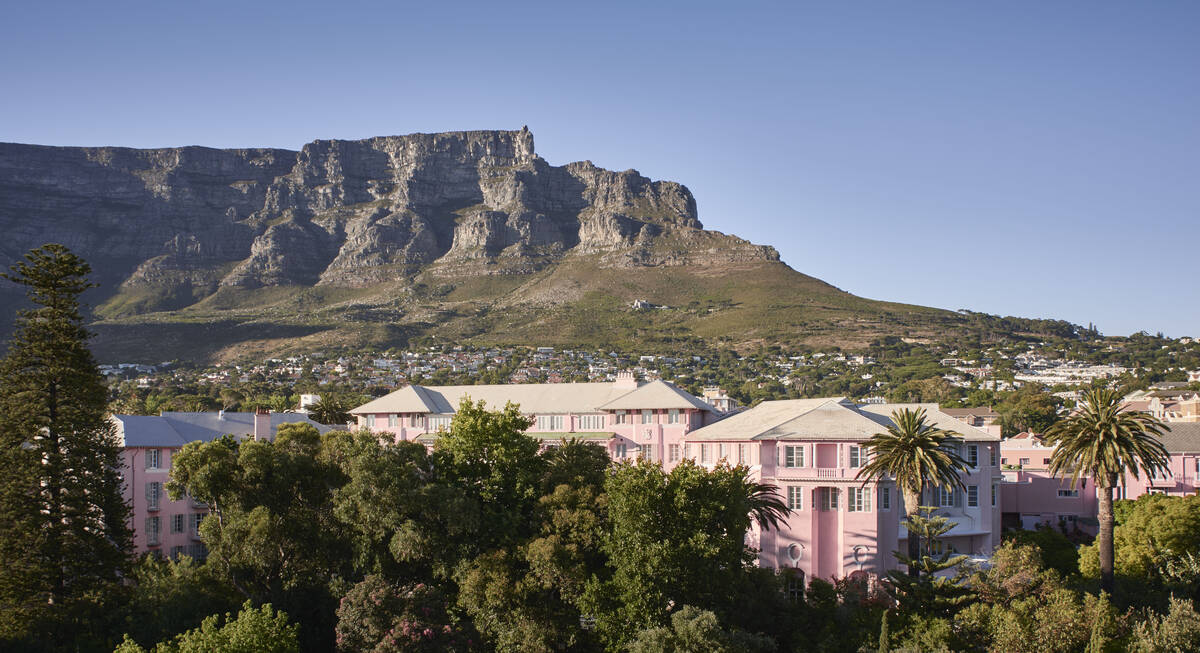
The Highlights of Africa
17 days • 7 locations CAPE TOWN AIRPORT TO KIGALI AIRPORT
An epic adventure taking in some of Africa’s most incredible sights and wildlife experiences, from Cape Town to the Okavango Delta, Victoria Falls, the Maasai Mara and an encounter with mountain gorillas.
US$14,330 - US$18,190 per person
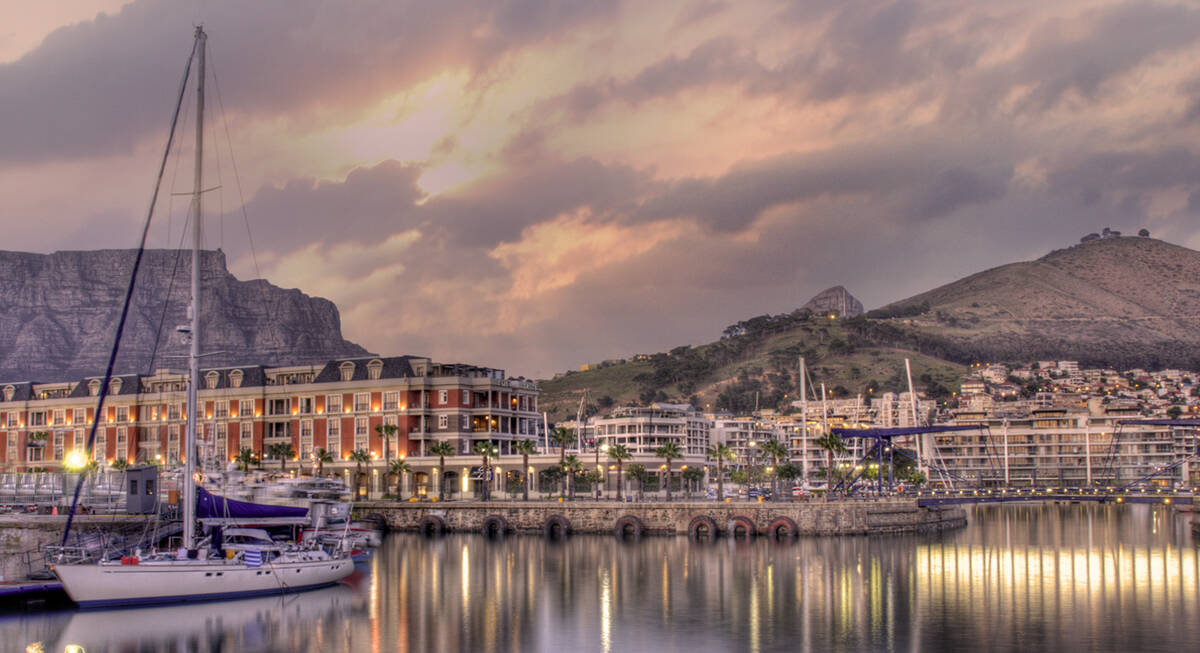
Leopard Safari
13 days • 4 locations VICTORIA FALLS AIRPORT TO CAPE TOWN AIRPORT
Victoria Falls, Botswana and Cape Town – a classic southern African itinerary combining luxury, wilderness, safari and culture. We can't think of a better way to spend two weeks.
US$12,140 - US$17,910 per person
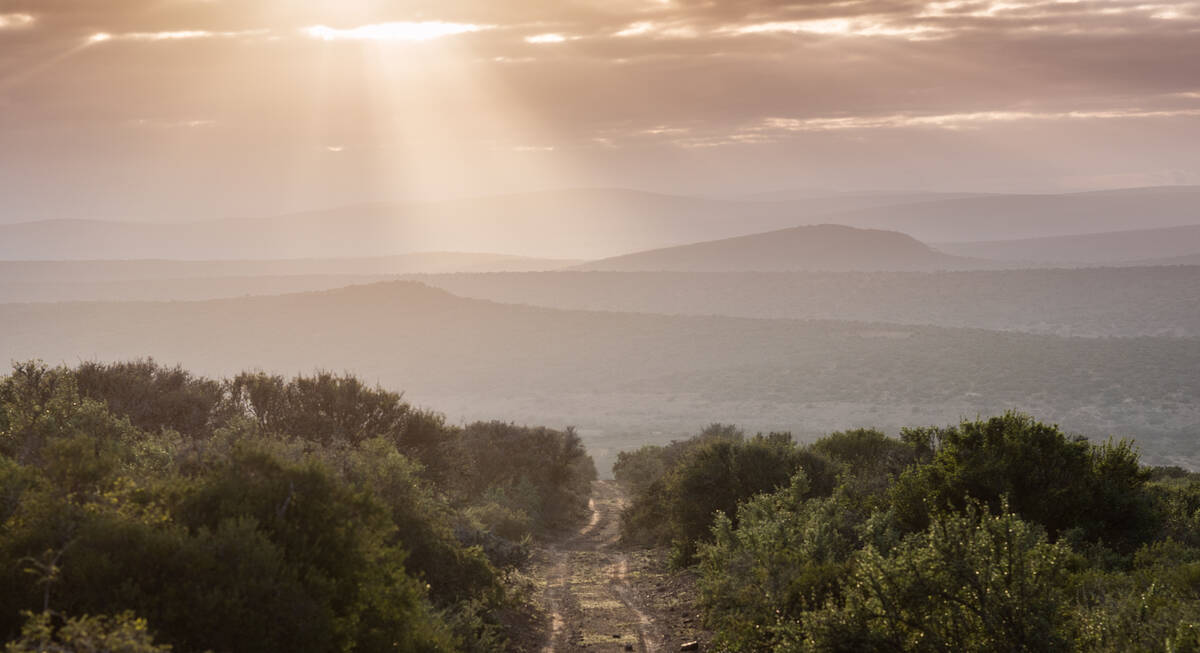
Kwandwe Self-drive Safari
3 days • 1 locations PORT ELIZABETH AIRPORT TO PORT ELIZABETH AIRPORT
An elegantly stylish lodge that is well suited to families, Kwandwe offers a range of safari activities and the chance to sight all of the "Big 5" during exploration of the Eastern Cape.
US$2,780 - US$4,330 per person
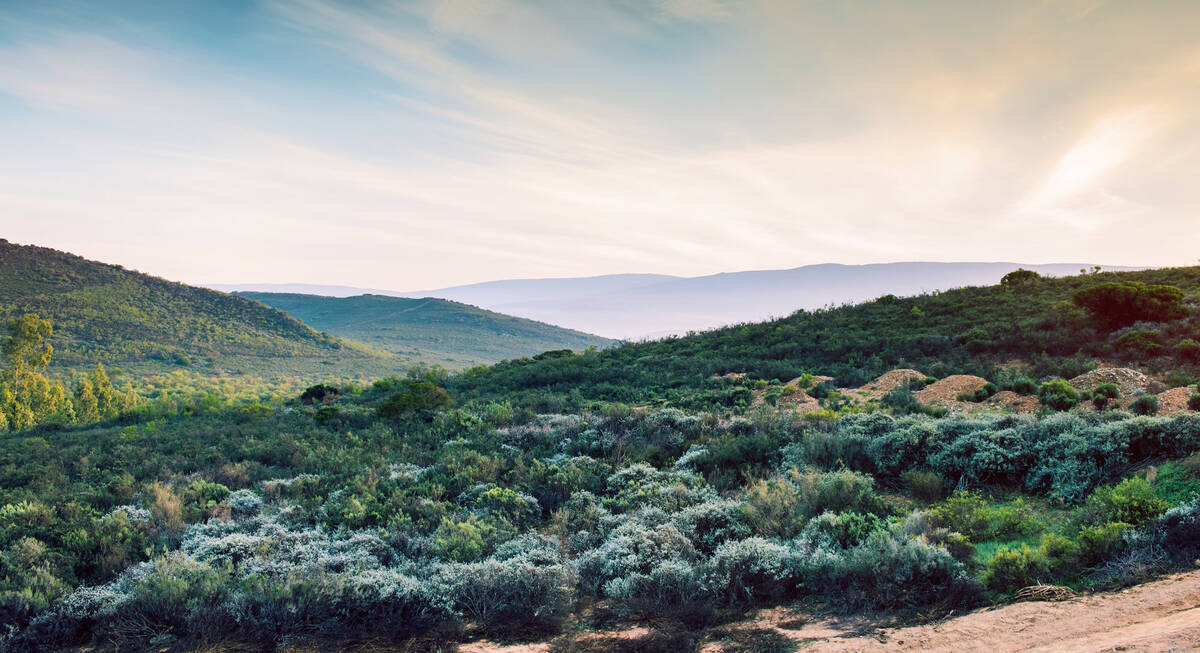
Cape Genet Self-drive Safari
20 days • 8 locations CAPE TOWN AIRPORT TO CAPE TOWN AIRPORT
Enjoy fine-dining in Cape Town, whale-watching in Hermanus, and a range of walking and water-based activities throughout De Hoop’s Nature Reserve, the Klein Karoo and Plettenberg. This relaxed self-driven safari concludes with stays in The Winelands and Namaqualand.
US$2,900 - US$3,820 per person
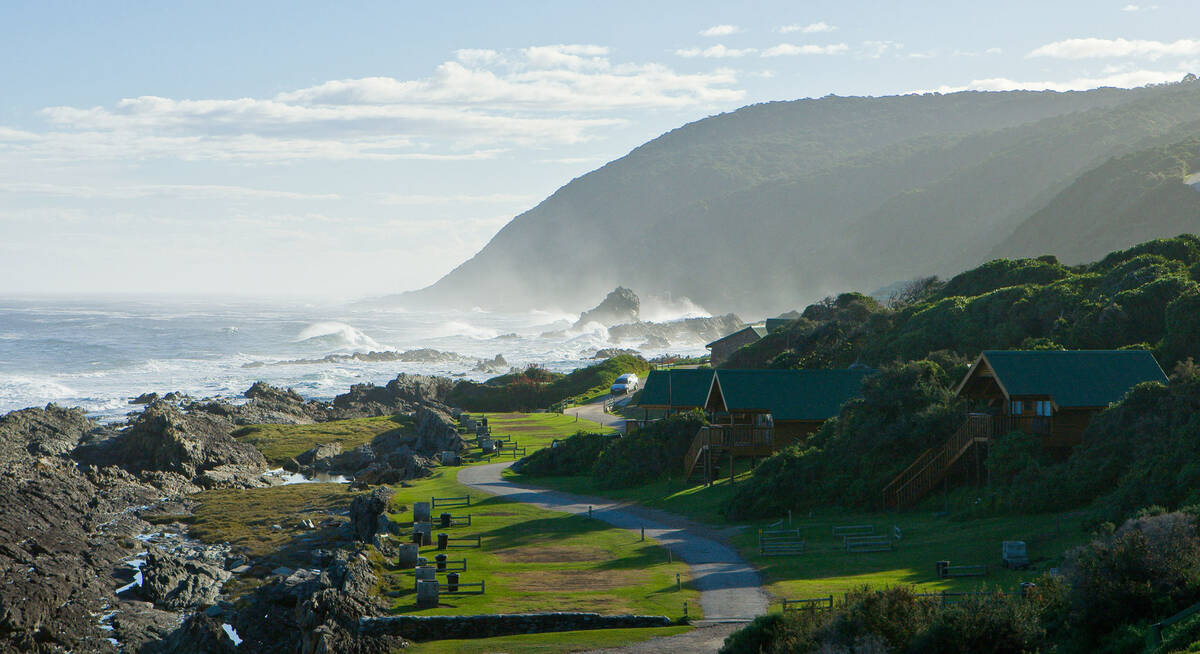
Bontebok Self-drive Safari
12 days • 5 locations CAPE TOWN AIRPORT TO PORT ELIZABETH AIRPORT
This varied and great-value self-drive trip visits Cape Town, the Winelands and diverse sections of the Garden Route, staying at great places with real local character. It’s ideal for active couples and families who want to explore the Cape’s stunning locations.
US$1,380 - US$1,700 per person
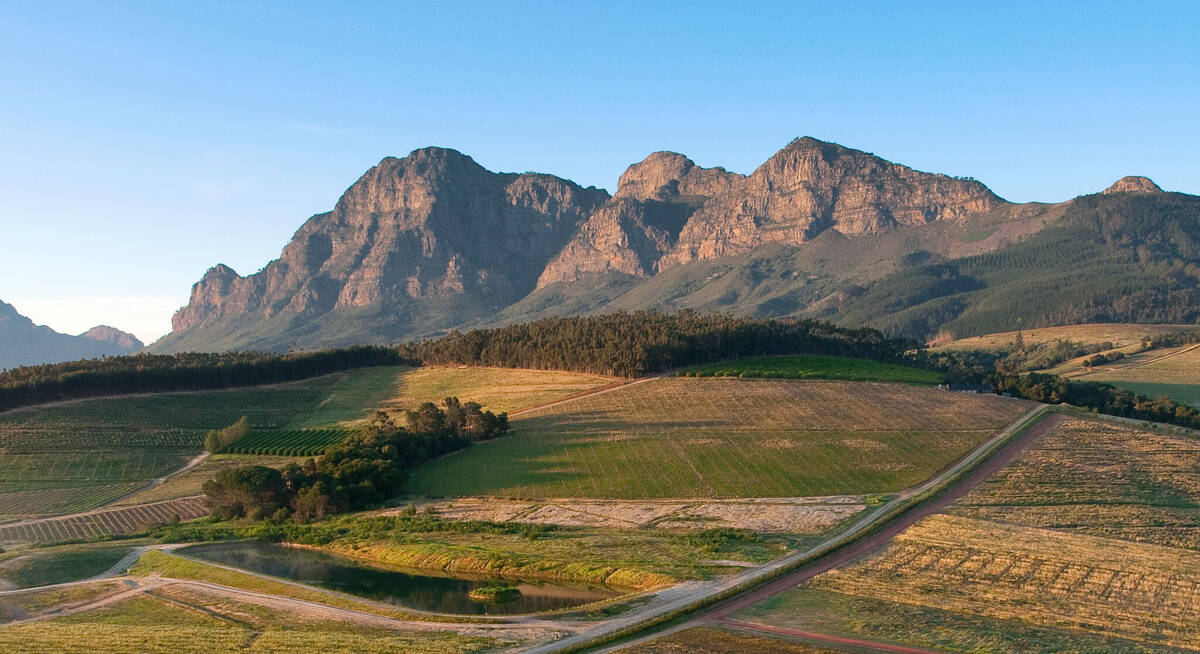
Cape Mountain Zebra Self-drive Safari
12 days • 4 locations CAPE TOWN AIRPORT TO CAPE TOWN AIRPORT
Fine dining, luxurious accommodation and a wide of range of leisurely activities make this a superbly comfortable self-driven safari. Visit the cosmopolitan Cape Town, tranquil coastal retreats, stylish wine farms and spectacularly peaceful nature reserves.
US$3,590 - US$6,670 per person
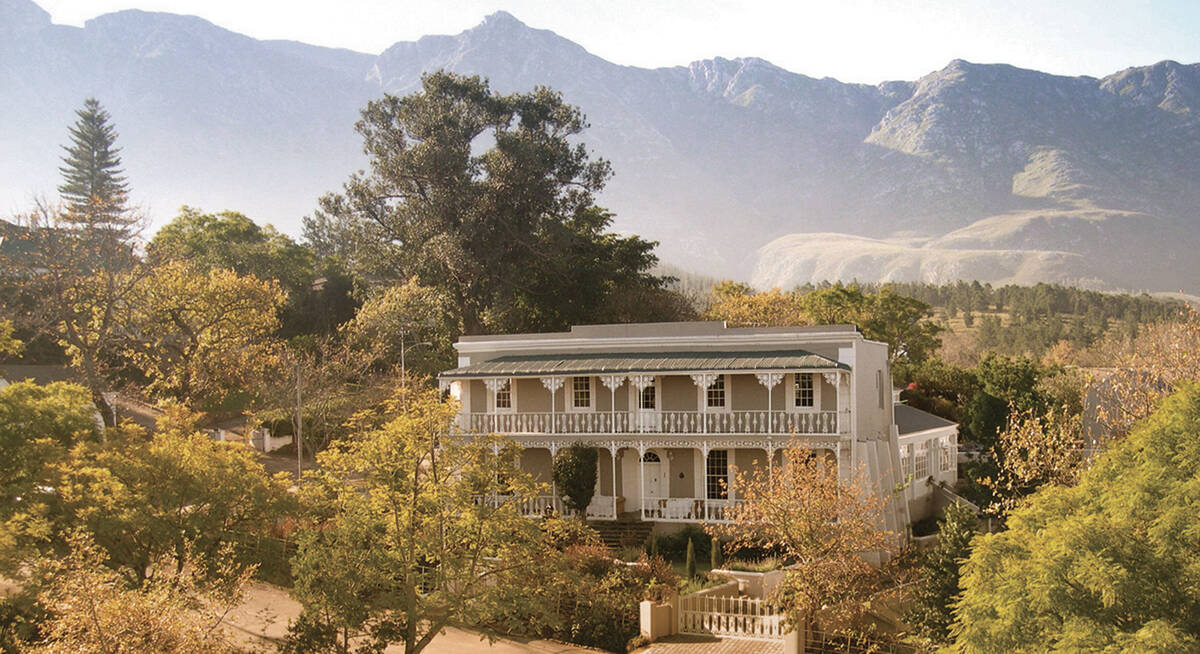
Waterbuck self-drive
12 days • 6 locations CAPE TOWN AIRPORT TO PORT ELIZABETH AIRPORT
A classic Cape and Garden Route self-drive taken at a leisurely pace and staying in charming boutique hotels. Great food and wine paired with spectacular scenery and an exciting array of activities.
US$2,370 - US$2,950 per person
View all holidays to South Africa
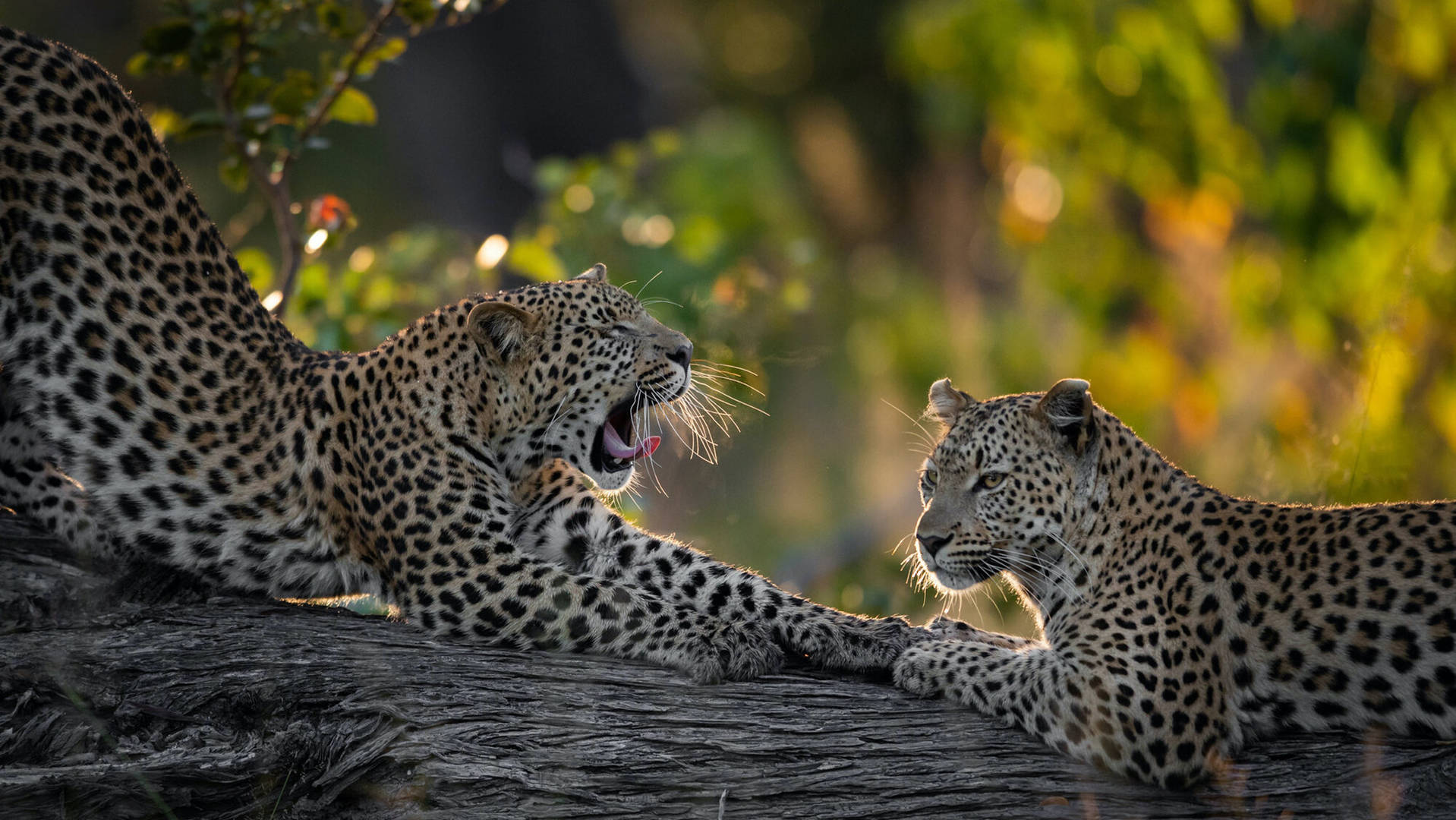
More information about leopard in our other destinations
Click here for detailed information about leopard in other countries, including the places for sighting leopard.
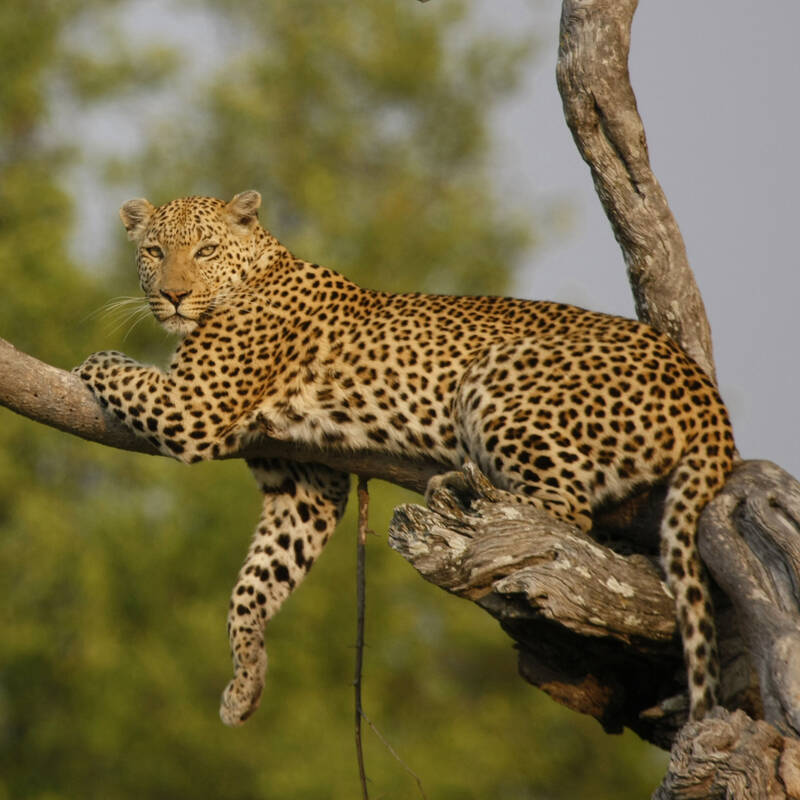
Login to Expert Africa
Sign in with password
Sign in with email link
New to Expert Africa? Create an account
Forgotten your details?
It's free & quick to set up
- Save your wish-list
- Send us an enquiry
- Pay online for your trip
- Subscribe to our newsletter
- Give us feedback on your trip
- Full site benefits of the site
Need some help? Talk to our team
Safari animals: the story of leopards (and the best places to see them)
Dec 10, 2019 • 7 min read
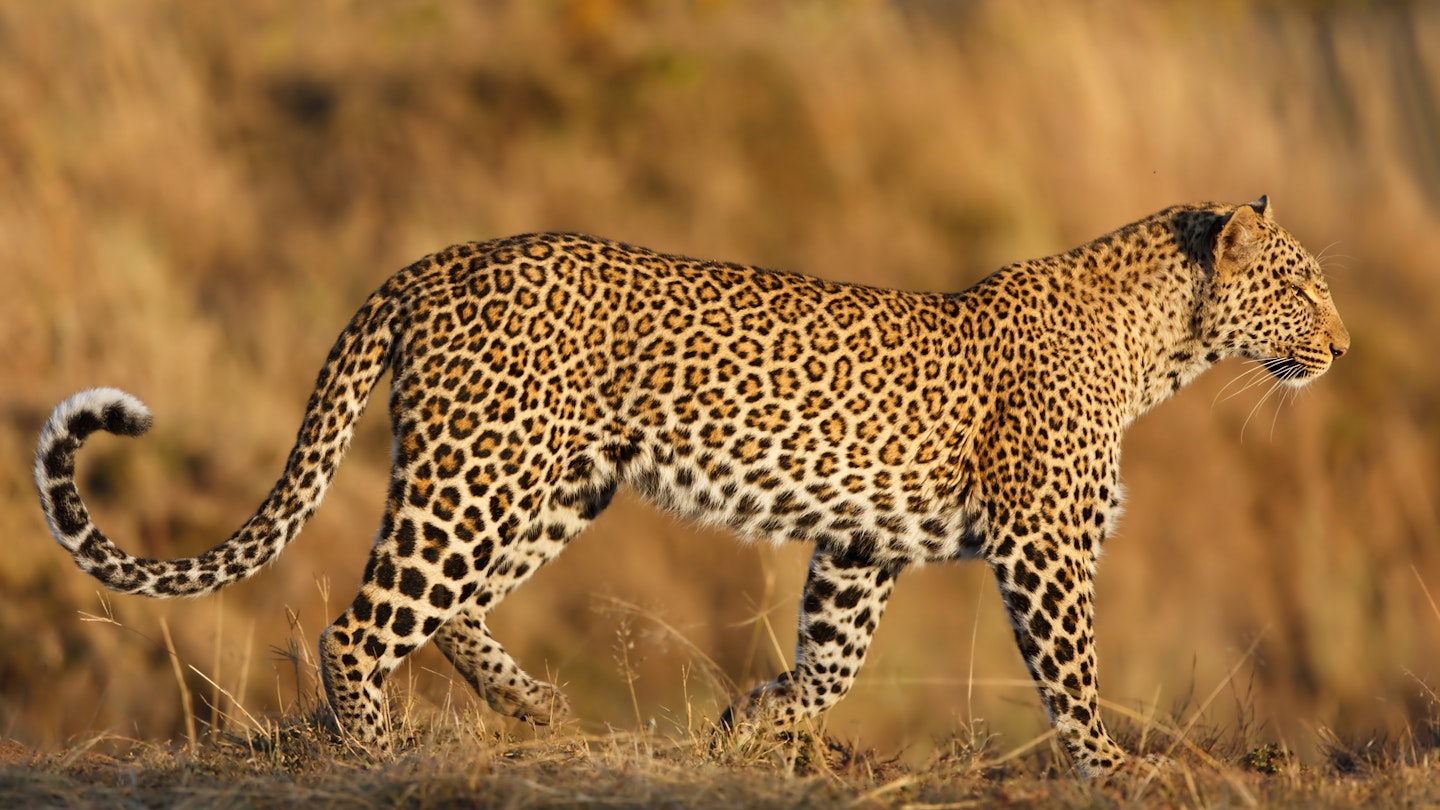
The rosettes on a leopard's coat mimic dappled shade on foliage and grasses © Maggy Meyer / Shutterstock
Leopards are among the most difficult of the big cats to see in the wilderness of Africa , which may be why they’re one of the great prizes of any safari. That, and the fact that this is one beautiful cat, the epitome of feline grace.
Leopards are masters of stealth and of camouflage, and many will watch you pass without you ever knowing that they’re there. And yet, these are the most adaptable and widespread of Africa’s cats. Read on for our snapshot of Africa’s most enigmatic big cat, and learn where best to see them.

Leopards: defined by their spots
Leopards are defined by their spots – if you see one up close, you’ll understand why their intensely beautiful coats have become a global fashion accessory, as beloved by African strongman leaders as by high-street fashionistas. The spots are actually rosettes, a circle of black spots surrounding an orange core. Leopards spend much of their time in trees or undergrowth, and these colours serve leopards well, allowing them to become one with the dappled foliage of leaves and grasses. In some forest regions, including the Aberdare Mountains in Kenya’s highlands, leopards can be almost entirely black, although sightings are extremely rare.
Read more: Where to go when: the best places to visit through 2020
Muscular and not much smaller than female lions, male leopards can reach just under three metres-long, including the tail, although around two metres is the norm. Leopards stand between 55cm- and 82cm-tall at the shoulder, and adult males can weigh as much as 90kg; females are smaller than the males – the largest female weighs in at just 42kg.

A solitary cat
There are few more solitary creatures in the animal kingdom than a male leopard. Except when mating, male leopards spend their lives alone, either roaming in search of a territory or holding fast to one that they will fight to protect. Females are similar – solitary by preference, territorial – except when they have cubs.
Read more: Where you should go on your first safari in Africa
After a three-month pregnancy, female leopards give birth to as few as one and as many as four cubs – between 50% and 90% of these cubs will die during their first year, falling prey to spotted hyenas, lions, baboons and wandering male leopards eager to mate with the mother. The cubs remain wholly dependent on their mothers for their first year of life. The mothers begin to wean the cubs after a couple of months, and by four months the cubs are only eating meat from animals killed by their mother. As the cubs grow, the mother will teach them the skills of hunting – for both mother and offspring, this is the most social time of a leopard’s life. When 18-months or two-years-old, a young leopard will either leave its mother or the mother will force it out to make its own way in the world and find its own territory.
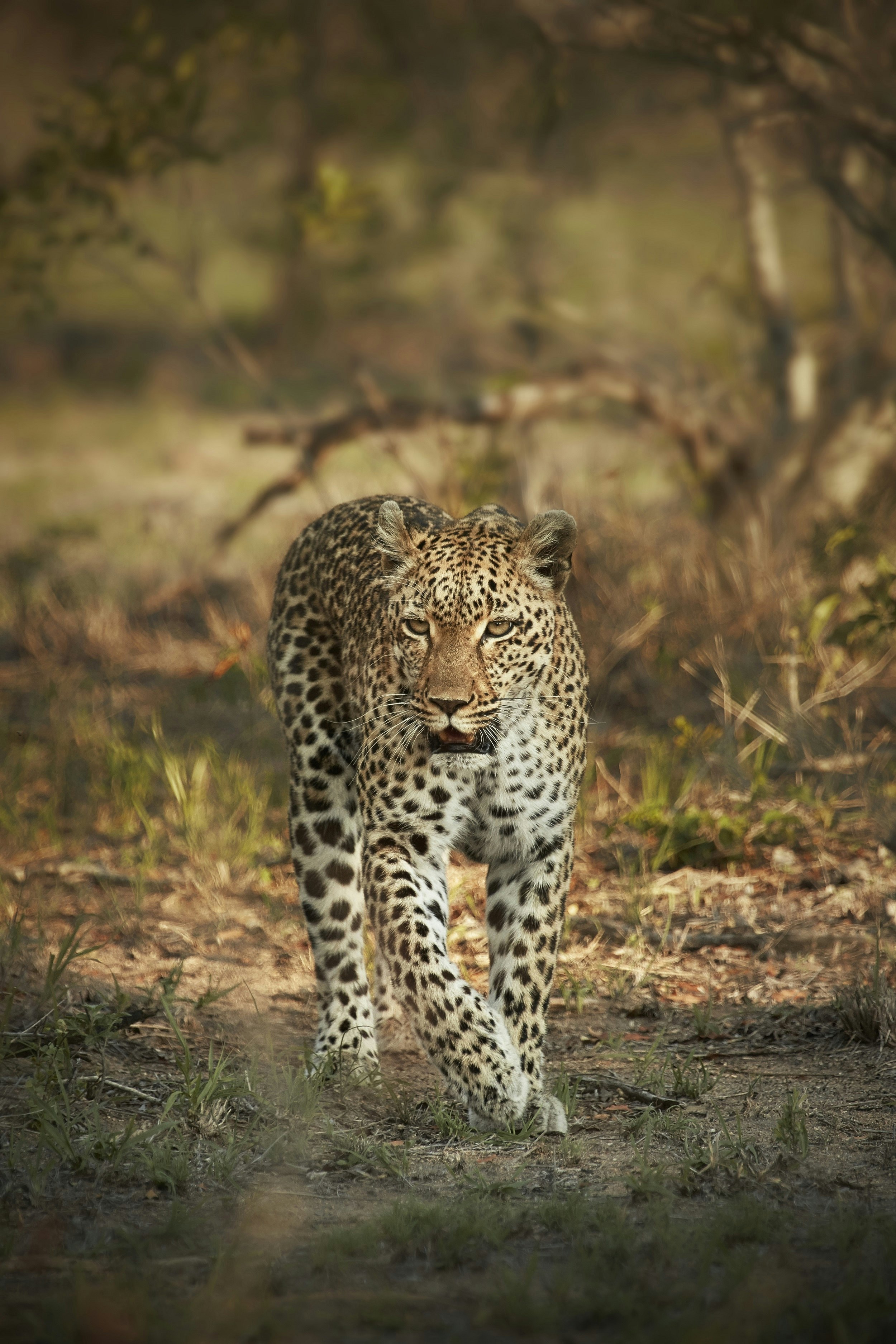
The skill of the ambush kill
One reason leopards have proved so adaptable is that they are willing to eat a wide range of prey – leopards have been recorded eating more than 200 different species. That said, a leopard has clear preferences: in Africa, impala, springbok and/or nyala routinely make up more than half of a leopard’s diet. They also commonly eat warthogs, zebras, wildebeest and steenboks. Anything larger than these species would ordinarily be too big for a lone leopard to kill and eat, although one exceptionally strong leopard was recorded bringing down a 900kg eland, the largest of all antelope species. Leopards will also kill cubs of rival predators, including lions, cheetahs and hyenas, while forest-dwelling leopards also eat primates.
Leopards frequently live in close proximity to human settlements, which means that leopards can come into conflict with people when the former kills domestic livestock and dogs. Attacks on people by leopards are rare.
Read more: A day on safari in Africa: what you can expect in camp and in the wild
Leopards are predominantly ambush hunters, usually after having stalked to within four to five metres of their prey. For all of their stealth and ability to approach prey without detection, leopards are successful only between 5% and 38.5% of the time when trying to make a kill. When they are successful, they kill prey by suffocation, clamping their jaws around the throat and/or muzzle of their kill. Because they are solitary, leopards have learned to defend their prey from more numerous lions and hyenas by carrying the carcass up into the branches of trees – leopards are the most skilled tree-climbers of all the big cats, even when hauling twice their own body weight with them – where few other species can follow.
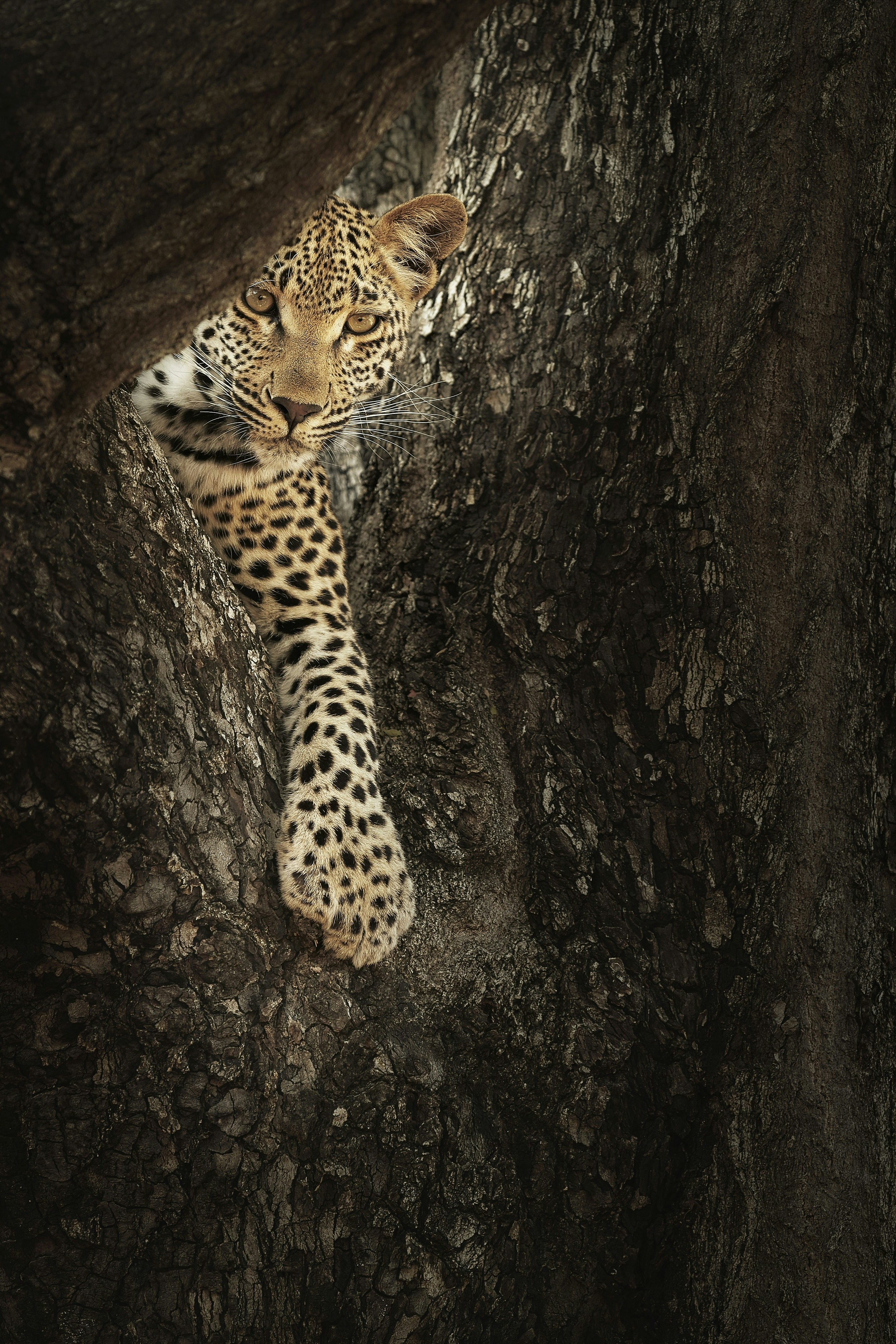
The leopard's preferred environment
In total, leopards are found in an estimated 62 countries. The stronghold of the African leopard is in East Africa and Southern Africa . The species has largely disappeared from North Africa and is rare in West Africa and Central Africa. Beyond Africa, there are important leopard populations in the Arabian Peninsula, Iran, India and Siberia; the Amur leopard is one of the most critically endangered sub-species of cats anywhere on earth.
Read more: Are you ready for a self-drive safari in Africa?
Leopards prefer woodlands – they need cover in order to stalk their prey – and are most often found in the trees and other foliage along riverbanks. In some places, like along the Seronera River in Tanzania’s Serengeti National Park where there are many leopards, a leopard’s territory will be quite small and extend along the river’s shoreline; the smallest recorded territory for a leopard is 5.6 sq km. In contrast, out in the arid Kalahari of Botswana and Namibia , where water and prey are scarce, a leopard’s home range can extend across 2750 sq km.
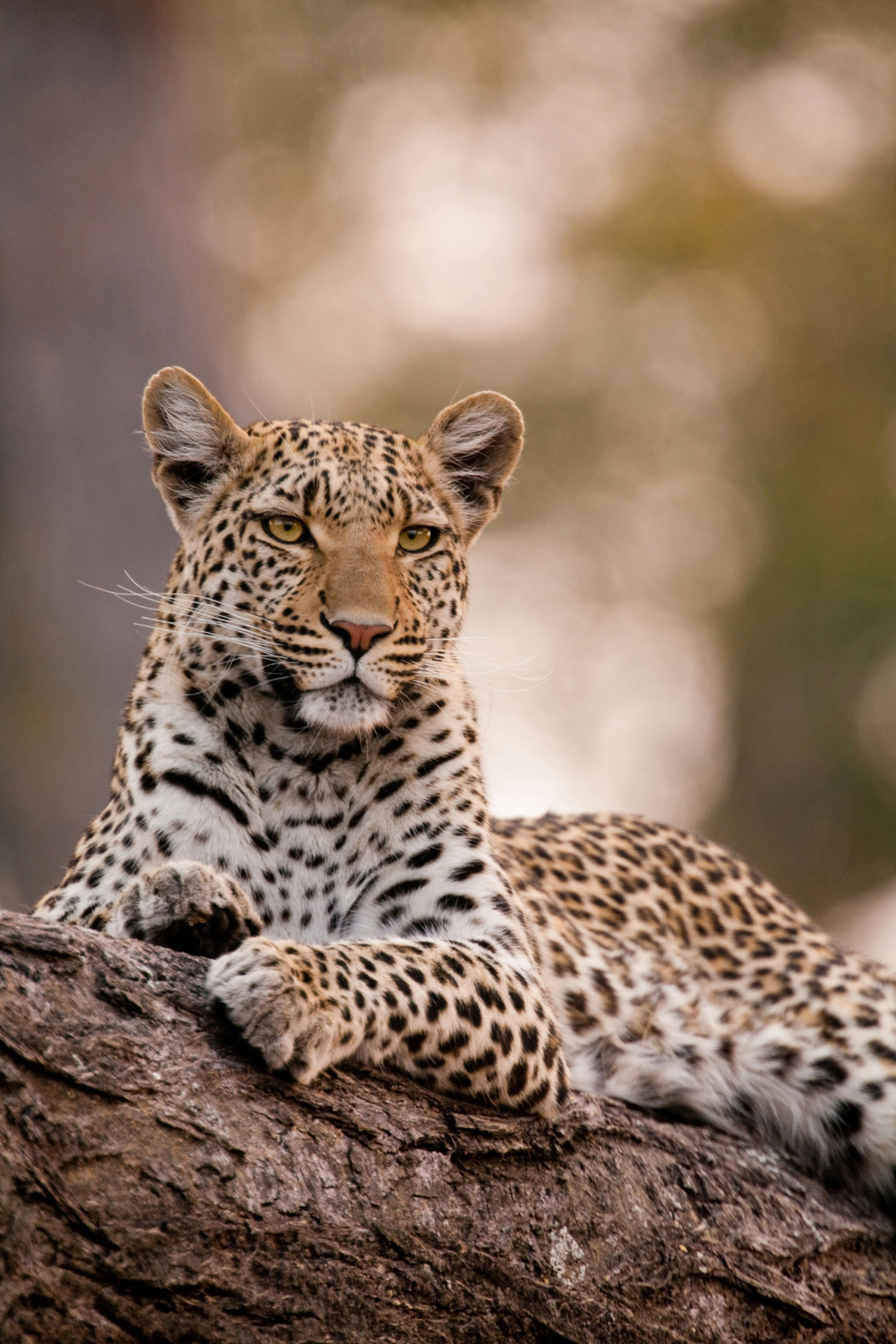
The best places to see leopards
Botswana: Botswana is excellent for spotting leopards, and a testament to the leopard’s adaptability – leopards are commonly seen in watery habitats like Chobe National Park and the Okavango Delta , but also in the desert-like Central Kalahari Game Reserve (CKGR). Kenya: Kenya ’s parks are prime leopard-watching areas. Leopards are present throughout the country, but sightings are most common in the Masai Mara National Reserve and the surrounding community-run conservancies , as well as Lake Nakuru and Tsavo West national parks. Malawi: An emerging safari destination, Malawi deserves special mention for Nyika National Park , home to more than 100 leopards and often spotted on night wildlife drives. Namibia: Plenty of leopards call Namibia home, but they’re generally more elusive than elsewhere. Try the private reserves such as Okonjima and Erindi. The floodlit waterholes in Etosha National Park are also decent shouts after dark. South Africa: Leopards are found across the country, but the northeast is best, especially in Kruger National Park and the surrounding reserves (such as Sabi Sand ). Elsewhere, try Mapungubwe National Park , Madikwe Game Reserve or Kgalagadi Transfrontier Park . Tanzania: Tanzania’s Serengeti is one of the best places on the planet for watching leopards. Sightings are also possible in Tarangire National Park , Selous Game Reserve , Katavi National Park and elsewhere. Zambia: The national parks of Kafue and South Luangwa Parks are known for their leopard sightings. Zimbabwe: The national parks of Mana Pools and Hwange have healthy leopard populations, though sightings are not as common as you might expect.
Leopards in peril?
The leopard’s strengths – the beauty of its coat, the adaptability that allows it to live across many different habitats and close to humans – also puts it in harm’s way. Leopards are much sought-after by trophy hunters. They are also often killed in retaliation for killing livestock. And they are also highly susceptible to the clearing of forests. The leopard is currently listed as Vulnerable by the International Union for the Conservation of Nature (IUCN).
Read more: Turning myth into reality: the white lions of Timbavati
Cat conservation NGO Panthera has implemented one particularly inventive measure that has been a critical conservation success story in South Africa and Zambia. In the former, a leopard-skin shawl or cape has long been the traditional attire for male members of the five-million-strong Zulu Shembe Church. But with leopards increasingly under threat, Panthera created, and then introduced, an imitation faux-leopard-skin alternative that has been embraced by the church’s leadership and most members. A similar approach in Barotseland, close to Liuwa Plain National Park in southwestern Zambia, has seen the Barotse Royal Establishment agree to replace real pelts with faux fur in their elaborate annual procession between their wet and dry season headquarters.
Related articles: Safari animals: the story of lions (and the best places to see them) Safari animals: the story of rhinos (and the best places to see them) Safari animals: the story of elephants (and the best places to see them) Safari animals: the story of cheetahs (and the best places to see them)
Explore related stories
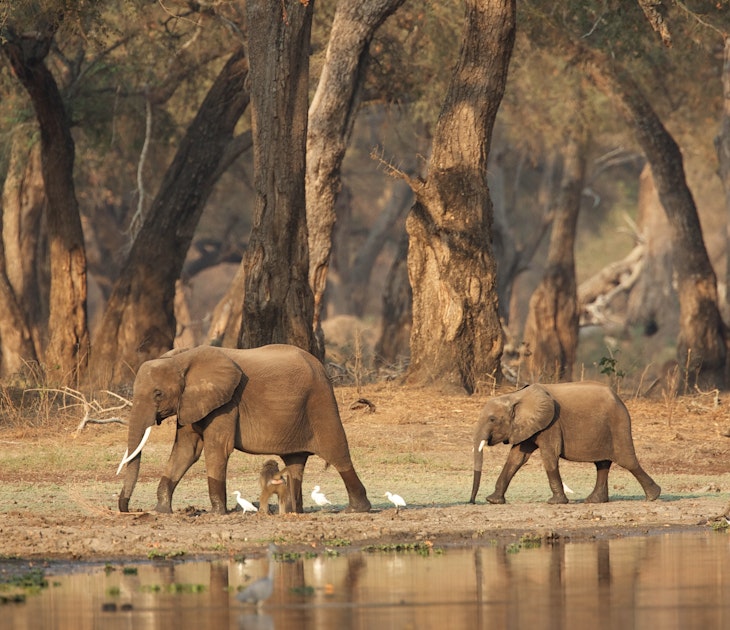
National Parks
Apr 25, 2024 • 7 min read
The African elephant is perhaps the most enduring symbol of nature’s grace and fragility. Here’s where to spot one (or many) in the wild.

Mar 20, 2024 • 8 min read

Mar 4, 2024 • 8 min read

Feb 20, 2024 • 17 min read
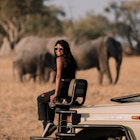
Jan 31, 2024 • 6 min read
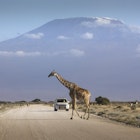
Dec 13, 2023 • 9 min read
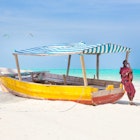
Nov 22, 2023 • 9 min read

Oct 29, 2023 • 12 min read
Oct 16, 2023 • 9 min read
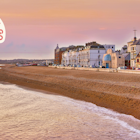
Aug 16, 2023 • 6 min read
- Activities & Things To Do
- Attractions
- Wildlife Encounters
- Restaurants and Eateries
- Reviews and Visitors’ Perspectives
- Travelling with Kids
- Travelling Tips
- Visitorials: We Love South Africa
- Weddings in South Africa
- Western Cape
- KwaZulu Natal
- Eastern Cape
- The Garden Route
- Limpopo Province
- North West Province
- Northern Cape
- South Africa Accommodation
- South Africa Hotels
- Guest Houses
- Bed & Breakfasts
- Self Catering Accommodation
- Interests & Special Needs
- Western Cape Accommodation
- KwaZulu Natal Accommodation
- Gauteng Accommodation
- Eastern Cape Accommodation
- Free State Accommodation
- Garden Route Accommodation
- Limpopo Accommodation
- Mpumalanga Accommodation
- North West Accommodation
- Northern Cape Accommodation
- Johannesburg
- Port Elizabeth
- Kruger Park
- Cape Winelands
- Drakensberg
- Garden Route
- Getting to South Africa
- Tourist Attractions
- World Heritage Sites
- Botanical Gardens
- Wildlife of South Africa
- Birdlife of South Africa
- Plant Life in South Africa
- Adventures & Outdoor Activities
- Restaurants in South Africa
- Things To Do
- South Africa’s Hiking Trails
- Game Reserves
- Health Resorts & Spas
- Golf Courses
- Wine Estates

10 Top Places to see Leopard in South Africa
The leopard : a solitary creature that because of its preference for living in dense bush, and its nocturnal habits, remains well hidden and seldom, if ever, seen earning it the labels: secretive and elusive.
They are strong, comfortable in trees, and adept climbers who think nothing of hauling their kill up into branches. Closely related to lions , tigers and jaguars they are listed as Near Threatened on the IUCN Red List . Outside of Africa, many of them are endangered.
There is a long history in South Africa of conflict between farmers with live stock and leopards. There is also little information about leopard populations or their conservation status.
Tourists who come to South Africa expecting leopard interaction are disappointed. Whilst numerous places offer up close and personal moments with elephant, lions and cheetah, leopards very seldom put in an appearance for photo moments.
On the whole, a bit of sleuth work might pay off if you intend spotting a leopard.
But you are more likely to see leopard in South Africa at one of these 10 places

Baviaanskloof Mega-Reserve
It is no secret that there is a long history of conflict between stock farmers and conservation authorities over the leopard in the Baviaanskloof . In 2010 studies indicated that only between thirty and thirty-five leopards remained in the 300 000 hectare mega-reserve.
One of Cape Action’s projects is to develop a better understanding of the nature of this problem. As a visitor there is little chance of spotting a leopard, but you can, hopefully, soon walk the path of the leopard and follow their spoor on the soon-to-be-opened Leopard Trail – a 5-day hiking trail through parts of the World Heritage Site only accessible on foot, with overnight in chalets.
Kalahari Gemsbok National Park
The South African portion of the Kgalagadi Transfrontier Park , the Kalahari Gemsbok National Park, is a place of predators – roughly 200 cheetahs, 450 lions and 150 leopards dominate the sandune and scrubland-ridden landscape that knows no borders between South Africa and Botswana. Leopards in the south-western portion of the Kgalagadi have the largest recorded ranges in the world.

Karoo National Park
Since the reintroduction of lions into the Karoo National Park – the first in over 170 years – this park that lies in the Great Karoo, a rather unforgiving landscape dominated by the Nuweveld Mountains, has become a whole lot more interesting to visitors.
The Cape mountain zebra, the endangered black rhino, riverine rabbit, and the leopard come in at a close second as attractions to the reserve, whilst the 20 pairs of black eagle mean that birders particularly love this rugged landscape.
Leshiba Wilderness , Soutpansberg Mountains
The Soutpansberg is said to have one of the highest leopard densities in Africa. In similar vein to the Baviaanskloof there are consistent conflicts between farmers and the predators resulting in a high mortality rate of leopards.
Places like Leshiba Wilderness Game Farm, where one can walk without restriction and unguided in amongst the animals, offers a high canopy forest with over 335 species of trees offering shelter to the leopard, seldom seen, but nonetheless present. Leshiba stretches along the top of the western Soutpansberg Mountains – ideal leopard habitat.

Nambiti Game Conservancy
Whilst Nambiti today boasts Big 5 viewing, it was not always so. The leopard is the only of the wildlife to have always frequented the area, even when it was mostly cattle and game farms. Nambiti has also released further leopards into the reserve.
Despite this, sightings are rare and the closest you may come to them is footprints. However the conservancy is home to the Kwa Cheetah breeding project that, whilst focusing on cheetah, includes Vega – a young leopard male brought to the reserve as a cub.
Phinda private game reserve, close to Hluhluwe-iMfolozi
Along with many of the other reserves that boast the Big 5, catching a glimpse of leopards at Phinda is erratic at best. Sighting guarantees do not come easy when it is the leopard you are after, but Phinda tracks cheetah, lion and leopard on a daily basis.
As a result the reserve is regarded as KwaZulu Natal’s answer to Sabi Sand; lion and leopard sightings are plentiful. The other draw card to Phinda is experiencing the Big 5 in lush surroundings – subtropical woodlands, grasslands, mountains and wetlands make game viewing a very different experience to the drier regions further north.

Plettenberg Bay Game Reserve
Home to four of the big five, including the leopard, Plettenberg Bay Game Reserve is the southern Cape’s largest game reserve, close to the coast. For those who cannot make it further north for Big Five game viewing, this is a wonderful space in which to see game.
Sabi Sand (Mala Mala) , Kruger Park
The 65 000 hectare private game reserve lies on the south-western corner of the Kruger National Park , with no fences between it and Kruger. Leopards are by far the main attraction of the reserve.
They are said to be so accustomed to vehicles that they barely notice if a game drive follows them through the bush whilst in the midst of a hunt. Sabi provides photographic safaris for capturing lion and leopard on film, so sure are they of their up-close leopard sightings.

The Cape Leopard Trust
The isolated, vulnerable Cape leopard population occurs in the mountains of the Northern, Eastern and Western Cape. They are so seldom seen that even Dr Quinton Martins, the man behind the Cape Leopard Trust, has spotted them only seven times in the Cederberg during his research of the last ten years.
The Trust offers guided environmental day trips into some of the many nature reserves of the Western Cape in which leopards are found. You may not see a leopard, but you will learn a great deal about them.
Shamwari Private Game Reserve
Just 75 kilometres outside of Port Elizabeth , Shamwari has won the World’s Leading Safari and Game Reserve, and Conservation Company awards numerous times.
The reserve is not only home to the Big 5, including the leopard, but also gives sanctuary to several leopards and lions discovered in poor conditions in circuses or zoos around the world as part of the Born Free Foundation, which has two centres at Shamwari. Guests to the game reserve have access to these rescued animals. A chance to see leopards up close.
Tsitsikamma National Park
Leopards of the Tsitsikamma and Outeniqua forests keep well below the radar, their presence virtually undetected. Of the lion, rhino, hyenas and other large mammals that used to frequent the area, it is only the leopard and elephants that remain – neither of them are obvious about their whereabouts.
Numbers are not conclusive, but a 2009 study indicated that there were fewer than 30 leopards left in Tsitsikamma , due mostly to conflict with farmers. There are a number of ongoing projects to support both farmers and leopards.

South Africa Travel Plans
- South Africa accommodation
- South Africa Things to Do
- South Africa Travel
Further Reading...

Good Hope Nursery – at which we do a succulent walk, almost have tea and find rare plants

Saturday walks in the Cape

Meeting The Sharks in Durban
Do the langa tag - a township tour with an art angle, where to see windmills in south africa - 6 historic windmills, 2 mock mills, and one museum, sa-venues.com.

TOP DESTINATIONS
- Kruger Park
- Okavango Delta
- Serengeti National Park
- Victoria Falls
TOP COUNTRIES
- South Africa
TRAVEL DEALS
View All Travel Deals
SOUTHERN AFRICA
East africa, indian ocean islands, top experiences.
- Beach Holidays
- Family Safaris
- Honeymoon Safaris
- Desert Safaris
- Luxury Rail Safaris
- Multi-Generational Safaris
- Positive Impact Safaris
- Photographic Safaris
- Walking Safaris
WILDLIFE SAFARI
- Big Five Safaris
- Birding Safaris
- Gorilla Trekking Safaris
- Migration Safaris
- Mobile Camping Safaris
- Horseback Safaris
FEATURED EXPERIENCES
Comfort levels, property types.
- Tented Camps
- Boutique Hotels
Featured Safari Collections
- Elewana Collection
- The Safari Collection
- Great Plains
GET TO KNOW US
- Meet The Team
- Pricing Explained
- Traveller Reviews
- Traveller Stories
- Why Book With Us?
- HerdTracker
- Safari Cost Calculator
- South Africa In 360
- Trusted Safari Partners
What are you looking for?
- Safaris & Tours
- Destinations
- Experiences
- Accommodations
- Why book with us?
Hello traveller!
It's in Cape Town now.
We're sorry. Our safari planners aren't available now. Our office hours are 08:00 - 19:00 (GMT+2).
Call us to speak to an experienced safari planner.
Alternatively, we recommend...
Schedule a phone or Zoom call with one of our safari planners
Complete our travel enquiry form to connect with a safari planner
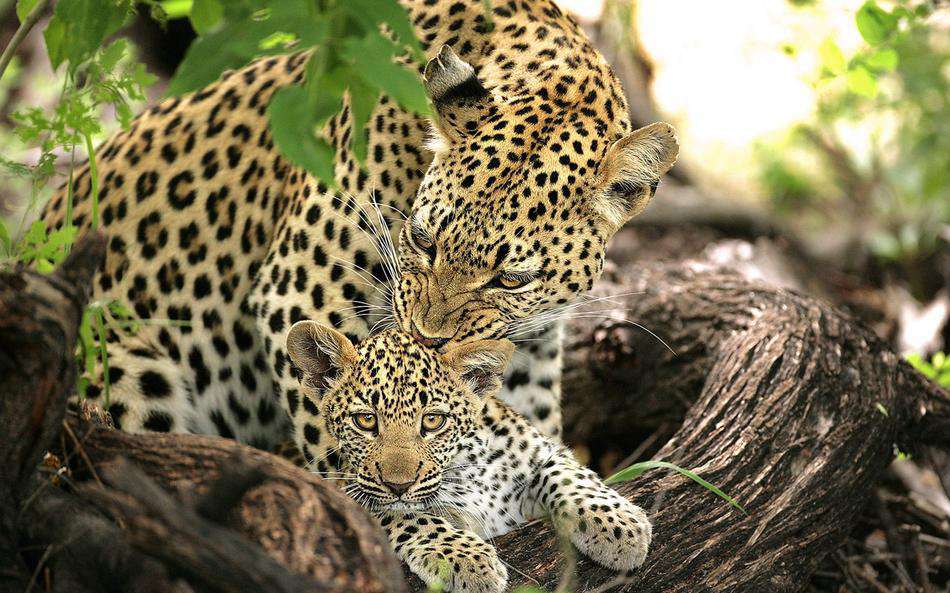
The Best Places to Spot Leopard in South Africa

Author: Megan Warrington - 2 June 2017
Last Update: 30 January 2024
Part of the South Africa Safari Vacation & Explore South Africa & African Safari Collection
Leopards are considered to be very secretive and elusive. This is ironical as of all the big cats, they are considered to be the most geographically widespread. Their elusiveness is contributed to by the fact that they are very shy animals. They are solitary living in well- defined territories. They mark their territories with urine and leave claw marks on trees to keep other leopards at bay.
Mainly, they are nocturnal and spend the day hidden on trees or in caves. If you a lucky enough, you may spot a leopard draped on tree trunks. You may also see them feasting on a kill. They are great climbers and carry their prey high up the trees. They do this to avoid being disturbed by other predators while feeding. They exhibit great beauty and elegance and are a must see while on safari in Southern Africa . Make sure to compare the costs of the safaris as well before you go leopard spotting!
Sabi Sands Game Reserve
Our resident leopard cub has been seen regularly and is turning out to be a superstar. #mattporterwildlifephotography #leopard #scotia #bigcats #wildlife #nikonwildlife #nikon7100 #sigmalenses #sabisandsgamereserve #naturephotography #natureza #createwithnikon #leopardcub #animalbabies A post shared by Matt Porter Wild Photography (@mattporterwildlifephotography) on Apr 8, 2017 at 12:07am PDT
The reserve is located adjacent to Kruger National Park and the two share an unfenced border. Leopards are the main attraction at the reserve. Wildlife enthusiasts, researchers, and photographers get a chance to view the big cats at a close range .
The Sabi leopards are somehow accustomed to vehicles and are thus not so elusive. They are not likely to hide at the sound of an approaching vehicle. They can be easily viewed, photographed or filmed.
Phinda Private Game Reserve
The Phinda Private Game Reserve is located in KwaZulu -Natal close to the Indian Ocean. The privately owned reserve is popular for its abundant wildlife and amazing vegetation. The grazers are numerous and there is enough prey for the big cats. Leopard sightings at the reserve are common.
Kalahari Gemsbok National Park
The park is considered a great habitat for leopards. It forms the South African portion of the renowned Kgalagadi Park . Many leopard sightings have been recorded here.
Shamwari Private Game Reserve
It is located 75 kilometers from Port Elizabeth. The Reserve has been recognized as the World’s leading safari and game reserve on many occasions. It has worn the Best Conservation Company awards numerous times.
It is home to the big five, leopards included. It also offers refuge to leopards and lions rescued from harsh places. The Born Free Foundation has two centers at Shamwari where rescued cats are kept.
Upon visiting the renowned parks and reserves in Southern Africa, you will have high chances of spotting a leopard.
Plettenberg Bay Game Reserve
It is the largest game reserve in Southern Cape. The park is home to four of the big five including the leopard. Many visitors tend to head north when seeking the elusive cat. However, you can easily trace a leopard in Southern Cape which is much close to the ocean and highly accessible.
Top three Private Safari Destinations in South Africa
Five Reasons why you Should Visit the Manyeleti Game Reserve
Related Safari Tours
These popular itineraries can be customised to match your budget and how many people you're planning to travel with..
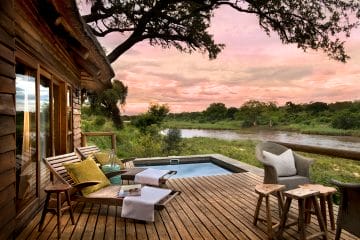
Best of South Africa and Botswana Safari
Southern Africa South Africa Cape Town Kruger National Park Johannesburg Botswana
From $ 7450 /USD
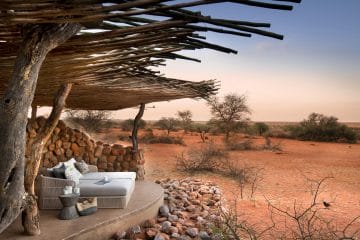
Bespoke Luxury Safari in South Africa
South Africa Cape Town Johannesburg Kruger National Park
From $ 13100 /USD
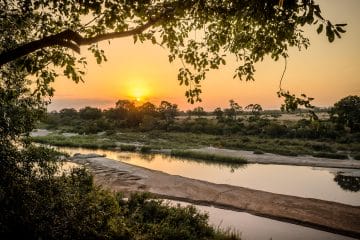
A grandiose journey through Cape Town, the Wine...
South Africa Cape Town Franschhoek Sabi Sands
From $ 14000 /USD
Why travel with us?
Recent reviews from travellers who planned and booked their africa trips with discover africa safaris, wonderful experience just what we were looking for..
13 Day Namibia Self-Drive Safari Review
Anne, South Africa 14 Nov 2023
Unbelievable 6 day self drive tour around namibia.
Self Drive Namibia Safari Review
Paul Curasi, United States 03 Oct 2023
Excellent service.
6 Day Authentic Sabi Sand, Timbavati & Panorama Route Holiday Review
Andrea Anderson, Singapore 15 Mar 2023
Outstanding, knowledgeable, trustworthy, friendly and very customer responsive service.
Botswana Safari Review
Alana, United Kingdom 23 Apr 2022
Exceptional service for our last minute family holiday.
Maldives Family Holiday Review
Lexi, South Africa 10 Aug 2017
Exceptional trip in africa.
Review of Sanctuary Lodges
Jon Nafziger, United States 19 Jun 2017
Registered Members of these Organizations
USEFUL LINKS
- Safari Tours
- Accommodation
- Why Book with us?
- Content Collaborations
- Safari Cost Estimator Tool
- Wildebeest Migration
- Privacy Policy
- Website Terms of Use
POPULAR COUNTRIES
- View All Countries
POPULAR DESTINATIONS
- View All Destinations
- Cape Town Holidays
- Kruger National Park
- Etosha National Park
- Chobe National Park
TRAVEL BLOGS
- Travel News Digest, 26 April: Namibia Adds Visa-on-Arrival in Walvis Bay, Uganda Deforestation Concerns
- The Best of Kenyan Cuisine: 10 Dishes to Savour on your next Safari
- Norse Atlantic Adds New Direct Flight to Cape Town
- Travel News Digest, 19 April: SA Airports Celebrated, Rhino Poaching Concerns, Cape Town ‘Big Six’ Appeal
- FastJet Adds Surcharge to Vic Falls Route
OUR LOCATION
- 2nd floor, Tygervalley Chambers One, 27 Willie van Schoor Avenue, Bellville, Cape Town , 7530

- Our Community
- Conservation
- Accommodation
- Bush Cuisine
- Your Day in the African Bush
- Nearby Activities
- Spa & Wellness
- Our Location
- Sabi Sand Nature Reserve
- 6-Night Luxury Bush Duo
- 8-Night Luxury Bush Trilogy
- Kruger to Cape Luxury Escape Package
- Kruger to Coast Bush & Beach Package
- Contact Details
- Directions & Transfers
- Travel Tips
- What You Need To Know

The Ultimate Leopard Safari
Here in the bush, we are fortunate to witness these spectacular creatures in their natural habitat. There is nothing quite like stumbling across a leopard and her cubs making their way across the sand tracks, or watching a large male as he drags an impala up a tree.
If seeing leopards is high up on your bucket list, you’re in luck! Leopard Hills is one of the best places to see leopards in Africa. We have a relaxed population of leopards who call this territory home. Your guide will even know a few by name, thanks to regular sightings.

Here are a few individuals you can ask your guide about:
- Ravenscourt is a large male leopard – the big boss of the area. He lost his mother at a year old – most leopards stay with their mothers until the age of 2 – and has been fending for himself ever since. He is named after an area in the Sabi Sand Game Reserve and his spirit ensures he’s not one to be messed with.
- You might stumble across Khokovela , a gorgeous young leopardess who has successfully raised cubs in this uncompromising world. She is the daughter of Thlangisa and sister of Basile . These fierce females are formidable hunters and skilled survivors. Thlangisa means ‘playful one.’ She is one of the most successful mothers we have on the reserve. Raising many cubs has given her endless patience and she is one of the most relaxed leopards we have on the reserve. Sighting her is a real treat!
- Basile , Khokovela’s sister, has a light complexion. Thus, her name means “the light one”. She is a favourite of Stuart Buy, one of the field guides at Leopard Hills.
- Thamba hails from the northern Sabi, but has established his territory in our area. He is the son of Tingana , a formidable male from the north.

There are many more characters our guides would love to tell you about. You can read more detail about the Sabi Sand Leopards .
Watching these cats interact and thrive gives us immense joy. Sadly, as we are merely witnesses to the unfolding of their life paths, there are moments of heartache, too. Nature can seem like an unforgiving place, but it is the one place where the rules, though harsh at times, apply to all equally.
We are constantly in awe of these animals’ ability to survive against all odds and consider ourselves the best place for leopard safaris in South Africa if your aim is to sight colourful, curious characters with big hearts.

Fun facts about leopards
1.) Successful leopards can live up to 15 years in the bush. 2.) Leopards are largely silent, unlike their cousin the lion, and sometimes emit a cough-like call. 3.) They like rocky outcrops and dense riverine bush. 4.) After lions, leopards are the second biggest African cat and can weigh between 60 and 70 kg. 5.) Leopards rely on the element of surprise to catch their prey – either via stalking or ambush attacks. They can manage bursts of speed of up to 60 km/h, but won’t keep up the chase for very long. Remember, energy conservation is a key element of survival in the wild. 6.) Leopards can haul animals heavier than themselves up a tree. 7.) On average, a leopard consumes about 400 kg of meat per year, which equates to about 20 kills.
Stay with us
Book your stay at Leopard Hills for an incredible luxury safari experience jam-packed with breathtaking wildlife sightings, including that of the elusive leopard.
If you’re interested in experiencing these cats in the wild, please don’t hesitate to get in touch with our reservations desk: [email protected] .
Alternatively, click here and make use of the quick and seamless online booking process and start imagining your ideal vacation today.
We look forward to welcoming you to Leopard Hills Private Game Reserve.
Sources: www.krugerpark.co.za; www.britannica.com
Previous Story
Adventure Tours in Mpumalanga
9 March 2023
safari game rangers
Elephant Behaviour: Getting to know the herd
13 April 2023
Leave a Reply Cancel reply
Your email address will not be published. Required fields are marked *
- Game Drives
Tagged with

Award-winning Leopard Hills is located in the western sector of the renowned Sabi Sand Game Reserve.
RESERVATIONS +27 (0) 11 326 0739 [email protected]
THE LODGE +27 (0) 13 735 5142
- Paygate T&Cs
- GREATER KRUGER PARK
- Kings Camp Private Game Reserve
- Leopard Hills Private Game Reserve
- Madikwe Hills Private Game Lodge
- Tuningi Safari Lodge
- Cape Town Hollow
- Hollow on the Square
- GARDEN ROUTE
- Knysna Hollow
- KRUGER PARK & SURROUNDS
- Hippo Hollow
- Perry’s Bridge Hollow
- Casterbridge Hollow
Our Adventures
- Mpumalanga Helicopter Co.
- Elephant Whispers
- Seasons in Africa Transfers & Excursions
- Seasons in Africa Charter Co.
- Livingstone’s Adventure

© 2024 Leopard Hills Private Game Reserve | Privacy Policy
Design & Development by Focus Online
- Destinations
- Travel Guides

South African safaris: Lions, leopards and luxury lodges
)
Roxanne de Bruyn
South Africa
- South African safari: know before you go
Planning on booking a safari tour in South Africa? This 4-day tour of the Kruger National Park starts and finishes in Johannesburg and gives you the best chance of seeing South Africa's Big Five up close.
Seeing wild animals in their natural habitat during a safari is easily one of the most magical travel experiences. While you may have seen these animals at the zoo, watching them in their own space is a completely different experience.
You can watch the big cats lazing in the sun, cheater cubs rolling around together as they play, and giraffes wandering through the savannah. Crocodiles and hippos submerge themselves in murky rivers, and predators chew on the remnants of last night's dinner.
Going on safari brings a fresh perspective to life, travel and humanity - if you're thinking about going, you won't be disappointed.
South Africa is a wonderful destination to have a well-rounded safari experience with the comforts of everyday life. The game parks are large and well-maintained, and it's possible to see a huge variety of animals while you're there.
In short, South Africa is particularly well suited to travellers heading on their first safari. Here's what you need to know to plan your trip.
)
The Big Five and other animals
So, what animals can you expect to see on safari in South Africa? Well, a huge range, to be honest. South Africa is home to over 500 bird species, 100 species of reptile and 150 mammal species, including the Big Five and the endangered African wild dog.
Seeing the Big Five - lions, leopards, rhinos, elephants and Cape buffalo - is the ultimate safari challenge. These animals were historically thought to be the most difficult to hunt and catching them was an accomplishment. You'll find your game rangers do their best to track them down and you're likely to see all of them if you visit the Kruger National Park.
You'll probably see a range of other animals too, including zebra, giraffe, cheetahs, kudu (deer with large ears and impressive, curling horns), springbok (South Africa's national animal), warthogs, crocodiles, hippos, various birdlife and many more.
)
Is it worth booking a safari tour in South Africa?
It's very easy to travel in South Africa independently and many game lodges will help you organise game drives and other safari experiences. It's also possible to go on a self-drive safari - just hire a car and drive through the game park - however, you're likely to see many more animals if you go on game drives. The rangers know the reserves very well and communicate with each other about where specific animals have been seen.
You don't need to go on a safari tour to go on a game drive. It's very possible to book your accommodation and game drives separately and, if you stay at some lodges, a couple of game drives will be included. Saying that, booking a multi-day safari tour does give you the ability to see multiple game reserves and enjoy the experience without dealing with any of the logistics yourself.
Safari tours can also be a good way to travel between destinations (e.g. Victoria Falls to Johannesburg) and see other points of interest along the way. Just keep in mind that they are often more expensive than organising your trip yourself.
Some popular safari tours in South Africa:
Garden Route and Addo Elephant Park - 5 nights
Kruger National Park and Blyde River Canyon - 4 nights
Kruger safari from Johannesburg - 3 nights
Private South to North Kruger tour - 5 nights
)
Game drives in South Africa
The best way to see wildlife is by going on a game drive. You'll usually be in a jeep with a small group of travellers, a ranger and a tracker. The rangers usually know the game park very well and can find animals which you may not spot if you're driving by yourself.
Going on a game drive also lets you see larger animals up close. Animals are accustomed to seeing vehicles in their territories and often perceive the jeep as a single, large animal. Just remember to follow the ranger's advice and stay in the vehicle at all times, including your car if you're self driving.
Full-day safari
Spend a full day driving through the game park looking for animals. These are especially popular in the Kruger National Park and usually include a stop at a café for lunch. Just keep in mind that it can be a long day and animals usually sleep during the middle of the day, when it's warmest.
Book a full day safari in the Kruger National Park
Book a full day safari from Johannesburg
Book a full day safari from Cape Town
Sunrise game drive
Mornings are a beautiful time to go on safari. It's not too hot, you'll often see the animals out and about and there's something magical about seeing the bush first thing in the morning. The downside is that it leaves very early in the morning and it can be cold, so dress appropriately.
Book a morning safari in Kruger National Park
Book a sunrise game drive in the Sabi Sand Private Game Reserve.
)
Night game drive
These are often also called sundowner or afternoon game drives. Head out in the evening and enjoy a drink while you watch the sunset in the bush. Then watch the nocturnal animals coming out. It does get cold, so be sure to dress in layers and wear and jacket.
Book a sunset safari in the Kruger National Park.
Self-drive safari
Drive yourself through the game parks and see animals as you go. Depending on the day, you may see many animals as you drive through the park, other times not so many. Try to go at cooler times, and wait by the water holes to see what comes out.
One of the challenges of self-driving is that you don't know the reserve as well as the rangers and you don't get tips on where the animals are. Some people try to follow the jeeps, however that isn't necessarily a good way to find animals. If you do decide to self-drive, stay in your car at all times - the animals aren't as friendly up close as they can seem from further away.
Walking safari
Leave the jeep behind and wander through the bush on foot. This is a particularly good option if you're interested in bird-watching and seeing some of the local insects up close and learning more about animal life-cycles and the ecology of the area.
Book a walking safari in the Kruger National Park
Book a giraffe walking safari in the Addo Valley
Book a walking safari in iSimangaliso Wetland Park
)
Safari lodges in South Africa
There's a wide range of accommodation if you want to go on safari. You can camp in the Kruger National Park and some other reserves and there are often bungalows or hotels available outside the reserves. However, if you want the quintessential safari experience, staying at a lodge is the way to go.
Lodges are usually located within private game parks or wildlife sanctuaries, meaning you can see animals up close and personal during your stay. Some of the private reserves won't have the big cats near the lodge, while others will have several rangers on hand. The lodges range from comfortable to luxurious and usually offer a pool and bush views. They are generally all inclusive with breakfast, dinner and sometimes a couple of game drives included.
Staying at at a safari lodge is a remarkable experience. You may find yourself visited by animals during your stay - I've personally turned around to see zebra, warthogs, kudu, giraffes and bushbabies wandering by. Many have panoramic views over the bush, often with animals visible in the distance. It's peaceful and serene and the modern world and everyday life seems very far away. You'll find a few recommendations for safari lodges in the sections below.
)
Visiting the Kruger National Park
Kruger National Park is one of the largest national parks in the world. Almost the size of Belgium, visiting Kruger gives you a sense of how much space the animals need and the size of their territories. It's vast and you won't be able to see the entire park in a day. Due to the size, it also takes longer to find the animals, so expect to spend a lot of time driving.
A popular destination with well-maintained roads, it's easy to visit the Kruger National Park by yourself. It's a good option for a self-drive safari, although finding animals can be a bit hit and miss due to the size. It can also get busy, especially during holiday periods, so you may want to time your visit accordingly.
There are also a number of private reserves on the outskirts of Kruger National Park. If you stay at a lodge in the private reserve, you can also go see the animals or see the game drives within the smaller reserve. Popular options are Sabi Sands, Timbavati Private Nature Reserve, Thornybush Private Game Reserve and Kapama Private Game Reserve - see the next section for more information on these.
For more affordable accommodation, you can stay in the campgrounds in the Kruger National Park itself, or in the nearby towns of Hazyview (near the Panorama Route and Sabi Sand) or Marloth Park (near the southern entrance of the park). Accommodation options range from hotels and game lodges to self catering options, suitable for the whole family.
One of the great things about visiting the Kruger National Park is that there's also a lot to do in the wider Mpumalanga area. If you're driving from Johannesburg, the Panoramic Route is beautiful and you can stop at the Blyde River Canyon, Bourke's Luck Potholes and Berlin Falls. Plan to spend around 6-7 hours on the route, including stops to admire the stunning views.
Kruger National Park game drives and tours:
Morning safari
Sunset safari
Safari tour from Johannesburg
)
Private game reserves in South Africa
If you're staying at a game lodge, there's a good chance it'll be situated in a private game reserve. Private game reserves are smaller than the larger game parks, which means the rangers will have a much better idea of where the animals will be. If you are short on time or if you have small children, a private reserve could be a good option.
Private reserves are usually reserved for guests staying in the reserves, and they are also much less crowded at peak times. The lodges at these reserves are also very expensive, particularly the ones bordering the Kruger National Park. They usually offer luxury accommodation and amenities, with daily game drives and all meals included. Visiting a private reserve is an excellent splurge trip for a special occasion.
Saying that, you don't get quite the same appreciation for space and scale in the private reserves as you get when travelling through the Kruger National Park. They are still well worth considering, particularly if you're travelling during the school holidays or want to be sure to see the Big Five in a day or two.
Private reserves near the Kruger National Park
Sabi Sands Game Reserve : Stay at Elephant Plains Game Lodge with views of the waterhole
Thornybush Private Game Reserve : Stay at KwaMbili Game Lodge offering chalets or glamping
Kapama Private Game Reserve : Stay at Kapama River Lodge in the middle of the bush
Timbavati Private Nature Reserve : Stay at Simbavati River Lodge in 2-bedroom family suites or safari tents
Manyeleti Private Game Reserve : Stay at Buffelshoek Tented Camp in the middle of the bush (no fences).
Makalali Private Game Reserve: Stay at aha Makalali Private Game Lodge in private camps or hotel suites.
Klaserie Private Nature Reserve : Stay at Klaserie Drift with suites overlooking the garden or river.
)
Safaris near Cape Town
If your travels in South Africa are focused around Cape Town, it's still possible to experience a safari during your trip. There are several excellent wildlife reserves near Cape Town, which are perfect for a short break out of the city. While a couple of them are close enough to visit as a day trip, it's definitely worth spending a day or two overnight to take your time, see all the animals, and relax in the bush.
Sanbona Wildlife Reserve
About 3.5 hours from Cape Town, Sanbona is famous for its white lions, which can be spotted in the wild. You'll also be able to see cheetahs, elephants, and zebras and there are four lodges on-site to choose from.
Stay onsite at the luxury lodge or at the Whitehouse in nearby Barrydale for a more affordable option
Aquila Private Game Reserve
Just two hours' from Cape Town, you'll find the Aquila Private Game Reserve which offers visitors the chance to see the Big Five. Visitors can also spend time with rehabilitated animals at the on-site Animal Rescue Centre.
Stay onsite at the Aquila Private Game Reserve and Spa or visit on a day trip from Cape Town .
Gondwana Private Game Reserve
Gondwana Private Game Reserve is about four hours out of Cape Town and makes a wonderful stop of the scenic coastal Garden Route. Again, you can see the Big Five and you can choose between staying at Kwena Lodge, in bungalows or glamping.
Stay onsite in a luxury bush villa with a spa and infinity pool.
)
Best time to go on safari in South Africa
The best time to go on safari in South Africa is from June to October, during the dry season. If you're heading to the game reserves in the northeast of the country (including Kruger), you'll find temperate temperatures. The drier weather conditions mean shorter grass and fewer watering holes, which makes wildlife easier to see.
How long should I spend on my safari trip?
How long you spend on safari depends on how many game parks you want to go to and the number of animals you want to see. Most people will find 3-5 days plenty - staying three nights means you'll have two full days at the reserve and there's a good chance you'll do an evening safari the day you arrive.
If you're interested in wildlife safari or want the opportunity to do a few nature walks, you may want to stay a bit longer.
- Introduction
- The animals
- Safari tours
- Game drives
- Safari lodges
- Kruger National Park
- Private reserves
- Near Cape Town
Share this article
)
Author - Roxanne de Bruyn
Roxanne is the founder and editor of Faraway Worlds. She is a freelance writer and guidebook author and has written for several travel publications, including Lonely Planet, TripAdvisor and The Culture Trip. With a background in communications, she has studied ancient history, comparative religion and international development, and has a particular interest in sustainable tourism.
Originally from South Africa, Roxanne has travelled widely and loves learning the stories of the places she visits. She enjoys cooking, dance and yoga, and usually travels with her husband and young son. She is based in New Zealand.
Last Updated 12 September 2023

- Bespoke Itineraries
- Planned Itineraries
- Wilderness Dreaming

- Bespoke Best of Kenya
- Bespoke Best of Tanzania
- Bespoke Best of Zambia
- Bespoke Best of Zimbabwe
- Bespoke Best of Botswana
- Bespoke Best of Namibia
- Bespoke Best of South Africa
- Specialised safaris
- Okavango Delta Photo Safari
- Ngorongoro Crater and Serengeti Safari
- Wild Ruaha Photo Safari
- Zambia Forest Secrets
- Botswana & South Africa Predator Workshop
- Leopards of Londolozi
- Masai Mara Predator Safari
- Why book your safari with Greg
- What to pack for safari
Guest Testimonials
- Guest Speaking
- Selected press
- Conservation and Charity
- Documentary
This leopard photo safari takes you to the best place to see leopards in Africa and is the best African leopard photography safari you can do. Indulge in leopard photography to your heart’s content on this South Africa photography safari. Scroll down to see a portfolio from this safari and click on any image to enlarge.
This South Africa photography safari is offered as a private safari only by filling out the form at the end of this page. It is highly recommend that you extend your stay in South Africa to see even more leopards and wildlife. Watch this YouTube video from a South Africa ‘green season leopard safari’. Extending is super easy, we simply drive to the neighbouring reserves.
If you not looking for a private safari but still want to photograph leopards, then take a look at this Africa photo safari .
A Leopard Photo Safari Experience
The Leopards Of Londolozi is a one-of-a-kind safari that has been specifically designed around leopard photography and the green season. You will be taken to the best place to see leopards in Africa, Londolozi Private Game Reserve. This South Africa photography safari takes place exclusively in Londolozi, where leopard photography and filming first began. It is still the ultimate home of Africa’s most enigmatic and striking predator, the leopard.
Almost all other African leopard photography safaris run during the South African winter months from (June-Sep). At this time the bush is dry and brown. This leopard photo safari however, runs in the South African summer, when the bush is lush and green. A leopard photo in the greenery the most beautiful photograph of a leopard you can take! This leopard photo safari will see you building a beautiful and unique portfolio of leopard photography that will really stand out from the crowd.
Londolozi has been chosen very carefully for this leopard photo safari as they have expert trackers who are able to track leopards. This is especially important in our summer months (Nov-March) when the bush is lush and green. For this safari we have secured the best ranger and tracker team at Londolozi, and both are from the Shangaan tribe.
For those of you wanting to extend your South Africa photography safari, I highly recommend adding on a few extra nights at Mala Mala Game Reserve, which is right next-door. By combining Londolozi and Mala Mala it is not uncommon to see a dozen different leopards, making this the best place to see leopards in the world! You can also extend to Botswana’s Mashatu Game Reserve which is also one of Africa’s top photo safari destinations. Another option is to extend into the Okavango Delta where your big cat photo safari can continue. Of course you can do all the above in a single safari as it makes perfect logistical sense!
Keep reading for the itinerary details and a portfolio from this leopard photo safari.
Londolozi Leopard Photo Safari Details
A 5 day (4 night) itinerary is recommended for this South Africa photography safari, but since it is booked privately, it can be as long as you like. You can also easily extend your leopard photo safari by adding on Mala Mala, Mashatu and the Okavango Delta. Simply fill out the form at the end of this page to receive your bespoke African leopard photography safari itinerary.
- ON REQUEST ONLY
- The cost and dates of this safari will depend on whether you are traveling alone or in a group, and if you choose to do any of the safari extensions listed at the bottom of this page and can be customized to your unique tastes.
- Complete the booking enquiry form
Costs on this South Africa photography safari will include all accommodation; meals; laundry; drinks (excluding premium brands and selected wines); park fees; internal flights; meet and greet service with transfers; private safari drives with exclusive vehicle use; photographic tuition and the guiding services of professional and African wildlife photographer Greg du Toit .
Not included in the cost are visas; purchases of a personal nature; staff gratuities; personal travel and medical insurance; your international flights.
40% deposit confirms your booking on this leopard photo safari .
Your Leopard Photo Safari Itinerary
- Day 2, 3, 4
Your South Africa photography safari begins in Johannesburg where from the international airport it is a short 10 minute drive to the small private Federal Airlines airport terminal and your transfer has been prearranged. Unlike other small airports in Africa, this one is pleasant and luxurious. With no long lines, you will soon be seated in a comfortable air conditioned lounge with snacks and coffee on offer. An additional luggage allowance means you do not need to worry about gear on your African leopard photography safari.
A 1 hour flight on a light aircraft will see you land at Londolozi, the best place to see leopards in Africa. This dedicated airstrip is only five minutes from your lodge and you will have time to settle in and enjoy a delicious lunch. The food at Londolozi is so good that they have even published their own cookbook!
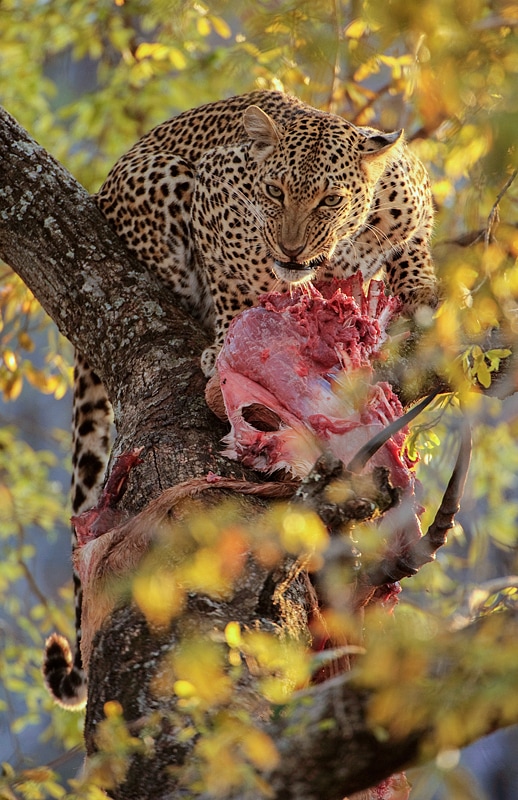
After lunch we will get our cameras and lenses ready for the first safari drive and for leopard photography! I will go through a few key checks with you so that you are ready to capture award-winning imagery from the very first drive. On this leopard photo safari we cater for all types of photographers, from the very beginner to the very advanced and skilled. Your first safari drive will not be a mere introduction as the photography will start in earnest and will only end in the dark, when we pull out the spotlights and continue photographing.
The first day on your South Africa photo safari will end around a fire and with an incredibly delicious buffet. For the health conscious there is a salad bar at Londolozi and fresh seafood. For the carnivores among you, Londolozi sources its meat from the finest butcheries in South Africa.
Your night will end with you returning to your air-conditioned room. The rooms have full power so charging is not an issue at all on this leopard photo safari).

These 3 long and beautiful summer days will be spent indulging in leopard photography at Londolozi. This is one of the original pioneering private game reserves of the eco-tourism industry in South Africa and is an unashamedly family run and stand-alone operation. The root of the word Londolozi is a Zulu word meaning ‘protector of all living things’, an ambitious conservation ethic that Londolozi embraces in its sensitivity to the natural world. The reserve is internationally recognised for its far-sighted and progressive management of land and wildlife rehabilitation as well as productive community involvement.
World renowned as one of Africa’s finest game lodges, Londolozi was the first game reserve in the world to be awarded Relais & Chateaux status , reinforcing its commitment to luxurious accommodation, fine cuisine and exceptional service. Londolozi was recognized as the #1 Hotel in the World with the Conde Nast Traveler Readers Choice Award. To wet your appetite some more, Londolozi run a very active blog here .

Our days on your African leopard photography safari begin early with a 5 am wake-up call where tea and coffee will be brought to your room. At 5h30 am we head out into the wilderness that is Londolozi and the best place to see leopards in Africa. Some days we will head south to the large open plains that are the preferred habitat of the cheetah and rhino. Other days we will cross the river and head into the north where beautiful ‘ koppies ‘ (rocky outcrops) are home to some of the finest leopard viewing in all of Africa (read more about the leopards here ). You will hardly see any other cars on this South Africa photography safari as we track down Africa’s big game.
Londolozi is a private game reserve within the Greater Kruger National Park of South Africa. Not only are there no fences but this is one of the largest ecosystems in Africa, bigger even than the Serengeti National Park, and in which we have our own private concession. The animals we will track are wild – no bait, collars or tracking devices are used. This is the real deal and you will photograph numerous leopards in their wild habitat.
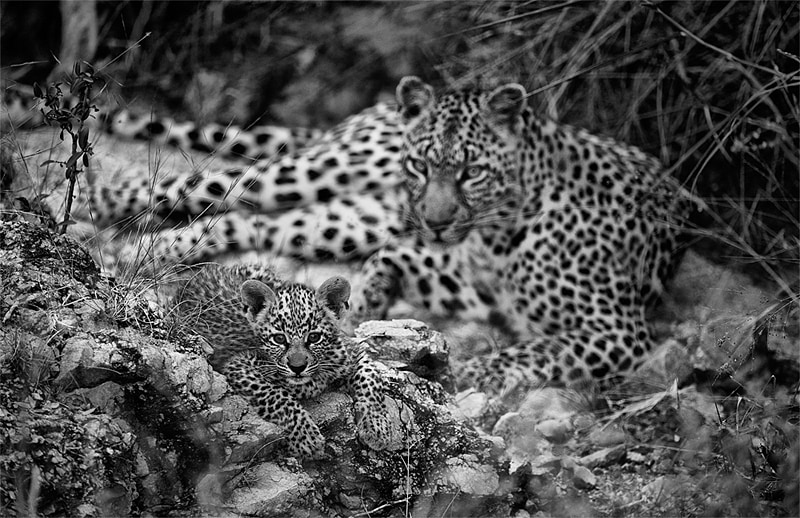
Having been born in South Africa and having visited this region my entire life, I have very carefully selected Londolozi to host this safari. Not only has Londolozi done more in terms of catering for wildlife photographers than other lodges but their land lies at the heart of a highly productive game viewing area. We are right in the middle of numerous leopard and lion territories and this is the best places in Africa to see leopards, and to photograph the BIG 5, and all the other general game – including the exciting possibility of seeing African Wild Dog. We have maximum freedom and exclusivity on this African leopard photography safari, making this a sublime safari that will see you go home with full memory cards, and memories to treasure for life.
We will have breakfast sent out to us each morning on this South Africa photography safari as we are here to photograph. When the sun is too harsh we will head back to camp and enjoy a leisurely lunch and choice South African wine (but not too much as VR and IS only work up to a point).
After a cup of tea, coffee or cappuccino, and some delicious cake, we head out on the afternoon drive at 4 pm. It is Summer time here in Africa (Nov-March) and the afternoons are long which means that the light just gets better and better. We will again track down leopards and search for cubs. Low-light photography is my specialty and I look forward to helping you photograph predators, owls and chameleons at night on this South Africa photography safari.
We will arrive back in camp after our leopard photography in time for a delicious dinner around the campfire, followed by nightcaps for those who still have energy to reminisce about the day. After turning in, the good news is that we wake the next day only to do it all again. With the long summer days it means that although this African leopard photography safari is 4 nights long, you will get 5 days worth of photography out of it.
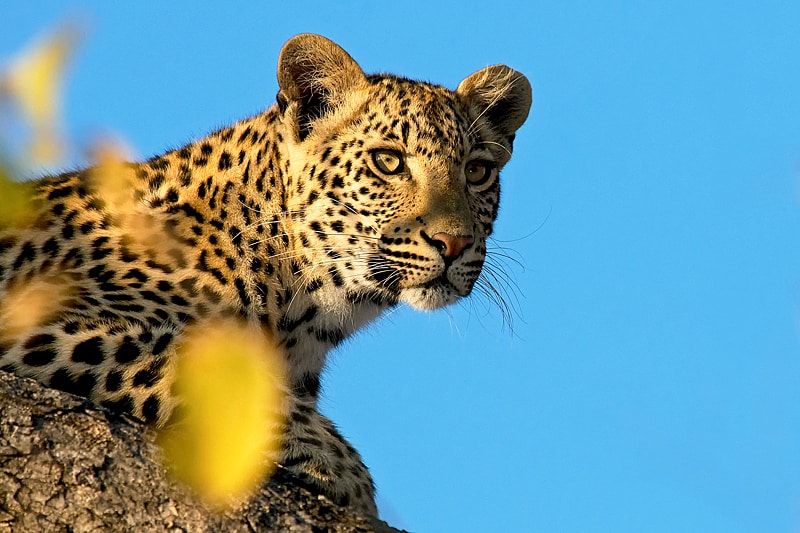
After one last safari drive, you will take a 1 hour flight back to Johannesburg for your onward travel home. For those of you not wanting to head home there are a number of exciting options to extend your South Africa photography safari. Mala Mala is just next-door, where more leopards await. A wonderful option would be to add Mashatu Game Reserve to your itinerary and where the green season can result in a spectacular bloom of yellow flowers. Or you can head up to the Okavango Delta for more leopard photography. Why not do all three of these options and make it the ultimate big cat photo safari. Another option is to do an urban photo safari in Cape Town as March is the best month weather wise.

* These private extensions are handled on a per request basis and should you wish to extend, please mention it in the contact form at the bottom of this page .
Browse the portfolio of photographs below and click on any image to enlarge.
Your photographic possibilities on this workshop

Why this African leopard photography safari is for you…

– Vehicles are an incredibly important part of any photo safari and Londolozi have extremely comfortable vehicles with soft suspension and no roof or poles to get in the way. During this exclusive African leopard photography safari, you will be able to shoot out the left and the right of the safari truck.
– The vehicles at Londolozi have custom-built beanbag platforms allowing for easy and effective camera support, so no clumsy monopods needed on this leopard photo safari.
– Londolozi have their own tracking school and with our own dedicated tracker we will track down and photograph Africa’s shyest big cat, the leopard. Tracking leopards is more than a skill, it’s an art form, making this the best place to see leopards in Africa.
– Although the focus of this safari is on leopard photography, Londolozi is a BIG 5 safari destination with the possibility of seeing African Wild Dog, plus rhino, elephant, buffalo and lion, not to mention Africa’s other iconic animals like warthog, hippopotamus, giraffe and zebra.
– This is a highly exclusive leopard photo safari and as such, you do not want lots of cars at animal sightings. At Londolozi you will seldom see other vehicles as sightings are limited to only 3 vehicles per sighting and animals are treated with the utmost respect.
– As an African wildlife photographer I have spent the last 13 years documenting the African leopard. This has resulted in published portfolios in both the BBC Wildlife and Geo magazines . On this African leopard photography safari I will share with you my recipe for photographing predators in low-light. I will not only help with camera settings and recommendations but with the positioning the vehicle to take advantage of the light and unique animal behaviour.
– The time of year for this South Africa photography safari has been carefully so as to visit Londolozi in the South African summer (Nov – March). Almost all safaris to Africa run in our winter months and this results in almost all leopard photographs looking similar. For this leopard photo safari we have chosen a time of year when there are dramatic storm skies and beautiful green backgrounds. The air is clean and the light is crisp. There might be thunder showers but it will actually aid our leopard photography as the lighting in and around these afternoon storms is simply sublime. If you would prefer to do your leopard safari during the more traditional time of winter (June/July) we can easily do this too.

– If you have not visited Africa in the Summer months, then you are in for a treat as the bush is simply bursting forth with life. The migrant birds are all here, butterflies and dung beetles are the order of the day, as are wild flowers. Bring your wide-angle lenses and macro lenses along too.
– Although the chief objective of this safari is leopard photography, we have a full itinerary and plenty of time to capture the diversity of life. There are no long distances to cover at Londolozi as the camp is situated in the heart of the reserve, which means that you have lots of opportunity to enjoy your photography. The Summer days are long which means more time in the field and more photo opportunities!
– For those of you wanting to extend your stay, Mala Mala is right next-door and Mashatu Game Reserve in Botswana is only 2 hours away. Why not make this a green season extravaganza and extend your safari to the Okavango Delta where your leopard photo safari can continue. When filling out a form at the bottom of this page, simply mention extending your safari and you will receive your own bespoke itinerary.
* Still got questions? See the FAQ I wrote about African photographic safaris .
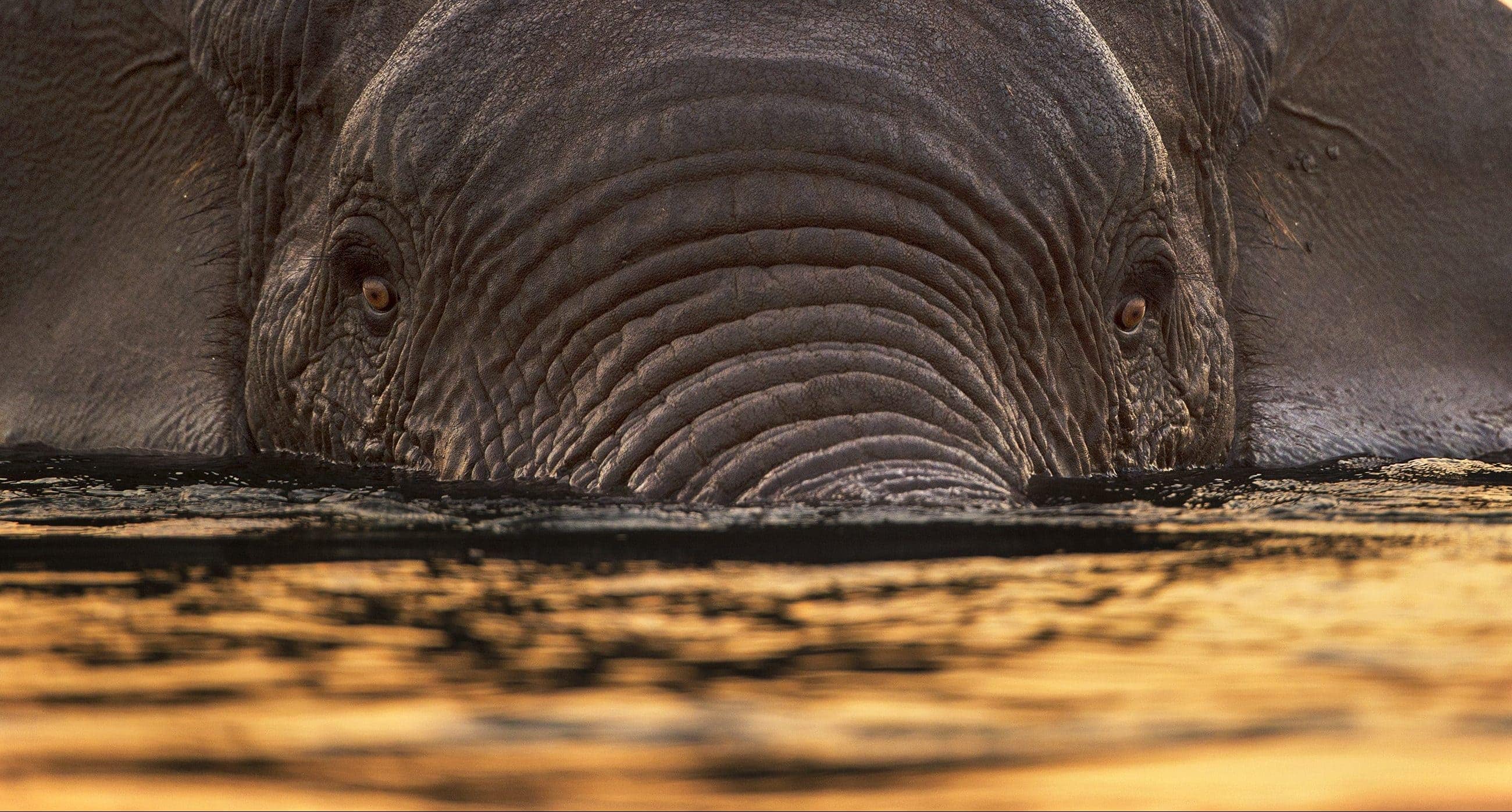
Southern Africa Predator Extensions
Explore the extensions
Brigitte Bourger (France)
Anders & lisa (denmark), follow greg, .

Secure your booking dates for 2024/ 25.
Hunt the Leopard in South Africa
Embark on an exhilarating leopard hunting safari in South Africa with us. This adventure offers you the chance to engage with one of nature’s most elusive predators in its natural habitat.
Did you Know? You can secure your hunting dates by only paying a $1,000 deposit. Use our online checkout service or talk to our team to learn more and book your hunt.
One Hunter with One Professional Hunter Daily Rates
Take advantage of our competitive rates and book your next unforgettable hunting trip with the trusted team at Huntshoek Safaris.
RATES EXCLUDE:
- All international and domestic flights
- Accommodation before and after safari dates
- Shipping & Taxidermy
- Personal Insurance
- Rifle Hire & Ammunition
- Gratuities of Professional Hunter & other Staff
RATES INCLUDE:
- Professional hunter, skinners, trackers and camp staff
- Hunting license fees
- Transport for collection and drop-off at East London Airport
- Transport for duration of safari
- Comfortable and luxury Safari camp Accommodation
- Meals, soft drinks, alcoholic beverages in moderation
- Wifi, where available
- Daily laundry
- Field preparation of trophies and delivery to the local taxidermy
- Government Tax (VAT @ 15%)
One Hunter with One Professional Hunter - DAILY RATES
Take advantage of our competitive rates and book your next hunting trip with the trusted team at Huntshoek Safaris.
This daily rate applies to a single hunter accompanied by one Pro. Hunter (PH) from the Huntshoek Safaris team.
TWO HunterS with One Professional Hunter Daily Rates
Two hunters with one professional hunter - daily rates.
This daily rate applies two hunters accompanied by one Pro. Hunter (PH) from the Huntshoek Safaris team.
Non-hunteR Daily Rates
Non-hunter daily rates.
This daily rate applies to a single observer accompanying a Hunter/ s and one Pro. Hunter (PH) from the Huntshoek Safaris team.
About The Animal
The leopard, known scientifically as Panthera pardus, is one of the most elusive and admired members of the big cat family. Renowned for its beautifully marked coat and stealthy behavior, the leopard is a symbol of mystery and elegance in the wild.
They are well-known for their rosette-patterned coat, which provides excellent camouflage in their natural habitat. They have a strong, compact body, powerful limbs, and a large skull with strong jaw muscles. Their agility and strength are key to their survival in the wild.
Leopards are solitary animals, with each individual maintaining its own territory. They are nocturnal hunters, known for their incredible stealth and the ability to adapt to various environments. Leopards are also excellent climbers, often dragging their prey up trees to keep it safe from other predators.
Other hunting species

Add to Hunt

Hunt Rhino in South Africa (PERMIT)

Hunt the Lioness in South Africa

Hunt the Lion in South Africa

Black Backed Jackal Encounter in South Africa

Caracal Encounter in South Africa

Baboon Encounter in South Africa

Hunting Cape Buffalo Bull in South Africa (Up to 42″)
Related products.

Hunt Crocodile in South Africa

Hunting Cape Buffalo Bull in South Africa (Over 42″)

Hunt the African Elephant in South Africa

Hunting FAQ’s
Satisfy your curiosity. From safety to weather, we answer a few questions that might be on your mind.
Do you need a permit to hunt in South Africa?
You need a hunting licence. You must be in possession of a valid hunting licence at all times. Stick to the hunting seasons for specified protected animal species that are proclaimed annually by the individual provinces in their hunting proclamations.
What month is it best to hunt in South Africa?
The general consensus is, therefore, that the best time to hunt in South Africa is in the winter months from May to August . Generally speaking, South African winters mean mild days with frosty nights and mornings.
How much does it cost to hunt in South Africa?
An African Hunting Safari price for an 8-day plains game hunt with 7 trophies is on average between $4000 and $7,000 . However, some additional costs need to be considered. 1. Travel cost to Africa of between $1500 – $2500.
What is the hunting weather in South Africa?
In South Africa's Eastern Cape, the weather is great for hunting, with moderate temperatures.
In March and April, it's usually between 65F and 90F. During winter, from May to August, temperatures range from 40F to 85F, but in the North, nights and early mornings can get freezing.
In September and October, the temperatures range from 65F to 100F for late-season hunting.
Are there general recommendations?
If there's ever a point where you're uncertain about any part of the safari with Huntshoek Safaris, please don't hesitate to get in touch with us directly or talk to our team on Cell: +27 83 648 3518 (Call/ WhatsApp); Email: [email protected] or via the contact form on the Contact Us page.
The Best Safari Destinations In Africa To See Leopards
By Philip Briggs | Updated December 6, 2020
Leopards are the ultimate cats: stealthy, solitary and well-camouflaged nocturnal hunters with black-on-gold rosette coats, a pugilistic build and a cussedly badass persona. The most widespread of Africa’s Big Five (a safari wish list that also includes lions, rhinos, elephants and buffalos), leopards display a habitat tolerance that encompasses the parched Kalahari sands, the muggy Congolese rainforest, and everything in between. Yet despite being present in most African safari destinations, this spectral cat is perhaps the most eagerly sought member of the Big Five, and it remains furtive and elusive except in a few select locations where it has become habituated to cars.
Greater Kruger, South Africa
Running for more than 200 miles from north to south, the immense Kruger National Park is probably the last major African reserve to host significant breeding populations of all the Big Five. It is the centerpiece of the Greater Kruger, a vast trans-frontier ecosystem that incorporates a string of South African private reserves with which it shares open borders.
The national park itself is a top-notch self-drive safari destination where leopards are seen with reasonable frequency and tend to be very habituated, especially along the surfaced road that follows the Sabie River between Skukuza and Lower Sabie rest camps. But for near-guaranteed close-up encounters with this enigmatic spotted cat, you need to book into one of the private reserves along the park’s western border.
When it comes to quality leopard encounters, the pick of Great Kruger’s private reserves is undoubtedly MalaMala, where I’ve yet to miss out over the course of a dozen or so game drives. Neighbouring Sabi Sand Private Reserve, which incorporates the world-famous Londolozi, Singita and Sabi Sabi, is almost as good for leopards, but carries a heavier tourist traffic. I’ve also had superb leopard sightings in the more northerly Timbavati and Klaserie private game reserves, both also part of Greater Kruger.
Top Tip: For those who want to avoid any risk of catching malaria, Madikwe Game Reserve in malaria-free North-West Province doesn’t quite match Greater Kruger in extent, but it is also quite reliable for leopard sightings.
Luangwa Valley, Zambia
Rivalling Greater Kruger as Africa’s ultimate leopard hotspot, Luangwa is a relatively shallow southern extension of the Great Rift Valley dominated by the river for which it is named. It supports a quartet of national parks, the largest and most famous of which, South Luangwa, ranks as one of Africa’s truly great all-round safari destinations.
Expertly guided walking safaris are a specialty of South Luangwa, but the park is also renowned for its superb night drives, which almost invariably yield at least one leopard. It goes without saying that no two night drives or leopard sightings in South Luangwa are ever the same, but it was the setting for one of my most memorable encounters: a subadult male and larger adult male that almost came to blows over a dead antelope killed by the former but hijacked by the latter, who then dragged it up into a tree for safekeeping.
Top Tip: Smaller and less developed than its southern counterpart, North Luangwa National Park is fabulous for truly off-the-beaten-track walking safaris, almost as reliable as South Luangwa when it comes to leopards, and the only place in Zambia where you might see rhinos.
Lower Zambezi National Park, Zambia
Zambia’s other great leopard-viewing destination, Lower Zambezi is named after southern Africa’s largest river, which meanders along the park’s southern boundary as it flows west from Kariba Dam towards Mozambique. Dominated by this wildly beautiful waterway, the park is best known for the opportunity to canoe past pods of grunting hippos, herds of elephant and other thirsty terrestrial wildlife, and an astonishing variety of aquatic birds.
Rather less well known is that Lower Zambezi is almost on a par with South Luangwa when it comes to productive night drives. It’s not uncommon for lodges deep in the park to notch up consecutive daily leopard sightings for a week or even a fortnight, or to have three or four encounters with different individuals in one evening.
My first night drive in Lower Zambezi is one of the most memorable I’ve ever been on. Not only did I enjoy glimpses of porcupine, serval, African wild cat, civet and genet, but I was lucky enough to enjoy two separate sightings of a leopard on an arboreal kill – its presence betrayed on both occasions by a hyena padding around the base of the trunk hoping to scavenge on any falling scraps of meat.
Top Tip: Many lodges in Lower Zambezi actually stand outside the national park boundaries, and while these make great bases for general game viewing and canoeing, night drives tend to be less reliable for leopards than lodges deeper into the park.
Serengeti National Park, Tanzania
On the face of it, the open grasslands of the Serengeti don’t form the most promising habitat for a secretive creature that favors tangled vegetation where it can slink around undetected. But, while it’s true that the most conspicuous large carnivores here are plains-dwellers such as lion, cheetah and spotted hyena, I’ve never failed to see a leopard on at least 10 Serengeti safaris. The best place to look for leopards is the thin ribbon of umbrella thorn and sausage trees that lines the central Seronera Valley. Serengeti is also scattered with well-wooded clusters of rocky hills known as koppies, each of which forms a microhabitat suited to non-plains wildlife such as leopards.
Top Tip: The leopards of Seronera Valley frequently spend their daylight hours lazing high in the isolated trees that line the Seronera River. Look out for a tell-tale twitch of a tail dangling below the canopy.
Masai Mara National Reserve, Kenya
As is the case with the neighbouring Serengeti, the Masai Mara offers superb all-round carnivore viewing, so much so that is where all the lion, cheetah and leopard footage for the nature documentary Big Cat Diary was shot. You’re unlikely to spend long on the open plains of the Masai Mara without encountering a lion pride or pacing cheetah. Leopards, as always, tend to be slightly more elusive, but I’ve yet to be more than a couple of days there without lucking a sighting.
Top Tip: Parts of the Masai Mara become very crowded over August and September, when the wildebeest migration crosses into the reserve from Tanzania. To avoid the crowds, book into a private concession bordering the reserve, or visit at another time of year.
Music You Must Hear Before Your Visit To South Africa
BEYOND THE WILD
Speaking the safari lingo.
Top 10 places to track Africa’s gorillas or chimps in the wild
Information About Traveling to Africa
Top 10 things to do in and around Mombasa
Top 10 Wine Estates to visit in South Africa’s Cape Winelands
Where should I go on my African safari? East Africa vs Southern Africa
10 reasons to visit isimangaliso wetland park, africa’s most diverse protected area, top eight places to visit in rwanda.
Animals To Look Out For On An African Night Safari
East Africa’s main safari gateway towns… and how best to fill your time there!
Unboxing the serengeti-mara ecosystem.
Exploring Kenya’s Rift Valley Lakes
Best Places to See Lions in Africa
Africa’s best safari destinations for apes and monkeys.
12 Best Things To Do In And Around Victoria Falls
Greater austin asian chamber of commerce partnership.
East Africa’s 10 Cultural UNESCO World Heritage Sites
Seven Magnificent Mammal Migrations to Add To Your Africa Bucket List
Ten Great Add-Ons To A Gorilla Tracking Safari
Everything You Need To Know About Tracking Chimpanzees In Africa
How To Stay Safe On An African Safari
10 Amazing Wildlife Experiences in and Around Cape Town
10 of Africa’s most worthwhile off-the-beaten track safari destinations
10 things to do in and around johannesburg.
10 things you need to know about Africa’s amazing lions
The top 8 national parks on tanzania’s southern and western safari circuits.
Eight Tanzanian Post-Safari Seaside Destinations That Aren’t Zanzibar

12 Top Activities in And Around Cape Town
10 of Africa’s most endangered animals… and where to see them!
Ten oddball mammals to look out for on an african safari, what to pack on an african safari, a look back to fts’ 2021, 8 cool things to do on zanzibar.
10 best art galleries to visit on an East African safari
Everything you need to know about african wild dogs, and where to see them, south africa’s top malaria-free big five safari destinations, explore kenya’s best safari destinations.
Where And When To Catch East Africa’s Legendary Wildebeest Migration
10 Reasons To Choose Africa First Post-Quarantine
Travel with Purpose: A Journey Beyond Borders with Fair Trade Safaris
Everything you need to know about Africa’s hippos
The Best 10 African Safari Countries and Their Top Highlights
Africa’s Best Boat Safaris
21 things to look and listen for on a waterside safari vigil.
Ten Top Tips for Spotting Wildlife on a Safari in Africa
Meet Africa’s amazing gorillas
Meet The Little Five
What to plant to bring a piece of africa into your home.
Africa’s Almost-As-Big Five
A mission captured: recognizing one of our own, ali khataw.
10 amazing things about South Africa – and how to experience them
Photographic Tips For Your African Safari
15 heavyweight birds to look out for on an african safari.
The 10 best African destinations to see all the Big 5 on one safari
What You Need To Know Before Booking A Safari
Africa’s Best Post-Safari Beach Retreats
The Best Places To See Elephants In Africa
Ten record-setting destinations in tanzania.
The Spectacular Spiral-Horned Antelopes, and Where to See Them on an African Safari
10 iconic trees to look out for on an african safari.
10 Top Things To Do In And Around Nairobi
Introducing madagascar’s most weird and wonderful creatures.
The Best Places to See Rhinos in Africa
10 top things to do in namibia.
10 foods to try on an African safari
Capturing the Wild: 10 Essential Tips for Amateur Wildlife Photographers on Safari in Africa
Top 10 museums to visit in Cape Town, South Africa
Top 10 safari destinations in botswana, eastern and southern africa’s 10 top bucket-list sights and experiences… and their off-the-beaten-track equivalents.
Everything you need to know about Africa’s giraffes
Business Powerhouse Carol Snell Joins Fair Trade Safaris
Introducing africa’s legendary big five.
Top 10 Places to Visit in Madagascar
10 Best Places to Visit on Kenya’s Swahili Coast
10 top places to visit in malawi.
Unboxing the Greater Kruger National Park
Introducing africa’s marine giants, our favorite places to visit on a safari to zambia and zimbabwe, 12 cool things to do on south africa’s garden route.
Kenya’s Top Off-The-Beaten-Track Safari and Wildlife Destinations
Great walking experiences in africa.
Our Ultimate Safari Planning Guide
Ali and Nahid Khataw : A Dynamic Power Couple Redefining Philanthropy, Leadership, and Artistic Impact
Eight reasons to visit ngorongoro conservation area.
Everything You Need to Know About Tracking Africa’s Mountain Gorillas
Twelve amazing things you might not know about African elephants
Diary Entry – Business Vs. Busyness
Top 10 Adventure activities and destinations in Southern Africa
The Best Places to See Cheetahs in Africa
Reptiles to look out for on an african safari.
The Facts Behind the Recent Lion Attack In South Africa
Unboxing the Kavango-Zambezi Transfrontier Conservation Area
10 Great Cultural, Wildlife and Other Day Activities Out of Tanzania’s ‘Safari Capital’ Arusha
Photo Safaris With Ali Khataw
Best of northern tanzania’s safari circuit.
A Year of Gratitude: The Impact of Giving with Fair Trade Safaris
10 best Indian Ocean Island Destinations offshore of Africa
Share this:.
- Click to share on Twitter (Opens in new window)
- Click to share on Facebook (Opens in new window)
Sign In Here!
Log into your account in just a few simple steps.
You don't have permission to register

wildlife guide to the African leopard
Leopards are among the extant species belonging to the genus Panthera family but are on the IUCN’s Red List of endangered species.
There are eight subspecies of the leopard:
- African leopard
- Javan leopard
- Indian leopard
- Arabian leopard
- Persian leopard
- Amur Leopard
- Indochinese leopard
- Sri Lankan leopard
There had been assumed to be 27 leopard species before 1996. Later on, however, mitochondrial analysis only found there to be only eight valid species.
The leopard has been crossbred with the lion, puma, jaguar, and tiger. Not sure how leopards are different from jaguars , or can’t tell the difference between a cheetah and a leopard ?
Today, the leopard is listed as vulnerable because its populations are under threat from habitat loss and fragmentation.

Latin name: Acinonyx jubatus
Group name: Coalition
Size: 3.5 to 4.5 feet tall, Tail: 25.5 to 31.5 inches long
Weight: 34kg to 64kg
Skip to: Characteristics , Range & habitat , Diet , Behaviour , Fun facts , Video
Leopard characteristics
Leopards, the smallest of the big cats , are anywhere from 6 to 10 feet long and weigh between 66 to 176 pounds.
Unlike the cheetah, leopards have a shorter torso and neck, thicker legs, and a 90 cm tail.
Their coats are short, pale straw, grey buff to deep ochre, and chestnut. This coat is covered in large black spots grouped into rosettes on the shoulders, back, upper arms, and flanks. The lower limbs, head, neck, and throat have smaller spots, and the belly has large blackish blotches.
There is also a rarer black leopard with a darker coat and less visible spots. These are often confused for the black panther.
It’s this same exquisite beauty that places these gorgeous cats under poachers’ radar.
Known for their hunting prowess, here are some features that support their lifestyle:
- Expendable claws on each toe. This helps in hunting and climbing trees for protection and to stash its loot.
- Different species of leopard have coats that make them inconspicuous, depending on where they inhibit. For this reason, mountain leopards will have fur that conceals their presence in high altitude environments, while savannah leopards are colored to mesh with the dry grass in the savannah.
- A long muscular tail to aid in balance when running at fast speeds as well as to steer movement.

Range & habitat
The leopard has the most extensive distribution of all the big cats. They have a heavy presence in sub-Saharan African countries such as Zambia, Botswana , South Africa , Kenya , and Tanzania .
Outside Africa, leopards can be found in Iran, the Himalayas, Central and South East Asia, India, Eastern China, Manchuria, Atlas mountain, and the Korean Peninsula.
Combined, the worldwide leopard population is estimated at 700,000 animals . Unfortunately, their numbers have been on a steady decline in recent years.
Leopards can live in a range of habitats, including forests, grassland savannahs, deserts, woodlands, coastal scrubs, mountains, and swampy areas.
Leopards are carnivores, but not as picky as other big cats. This gives them an incredibly flexible diet.
Despite having generalist palates, individual leopards do tend to develop a taste for certain animals. These ones tend to look out for these specific animals almost exclusively.
But generally, you can expect them to eat smaller animals that cross their path, including gazelles , baboons , cheetah cubs, snakes, rodents, monkeys, antelope, and warthogs.
Leopards are good swimmers and can take a dive to catch fish or crabs. Leopards are also gorilla’s only known predator.
Like cheetahs , leopards are ambush predators. They crouch and stealthily sneak up on prey before pouncing when the target least expects it. Their survival depends on their ability to do this, as they are unable to expend the amounts of energy required to chase down prey.
In proper form, the leopard has its legs bent, and it’s head low, with its belly almost touching the ground. It stalks for 3 to 10 minutes before attempting to catch its prey. Sometimes, it will give chase if its prey gets spooked and runs off.
It kills by delivering a powerful bite to its prey’s neck. This damages the victim’s spinal cord, after which it strangles the prey with its powerful jaws.
Leopards are also known to catch prey by observing and pouncing from up a tree!
If they sense a possibility of their catch being stolen, they will hoist their carcass up a tree, out of reach and sight for other big cats. They also hide large prey in trees to eat slowly over several days. Leopards are also known to hunt for more while having an unfinished carcass up a tree.
Not big water drinkers, leopards can survive on moisture in the prey they eat.

Behaviour & lifestyle
Unlike lions that adopt a family life, leopards are both territorial and solitary animals. This, and their ability to camouflage and hide, have earned them the ‘introverts of the wild’ title.
Social ties are confined to females taking care of their young and teaching them the skills that will determine their survival in the wild. On the other hand, adults-only associate for mating, staying together for a couple of days during the mating season before parting ways.
These cats have strong maternal bonds. Even though cubs are independent at 22 months, their mothers still keep them around, nurturing them until they are fully independent.
Leopards are nocturnal and spend most of their night hunting and sleep during the day.
These cats have mastered the art of remaining elusive and hiding in plain sight. This quality might explain why they still enjoy larger numbers compared to other big cats.
However, leopards are still at risk as growing human populations keep pushing them out of their habitat where they come into conflict with human beings.
Fun leopard facts
Here are quick, interesting facts about leopards.
- Leopards are fast animals , capable of running 58kph.
- They can jump 6 meters forwards and leap 3 meters straight up
- Though they are cats, they rarely roar and often let out a raspy bark
- A leopard’s ear can hear five times more sound than a human ear
- A leopard can carry a carcass heavier than itself
- No two leopards have the same markings or sports
While their dwindling numbers can be blamed on many reasons, it is the poachers’ poisoned arrows and bullets that have made the greatest impact. If we don’t change our ways, we may not have them around for very long.
Meet the leopard
Did you enjoy learning more about the cheetah? Have you ever met this unique creature face-to-face? Tell us about your cheetah experience in the comment section below. Because those who care share!
http://www.wildlife-pictures-online.com/leopard-information.html
https://www.livescience.com/27403-leopards.html
https://www.nationalgeographic.com/animals/mammals/l/leopard/
https://blog.londolozi.com/2017/10/03/why-is-a-leopards-tail-important/https://www.britannica.com/animal/African-leopard
Top countries for safaris
- Botswana safaris
- Kenya safaris
- Namibia safaris
- South Africa safaris
- Tanzania safaris
- Uganda safaris
Safari basics
- Safari animals
- How to find the right safari company
- When to go on safari
- What to take on safari
- Safari clothing – what to wear
- Safari rules & etiquette
- Wildlife spotting tips
Most read articles
- All about the ‘big five’ animals
- Collective nouns for animals
- Safari movies to watch before you go
- The world’s fastest land animals
- Apex predators
- 10 Fascinating African tribes
- The biggest animals in the world
- 17 Epic hybrid animals
- The world’s ugliest animals
- Why are flamingos pink?
Africa’s best game reserves
- Chobe National Park, Botswana
- Etosha National Park, Namibia
- Kruger National Park, South Africa
- Masai Mara National Reserve, Kenya
- Moremi Game Reserve, Botswana
- Okavango Delta, Botswana
- Serengeti National Park, Tanzania
Session expired
Please log in again. The login page will open in a new tab. After logging in you can close it and return to this page.
- You are here:
Top 6 Best Places to See Leopards in Africa
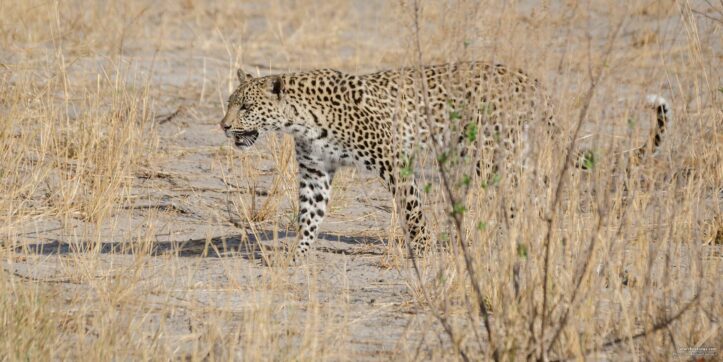
Ariadne is a renowned African wildlife photographer whose work is featured in many well-known guidebooks and magazines.
I can’t help being in awe of leopards. For me, wildlife viewing has never been about ticking off the Big Five (a safari wish list that includes lion, buffalo, elephant, rhino and leopard). When in the bush, I’m happy to see a variety of animals in their wild habitat. Any animals. But whenever I set eyes on the most elusive of these safari icons, my adrenaline spikes and I get goose bumps on my skin.
This solitary, well-camouflaged, agile hunter is the most resilient of the big cats. They thrive in all habitats, ranging from rainforests to deserts, and even on the edge of urban habitation. Although extremely widespread , leopards are notoriously hard to spot, except in a few select locations where they have become habituated to humans. Read on for some of the best places to see leopards in Africa.
1. MalaMala Game Reserve – South Africa

I can’t think of a better place to see leopards in Africa than MalaMala GR . With its extensive river frontage, it is home to one of the densest leopard populations in the world. The MalaMala guides usually view more than 20 individuals every month, and you might well see three or four different leopards on a short stay. And while it’s great to see lots of different leopards, for me it’s the quality of the sightings that really excites me here. Due to years of careful habituation, you can appreciate each individual’s personality, habits and badass attitude.
MalaMala Tours
2. South Luangwa National Park – Zambia
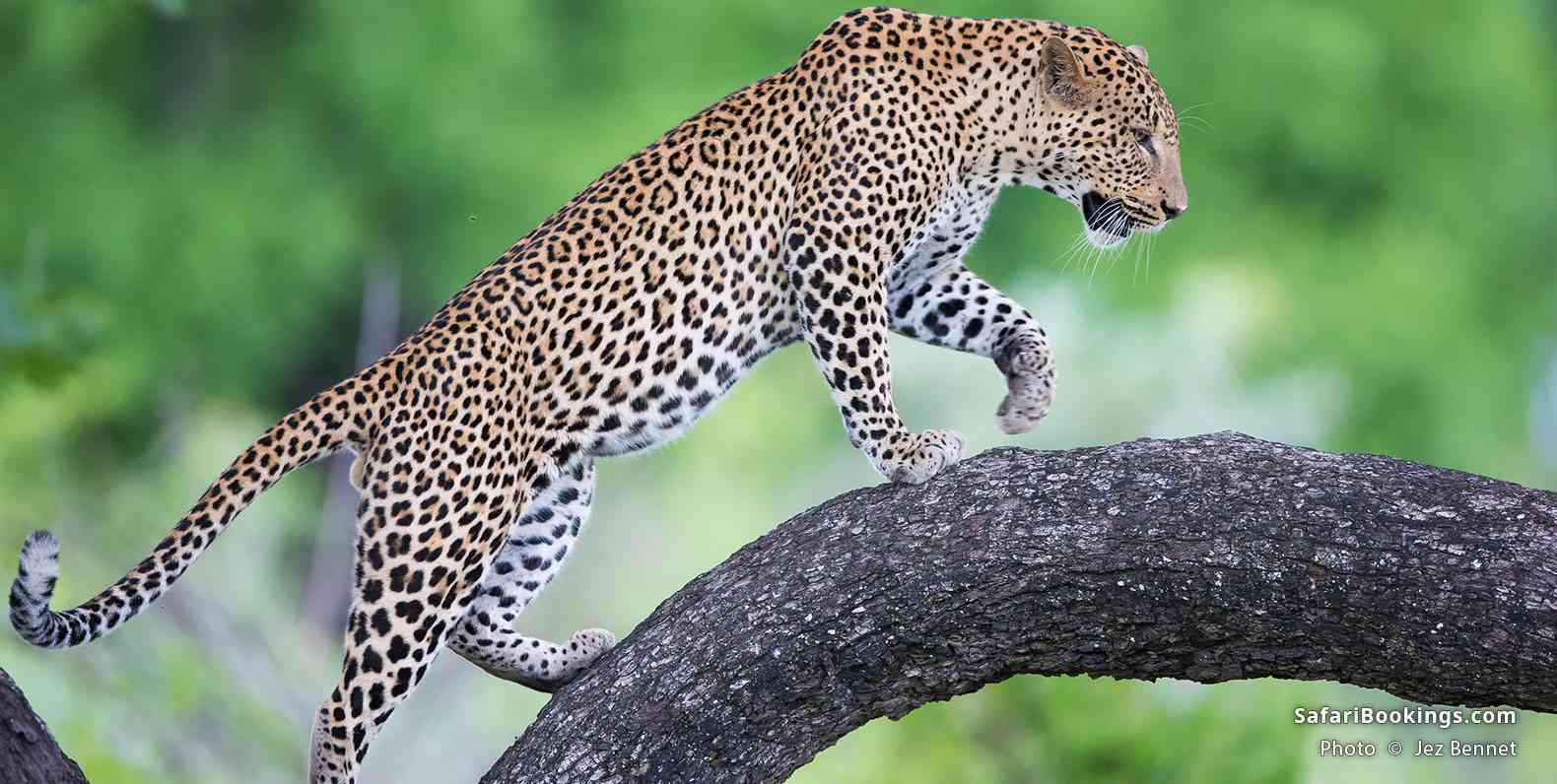
South Luangwa NP is another great leopard hot spot. The park is renowned for its expertly guided walking safaris, but it’s the superb night drives that are most rewarding for spotting these secretive big cats. Leopards are highly nocturnal. Under the cover of darkness, you might find a male patrolling his territory, a mother teaching her cubs to hunt, or a pair performing their elaborate mating rituals.
South Luangwa Tours
3. Masai Mara National Reserve – Kenya
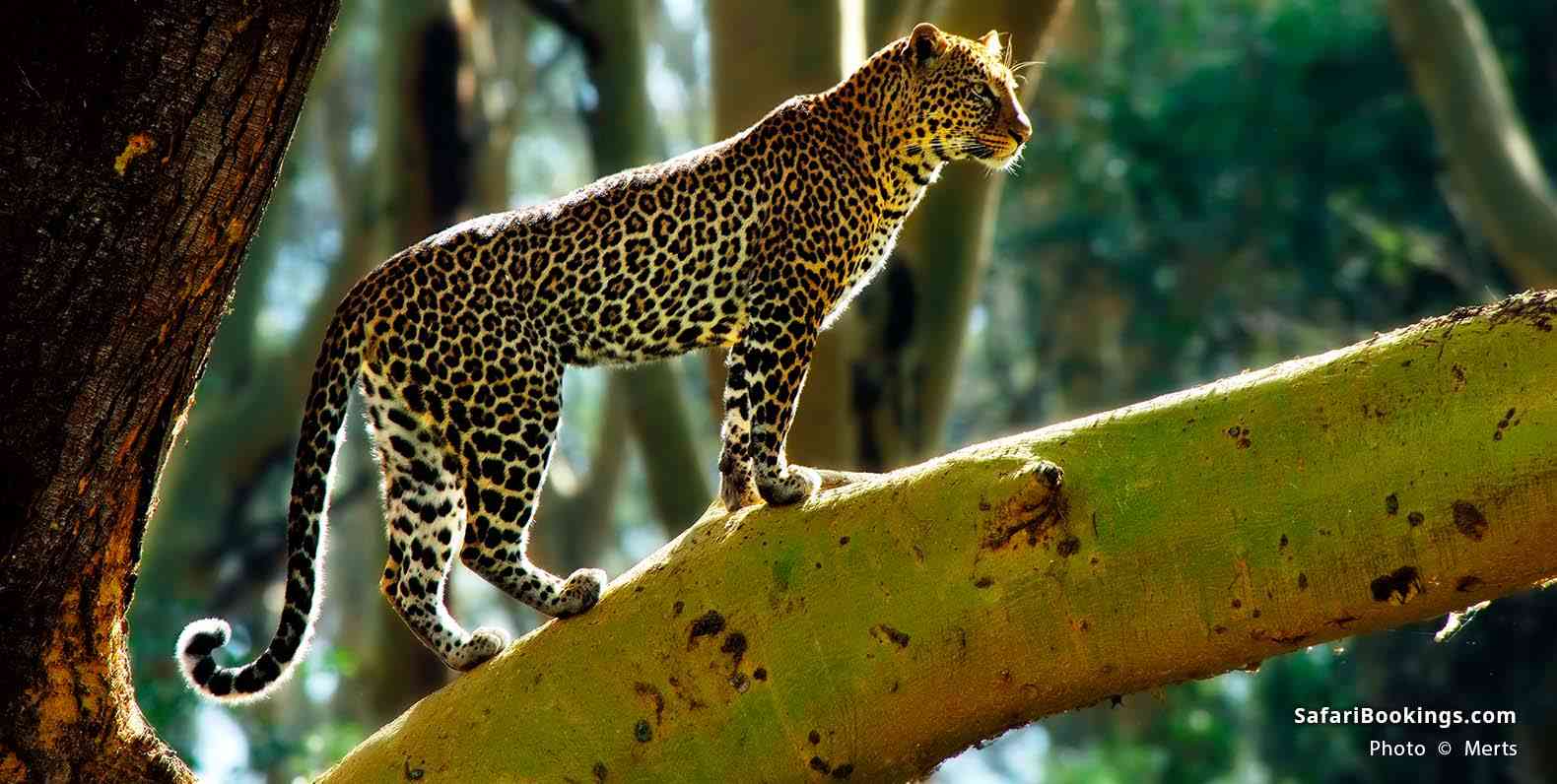
The Masai Mara NR offers excellent viewing of all the big cats. The open savannah is most rewarding for cheetah and lion, but there are plenty of leopards here too. Females often hide their cubs in the kopjes (rocky outcrops). The inquisitive youngsters might be seen playing around the rocks while waiting for mum to return from a hunting trip.
Masai Mara Tours
4. Serengeti National Park – Tanzania
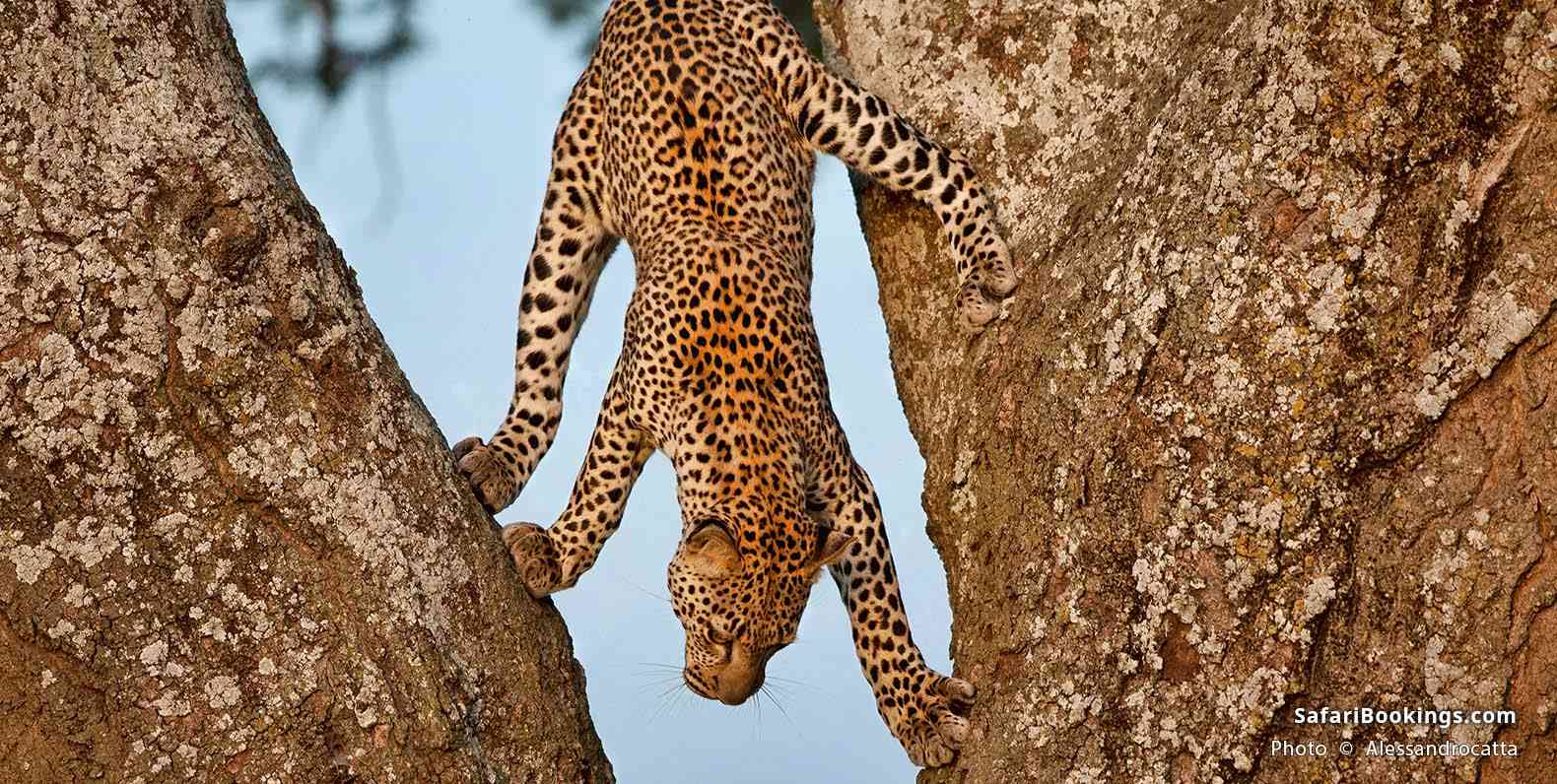
The Serengeti NP reliably delivers when it comes to leopard sightings. You just have to know where to look – and the guides always do. A drive along the Seronera River in Central Serengeti is a good way to start your search. I’ve often seen a leopard lazing on a thick branch of one of the sausage trees that dominate the riverine forest. If you don’t have any luck here, there are other places to look too. The open savannah is dotted with lone acacias, and some of these are well-known leopard trees. This might be because the individual tree is particularly suitable to haul up prey or as a vantage point to check out the surrounding areas. More likely, leopards, just like us, are creatures of habit with favorite hang-out spots.
Serengeti Tours
5. Sabi Sand Game Reserve – South Africa
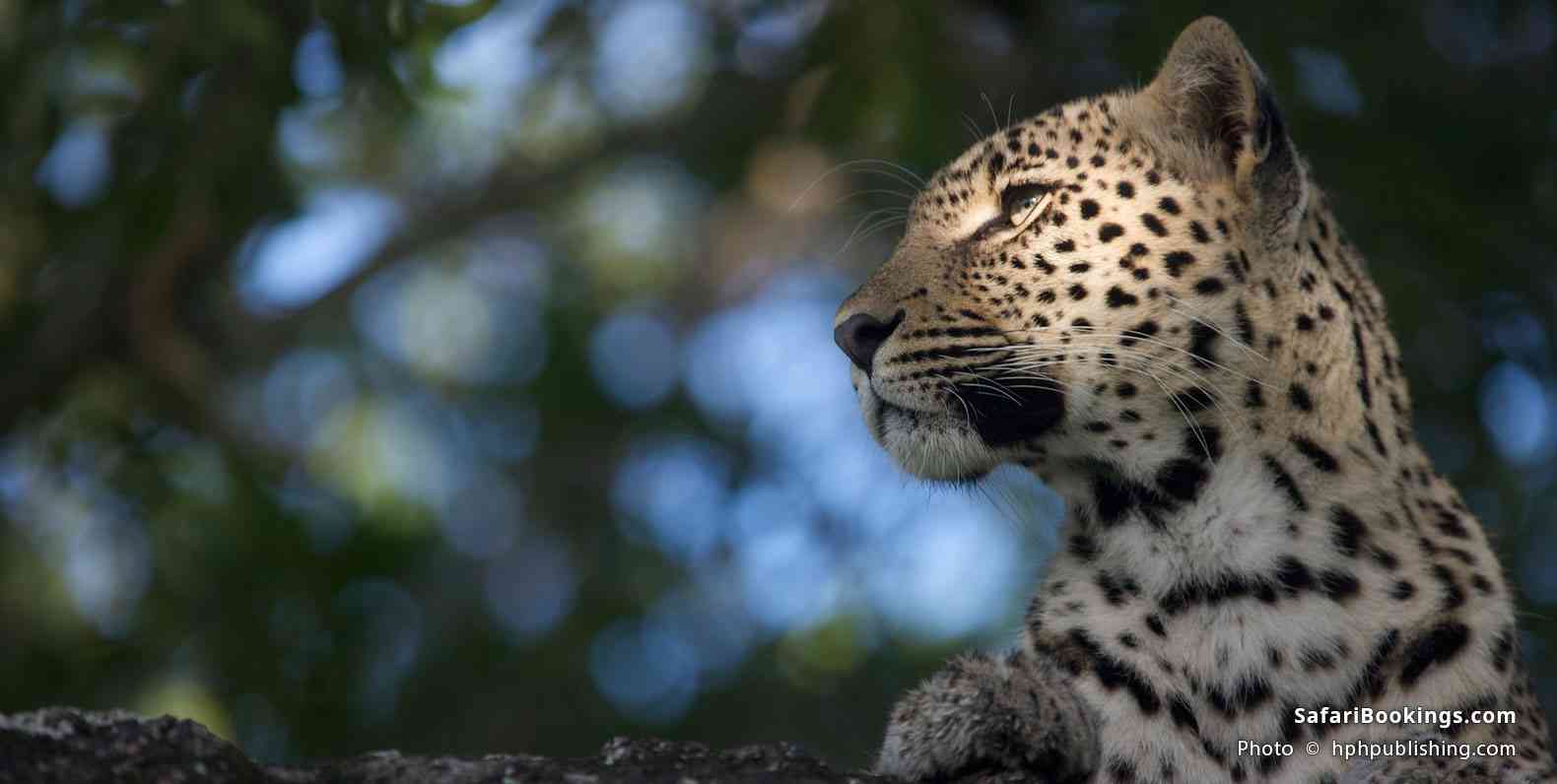
Sabi Sand GR is known as one of the best, if not the best place in to see leopards in Africa. It has open borders with the world-renowned Kruger National Park, which adds authenticity to the wildlife viewing (something often lacking in fully fenced private reserves). Kruger NP itself isn’t a bad place to see leopards, but for near-guaranteed close-up encounters of this powerful big cat you need to stay in Sabi Sands. The reserve is, in fact, a mosaic of smaller properties including some of Africa’s top lodges, such as Singita, Londolozi and Sabi Sabi. Safari packages to these lodges are usually inclusive of gourmet food, outstanding service and all wildlife-viewing activities in prime Big Five territory.
Sabi Sand Tours
6. Mashatu Game Reserve – Botswana
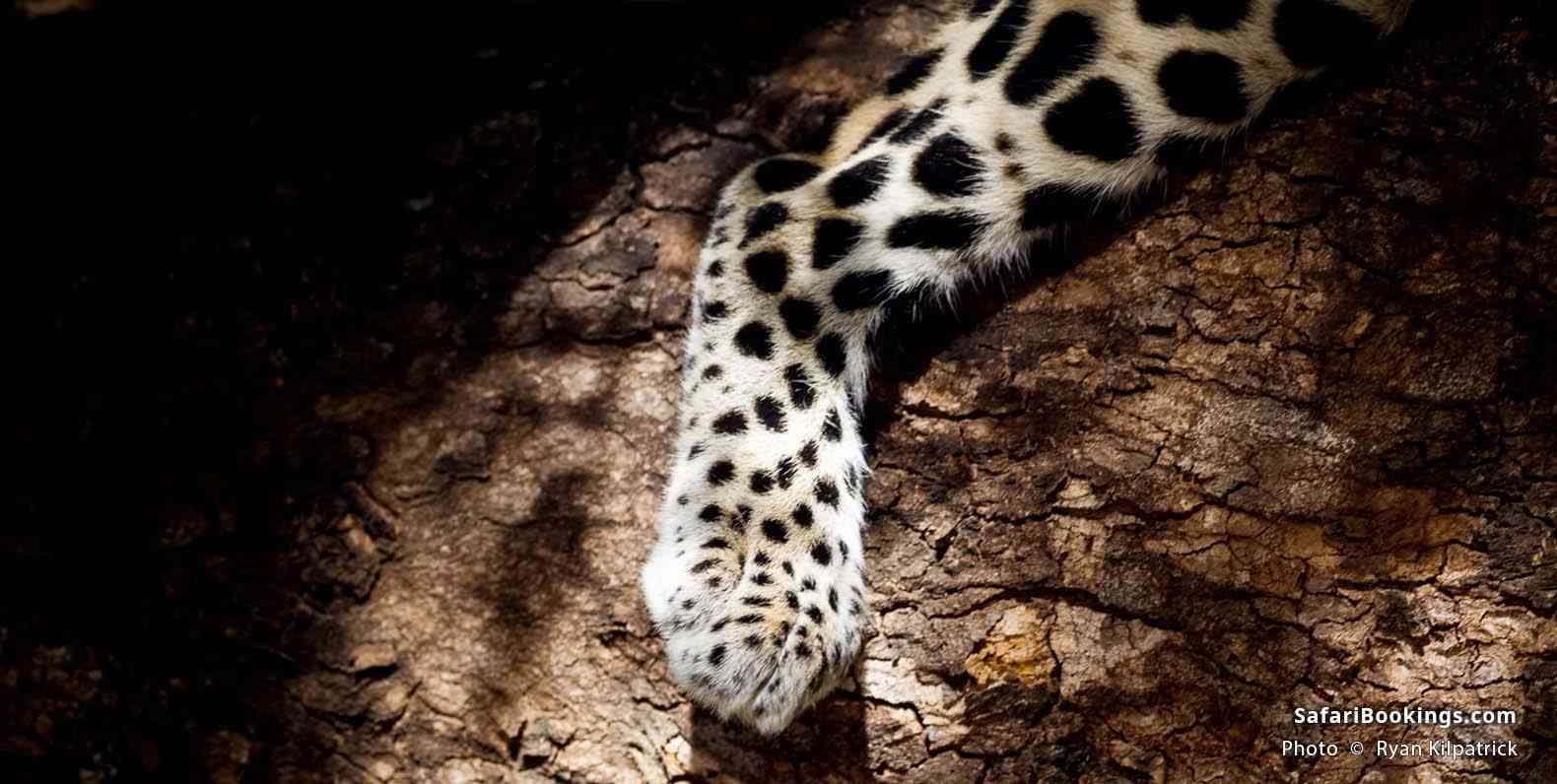
Although less well known than the other parks and reserves on this list, Mashatu GR is one of my favorite places to photograph leopards. The arid rocky landscapes form a perfect backdrop for quality sightings of this stealthy big cat. Most of the leopards inhabit the riverine vegetation of Mashatu’s seven waterways. They use the dry riverbeds for hunting and the soft sand shows their distinctive paw prints perfectly. Most game drives incorporate some exciting tracking of leopards along these natural animal corridors. And while this can sometimes feel like looking for a needle in a haystack, the success rate is impressively high.
About SafariBookings
SafariBookings is the largest online marketplace for African safari tours. Easily compare offers from top-rated tour operators. Make decisions like a pro by using our 103,649 reviews and 223 destination guides. More About Us
Safaris by Type
- Luxury Safaris
- Budget Safaris
- Gorilla Trekking
- Chimp Trekking
- Family Safaris
- Private Safaris
- Group Safaris
- Photo Safaris
- Overland Tours
- Camping Safaris
- Fly-in Safaris
- Walking Safaris
- Birding Safaris
- Self-drive Safaris
- Canoe Safaris
Most Popular Blog Posts
- Best Time for African Safari
- Best Safari in South Africa
- Family Safari in South Africa
- African Safari Tips
- Game Reserves Near Cape Town
- What to Pack for a Safari
- Best African Safari Parks
- Top 5 Best African Honeymoon Safaris
- Top 5 Best Tanzania Family Safaris
- Best Places to See Cheetahs in Africa
- How Much Does an African Safari Cost?
- Best Places To Visit In Africa in 2024
Blog Categories
African safari tours.
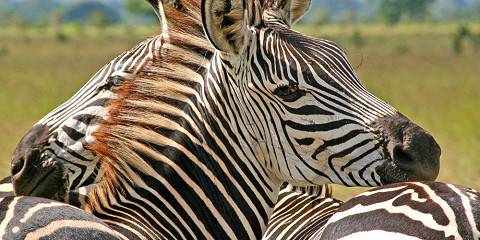
6-Day Majestic Tanzania - Mid-Range
$2,650 to $3,340 pp (USD)
Tanzania: Private tour Mid-range Lodge & Tented Camp
You Visit: Arusha (Start) , Tarangire NP, Lake Manyara NP, Serengeti NP, Ngorongoro Crater, Arusha (End)
Unlimited Expeditions: The Soul of Tanzania
4.9 /5 – 439 Reviews

12-Day Honeymoon Safari and Beach Holiday Package
$5,058 pp (USD)
Tanzania: Private tour Luxury Tented Camp & Resort
You Visit: Arusha (Start) , Tarangire NP, Ngorongoro Crater, Central Serengeti, Stone Town (Zanzibar) , Zanzibar (Beach) , Zanzibar Airport (End)
Gosheni Safaris Africa
4.9 /5 – 418 Reviews

12-Day Amazing Mid-Range Safari and Beach Holiday
$3,354 pp (USD)
You Visit: Moshi (Start) , Arusha (City) , Tarangire NP, Lake Manyara NP, Serengeti NP, Ngorongoro Crater, Stone Town (Zanzibar) , Nungwi (Zanzibar) , Zanzibar (End)
Serengeti Smile
5.0 /5 – 209 Reviews
- BOOK NOW CHECK AVAILABILITY

South Africa is calling - come!
Leopard Mountain is a fully solar off Grid, 5 Star, multiple award-winning, Big 5, family-run safari lodge set within the magnificent 58 000 acre Manyoni Private Game Reserve. Our Safari Lodge is intimate and exclusive. With only 9 luxury suites we are able to guarantee personalised service. The most breathtaking views in Zululand are seen here, from the meandering Msunduze River below to the distant Lebombo Mountains, where Africa's Great Rift Valley begins. Let us take your soul on a journey where you will discover the essential truth about yourself and your world, enticing your senses and enlivening your spirit along the way.
Witness endless sunsets melting their final rays into the horizon, the smell of fresh rainfall over Africa's plains and a feeling of peace and tranquility as your African dream unfolds into a truly memorable reality. Wild animals roam freely over this vast wilderness providing spectacular game viewing and intimate encounters with some of Africa's most endangered species. At Leopard Mountain we aim to give our guests a holistic Safari experience featuring the planets Largest Land Mammal to the smallest insect or flower. This is where the journey begins...

Supreme comfort & luxury in the African wilderness. Discover more...

Luxurious suites nestled on the clifftops with breathtaking views. Discover more...
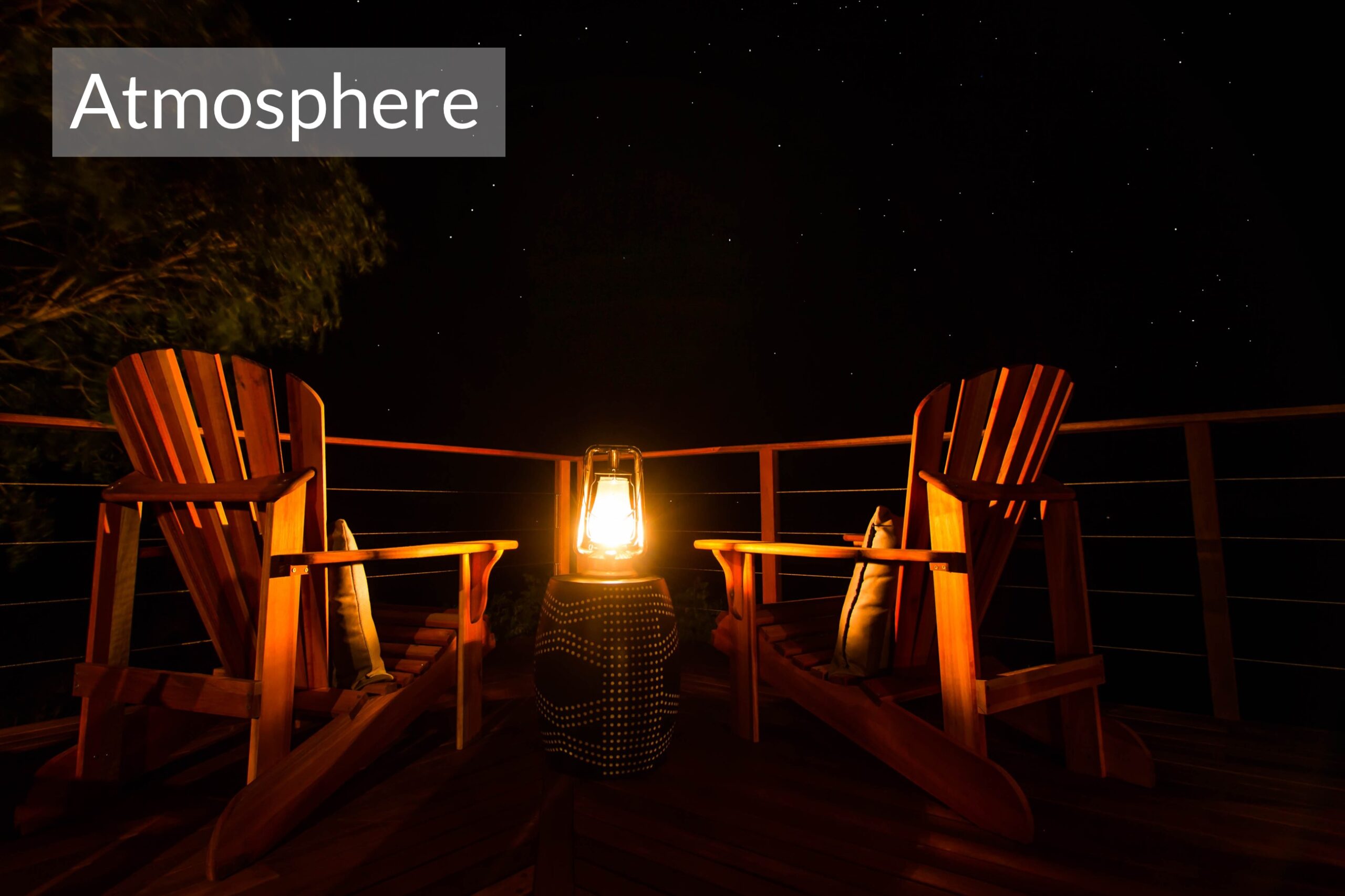
Dinners spent under a blanket of stars around a crackling bonfire. Discover more...

Exquisite cuisine prepared by our top chef with award winning wines to compliment your meal. Discover more...
THE EXPERIENCES
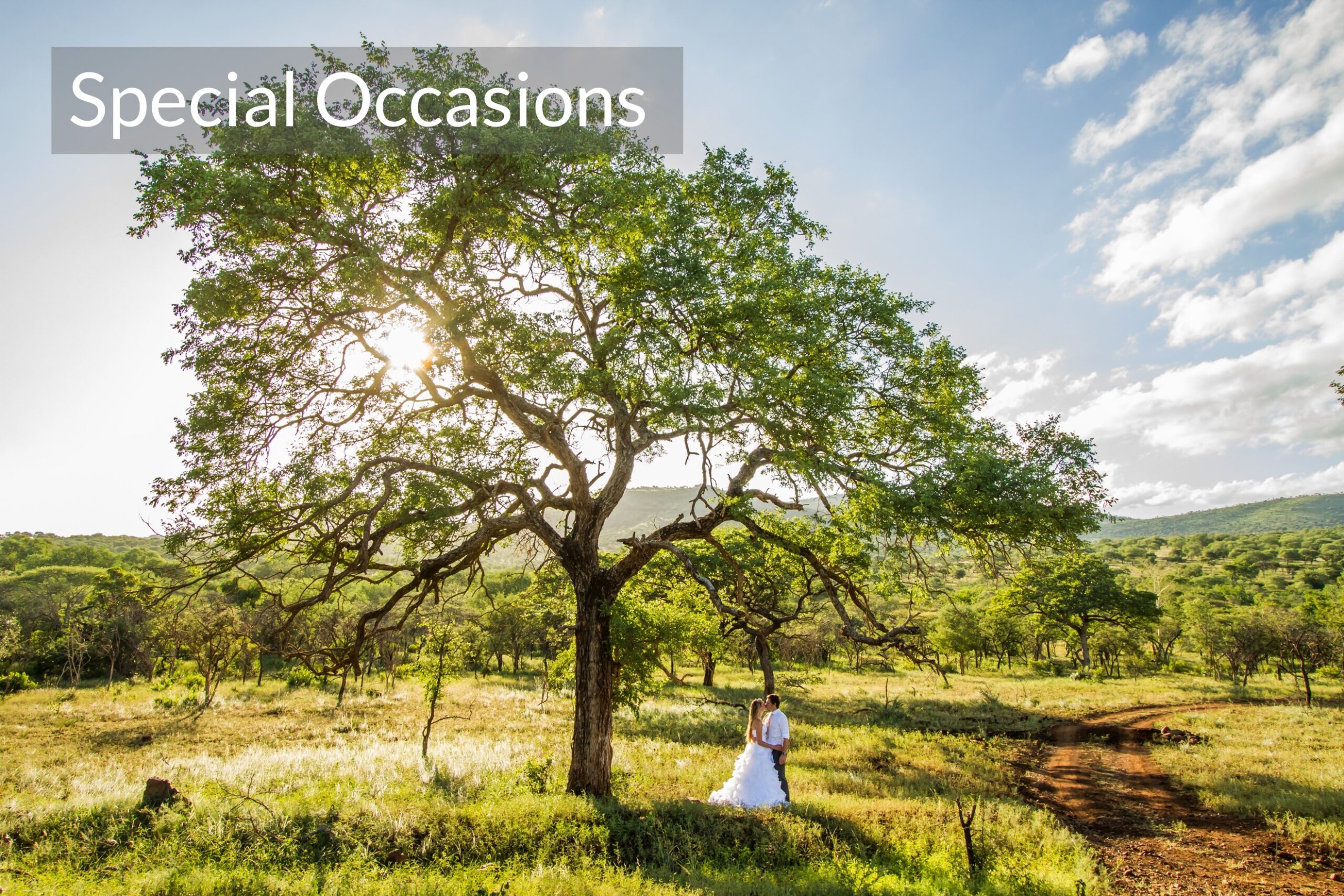
Memories made to treasure forever. Discover more...

Explore & discover the African wilderness with your guide. Discover more...

Unwind & indulge your senses at our Spa. Discover more...
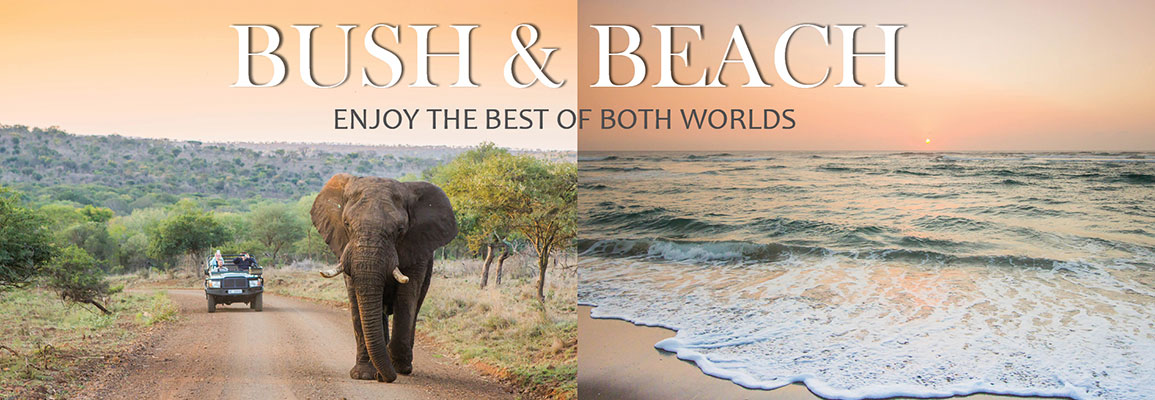
COMMUNITY & CONSERVATION

Booking.com

Tripadvisor

WhatsApp us
- NOT EXACTLY ROCKET SCIENCE
South African wildlife – Safari the leopard
Every weekend, I’m going to post new wildlife photos from our recent South African holiday. The vast majority will come from the four-day safari we went on, and what better way to start this series than with shots of an animal named Safari. She’s a leopard, and undoubtedly one of the highlights of the trip. We crossed her path twice and on both, she was totally unperturbed by our presence. On our second encounter, she even posed for pictures, sitting gracefully atop a termite mound bathed in a golden sunset.
If you’re wondering why this leopard in particular is so recognisable, here’s the answer. Safari is half-blind. Midway through her long life, she sustained a severe injury to her right eye that left it swollen, bloodshot and presumably sightless. You might think that for an ambush predator, the loss of depth perception would be a fatal impediment to hunting. But not so – Safari has lived with her botched orbit for at least six years. Our ranger told us that her health is now failing and she’s becoming increasingly skinny. Even so, at sixteen years, she’s very old for a wild leopard. Wildlife photographers often ignore her because of her eye but to us, it made her even more beautiful, a creature to admire for her handicap, not to pity because of it.
She’s also very tolerant of humans. The first time we saw her, we were watching her stalk a duiker (below) along with a convoy of two other jeeps. The vehicles kept a respectful distance, and she crept up to within 200m of the small antelope before making a run for it. The entire chase was over in seconds, with the duiker escaping.Our ranger tells us that Safari will often use the vehicles to help her hunt, following them at night and tackling any antelope that they accidentally blind with their headlights.
Incidentally, let your eyes relax on the photo above to get a sense of how superb her camouflage is.
FREE BONUS ISSUE
Related topics.
- Environment
- Perpetual Planet
History & Culture
- History & Culture
- History Magazine
- Mind, Body, Wonder
- Paid Content
- Terms of Use
- Privacy Policy
- Your US State Privacy Rights
- Children's Online Privacy Policy
- Interest-Based Ads
- About Nielsen Measurement
- Do Not Sell or Share My Personal Information
- Nat Geo Home
- Attend a Live Event
- Book a Trip
- Inspire Your Kids
- Shop Nat Geo
- Visit the D.C. Museum
- Learn About Our Impact
- Support Our Mission
- Advertise With Us
- Customer Service
- Renew Subscription
- Manage Your Subscription
- Work at Nat Geo
- Sign Up for Our Newsletters
- Contribute to Protect the Planet
Copyright © 1996-2015 National Geographic Society Copyright © 2015-2024 National Geographic Partners, LLC. All rights reserved

Sabi Sands Leopard Project
Leopards are vanishing.
Leopards once had the most extensive distribution of any big cat. The species has since vanished from at least two-thirds of its historic range in Africa and 84 percent of its historic territory in Eurasia. Extinct in 13 countries and possibly extinct in seven more, leopard populations have been devastated by illegal killing for their skins and other body parts, conflict with local people and poorly managed trophy hunting. They are also highly elusive, making them one of the most challenging big cats for scientists to understand and protect.
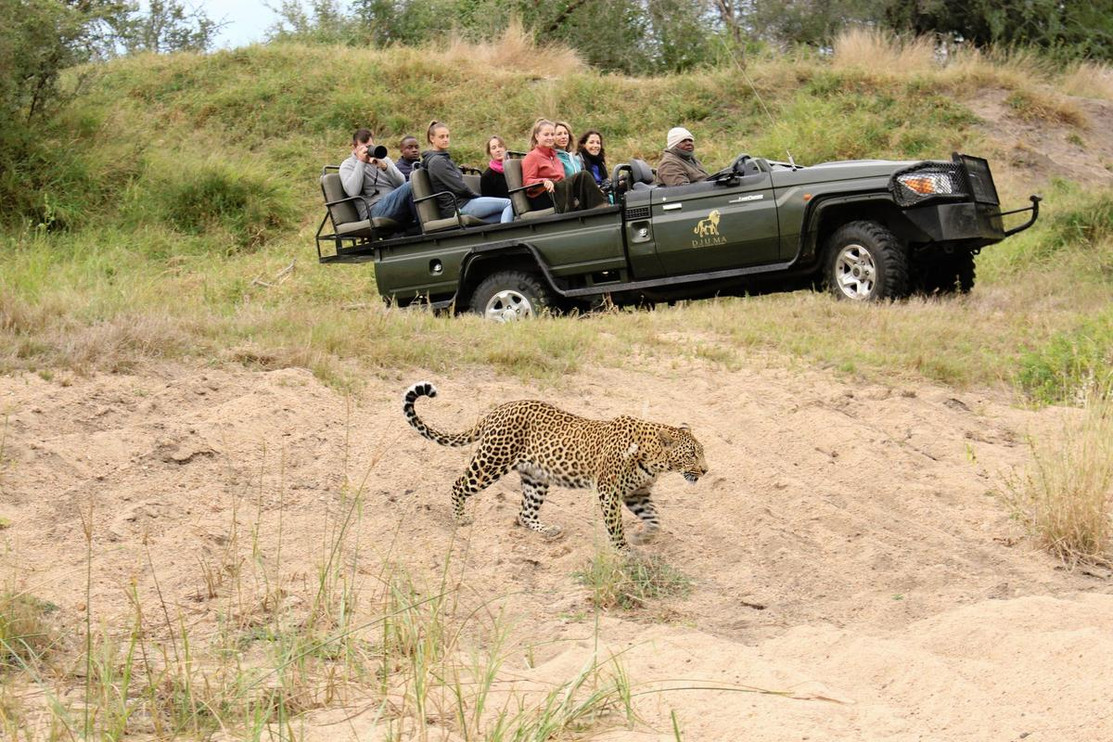
Ecotourism sightings produce information that can influence wildlife management and research. © Gareth Whittington-Jones/Panthera
Comprehensive Leopard Research
Panthera’s Sabi Sands Leopard Project has become critical in the struggle to save leopards, likely the most persecuted big cat. As the lengthiest and most comprehensive leopard research study ever undertaken, Panthera’s Sabi Sands Leopard Project encompasses three private reserves (the Sabi Sand Nature Reserve, Mala Mala Game Reserve and Sabie Game Reserve) in South Africa . Since 2009, Panthera researchers have studied, monitored and gained a better understanding of leopard behavior using this unique population..
Due to well-protected environment and sensitive viewing practices, leopards in the reserve have become comfortable around vehicles. Because of this, leopard sightings are frequent and safari guides can identify and monitor up to 85 resident leopards using their unique spots and established territories. Panthera has trained safari guides to act as citizen scientists, using their photo-tourism sightings as biological data that ultimately inform the conservation of at-risk leopard populations in other regions.
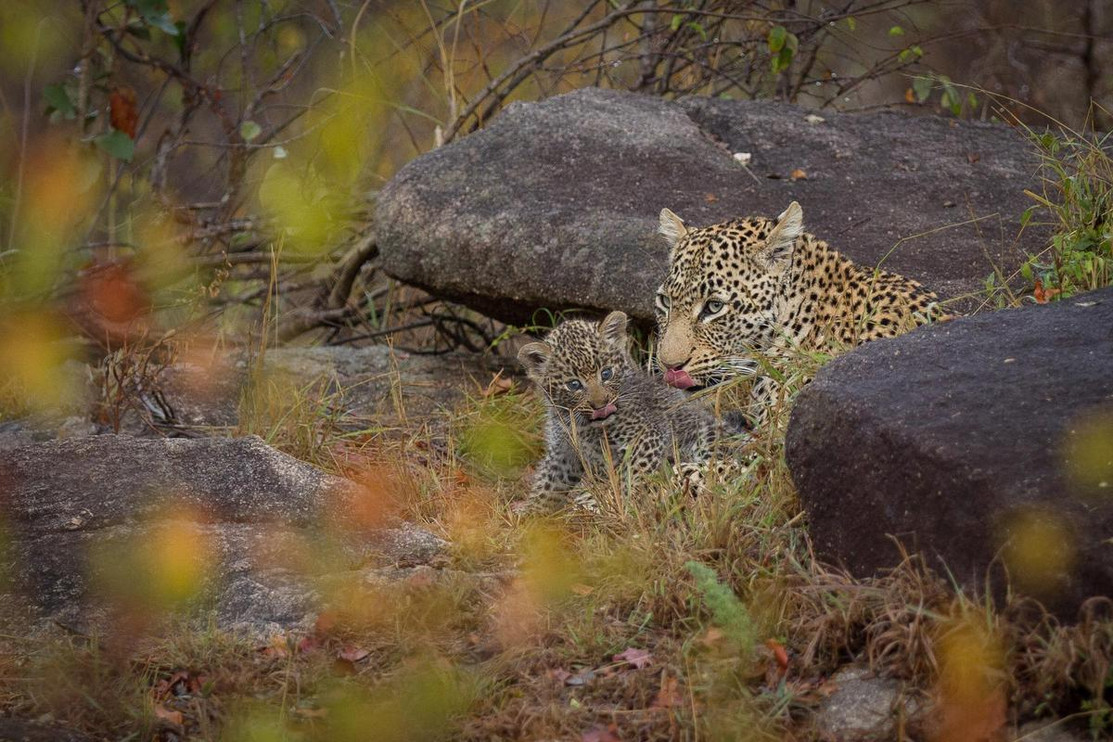
To assign maternity, we collect photographs of female leopards with their cubs and then match adult leopards to their pictures as cubs using their unique spot patterns. © Helen Young
Using DNA Technology to Protect Leopards
Using recent advances in DNA technology, the leopard life histories collected in the Sabi Sands can be augmented with individual genetic profiles. Researchers are able to collect scat from known leopards and use these samples to extract DNA. Genetic profiling of leopards assists with understanding relatedness, paternity and reproductive success. At a national scale, we use DNA to help combat the poaching of leopards for the illegal wildlife trade. The genetic profile of a confiscated leopard skin can be matched to the genetic ‘signature’ of its original population, identifying leopard poaching hotspots.
Long-Term Research Can Lead to Long-Term Impact
Sabi Sands hosts one of the world’s best-protected and best-studied leopard populations. We have life histories for over 900 leopards in the Sabi Sands since 1979 and detailed records of more than 500 litters of cubs. Over 110,000 unique leopard sightings have been submitted since 2003 and approximately 8000 new observations are added annually. Consequently, this population demonstrates how leopard numbers change, healthy demographic composition and spatial organization. These data can be used to answer ecological, behavioral and management questions and inform conservation at other sites where leopards are under threat.
Ultimately, as the patterns and processes governing wildlife population trends are only detectable over many years and generations, long-term research is critical to understanding and conserving species at a global scale.
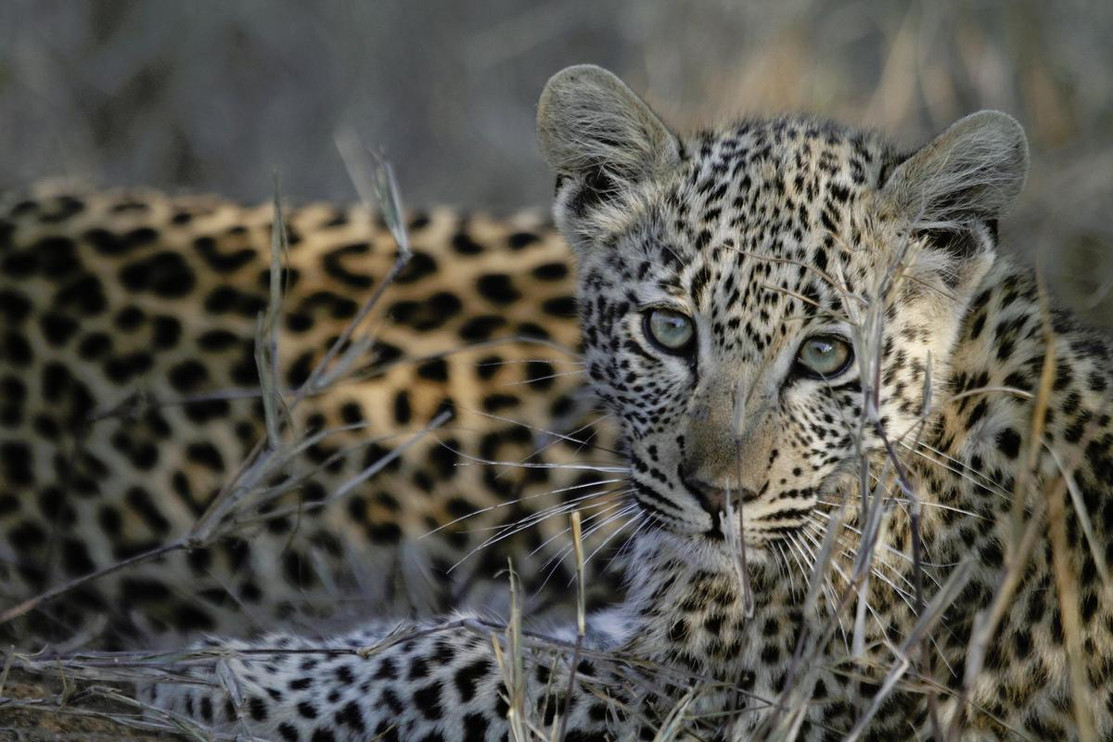
This cub in the Sabi Sands Game Reserve is among the world’s best-studied leopards. © Panthera
Read More About the Sabi Sands Leopard Project:
- Leopards Make Good Neighbors
- Steering Spotted Cat Conservation Strategies
- Why Do Leopards Hoist Their Kills Up Trees?
Wild about wild cats?
By joining our email list, you will receive the latest conservation updates, exciting stories from the field, our monthly newsletter, and more.
Panthera cares about your privacy. Read our Privacy Policy .
The Top 5 Places to See Leopards in Africa
:max_bytes(150000):strip_icc():format(webp)/DSC00412-5b73daf7c9e77c0057ca2198.jpg)
Despite the fact that they are found throughout Southern Africa and have the widest distribution of any wild cat, leopards are also the most elusive of Africa's big cats - and the hardest member of the Big Five to find. This is due to their solitary nature and the fact that as ambush hunters, they deliberately stay out of sight in areas with thick bush and plenty of trees. In many parts of their range, leopards are nocturnal . Habitat loss, poaching and conflict with farmers have all contributed to a decline in global numbers; however, there are still some safari destinations that are known for their healthy leopard populations. In addition to visiting these leopard hot spots, top tips for finding them include booking night drives , remembering to look up (leopards spend much of their time resting in trees) and listening for the alarm calls of prey animals such as antelope and baboons.
South Luangwa National Park, Zambia
Marco Pozzi Photographer/ Getty Images
South Luangwa National Park is located in east Zambia , in the Luangwa Valley. The area is also known as the Valley of the Leopard - an appropriate moniker given that it boasts Africa's highest concentration of the majestic spotted cats. Estimates suggest that there is one leopard for every two square kilometers. South Luangwa is ideal leopard territory for two reasons - its incredible abundance of prey animals and its dense woodland habitat, which provides the cover necessary for ambush attacks. The leopards of South Luangwa are famously bold and can often be seen in the daytime, resting in trees and even hunting in clear sight of safari vehicles. Unusually for a national park, night drives are allowed, thereby increasing your chances of seeing a leopard in action. The park is also known for its walking safaris. For the best sightings, go in the late dry season (August to October) when animals congregate near waterholes and leopards are easiest to find.
Sabi Sands Game Reserve, South Africa
Chris Berman/ Getty Images
South Luangwa may have the densest population of leopards but if there's one place in Africa that's world-famous for its leopard sightings, it's South Africa's Sabi Sands Game Reserve . It's located on the western edge of Kruger National Park , with which it shares an unfenced boundary. Rangers at Londolozi Lodge in the heart of the reserve have been studying the park's leopards for more than four decades and are able to recognize resident cats individually. Their in-depth knowledge about each cat's habits and territories gives you a very good chance of a close encounter. Londolozi have 20 named leopards on their database but have recorded over 50 individuals in the area over a 11-month period including visiting nomads. Some of the best sightings happen on sunset game drives, and if a leopard is spotted, rangers are allowed to go off-road to get into a better position. The lodge also offers specialist big cat photography safaris for those keen on honing their camera skills.
Moremi Game Reserve, Botswana
Jami Tarris/ Getty Images
There are many excellent places to spot leopards in Botswana , the best of which are located around the edges of the Okavango Delta . They include the Savuti and Linyati reserves (in between the Okavango and Chobe National Park ), but for many experts, the single best destination is Moremi Game Reserve . Situated in the eastern section of the Delta, it is home to the Khwai River Region, where permanent water pools attract plenty of game and thick woodland allows leopards to creep up on their prey undetected. Leopard are so abundant here that daytime sightings are practically commonplace. If you do want to experience a night safari, you'll need to stay outside the reserve on a private concession like the luxury Khwai River Lodge . At least one night drive is recommended, if only for the thrill of scanning the dark for a pair of eyes shining in the spotlight. Moremi Game Reserve and its surrounding concessions are also home to lion and cheetah as well as the endangered African wild dog.
Maasai Mara, Kenya
WLDavies/ Getty Images
Although Kenya's Maasai Mara National Reserve is traditionally more famous for its lion prides, there's a reason that legendary documentary Big Cat Diaries filmed leopards there too. To see them, avoid the open grasslands where lion and cheetah reign and head instead to the region's wooded riverine areas. All kinds of predator sightings increase from July to November, when millions of wildebeest and zebra migrate northwards from the Serengeti and into the Mara Triangle. The young and sick make easy pickings for hungry leopards. When choosing a place to stay, consider Angama Mara which focuses on leopard encounters and conservation. Visitors can contribute to the lodge's photographic identification database, which increases leopard knowledge and sightings. Since the beginning of 2018, 22 leopards have been recorded on the database. Like Moremi, the Maasai Mara itself does not allow night drives. For after-dark leopard sightings, book a few nights in a private conservancy.
Okonjima Nature Reserve, Namibia
TripSavvy / Jess Macdonald
For near-guaranteed leopard sightings, head to Okonjima Nature Reserve in northern Namibia . Located in the foothills of the Omboroko Mountains, the reserve is home to The AfriCat Foundation which rehabilitates injured predators, conducts research and carries out community education initiatives. Rescued leopards roam freely throughout the 200 square kilometer reserve and wear radio tracking collars as part of a density research project. Although some safari purists may not like the idea of being led to a sighting by satellite, it's a great way to get close while contributing to conservation efforts at the same time. You can also track cheetah on foot or sign up for a night drive for the chance to see caracals, aardwolves, brown hyenas and bat-eared foxes. Nocturnal hides and floodlit waterholes at some of the bush villas and camps also give you the chance of spotting leopards from the comfort of your own temporary home. Finally, AfriCat also have a fund-raising carnivore adoption program.
Fun Facts About African Animals: The Cheetah
Top 10 Unmissable African Safari Destinations
Okavango Delta, Botswana: The Complete Guide
An Introduction to Africa's Big Five Safari Animals
The Top 5 Places to See Lions in Africa
The Top 12 National Parks to Visit in Africa
15 Animals to See on an African Safari
10 of the Best Places to Visit in Botswana
10 of the Best Private Game Reserves in South Africa
How to Plan an Affordable African Safari
The Best Places to Go in Southern Africa
South Luangwa National Park, Zambia: The Complete Guide
The Ultimate Guide to Choosing the Right Safari for You
Malaria Free Safaris in Africa
The Top 5 Places to See Elephants in Africa
The Top 18 Things to Do in Mpumalanga, South Africa

- Ready-made safaris
- Experiences
- Special offers
- Accommodation
- Start planning
- Booking terms
- When to go on safari - month by month
- East or Southern Africa safari?
- Solo travellers
- Women on safari
- Accommodation types & luxury levels
- General tips & advice
- All stories
- Afrika Odyssey Expedition
- Photographer of the Year
- Read on our app
- 2024 entries
- 2024 details
- 2024 prizes
- 2024 entry form
- 2023 winners
- Collar a lion
- Save a pangolin
- Rules of engagement
- Job vacancies
- Ukuri - safari camps

Leopard conservation in South Africa
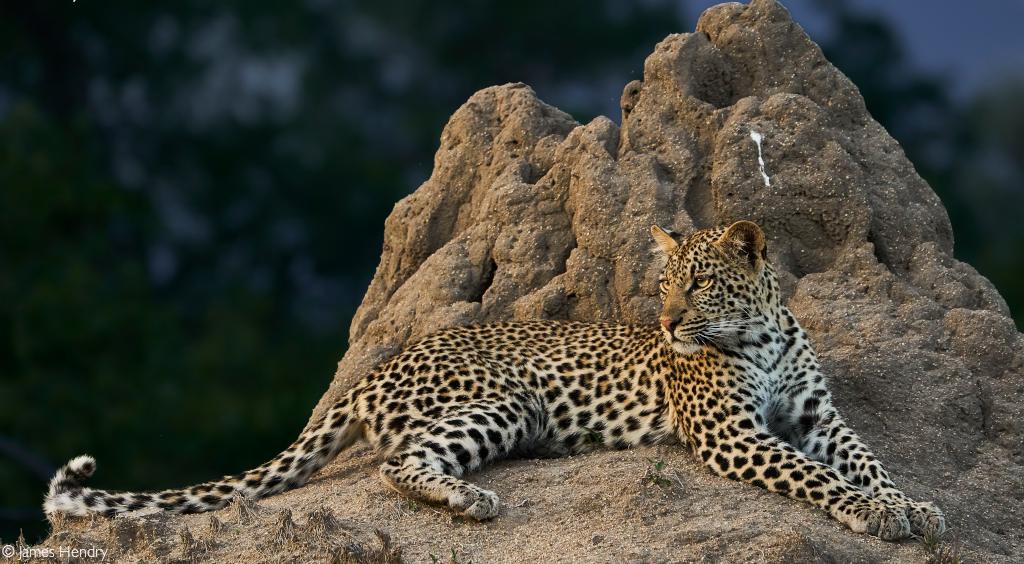
The hunting season for many species in South Africa has just begun. This has prompted people interested in leopard conservation to make enquiries regarding the leopard hunting quota for SA for 2021 – a task that should be quite simple, given that the public is legally allowed access to this information. However, it has proven almost impossible to obtain any information regarding 2021 quotas, the science that advised the upping of quotas from 2018 to 2020 and for some areas, how many leopards were hunted in 2020.
Enquiries to the Department of Forestry, Fisheries and the Environment (DFFE), the South African National Biodiversity Institute (SANBI) and the North West Province have been ignored completely. LEDET (Limpopo Province) was more forthcoming. In answer to a query as to whether any of the nine leopards allocated to this province for 2020 had been hunted, they responded that four were hunted. They also revealed that a 2021 leopard hunting quota for Limpopo Province had not yet been set. Therefore, I can only assume that quotas have not been set for any province in SA for 2021.
It seems that more openness, honesty, and a willingness to share information on this topic are sorely needed. If the DFFE were to provide clarity and less obfuscation regarding who the public should turn to for enquiries regarding permits, quotas and the latest population trends, they would instil more trust in those of us concerned with leopard conservation in South Africa.
Declining leopard numbers
To understand the concerns regarding the current status of leopard conservation in South Africa, it is important to outline some recent history related to the species in this country. In 2002, leopards were listed as least concern on the IUCN Global Red List (Figure 1). Alarmingly, however, due to continuing decline in leopard populations globally and nationally 1, this status changed to “Near Threatened” in 2008 and then “Vulnerable” in 2016 2 . A study 3 showed leopards to have disappeared from at least 37% of their historic African range. However, more recent studies 1,4 , paint a bleaker picture of an extensive leopard range reduction in the region of approximately 60%-70% 1,4 with only 17% of the existing range protected and disturbingly, that leopards are extinct in 67% of South Africa 4 .
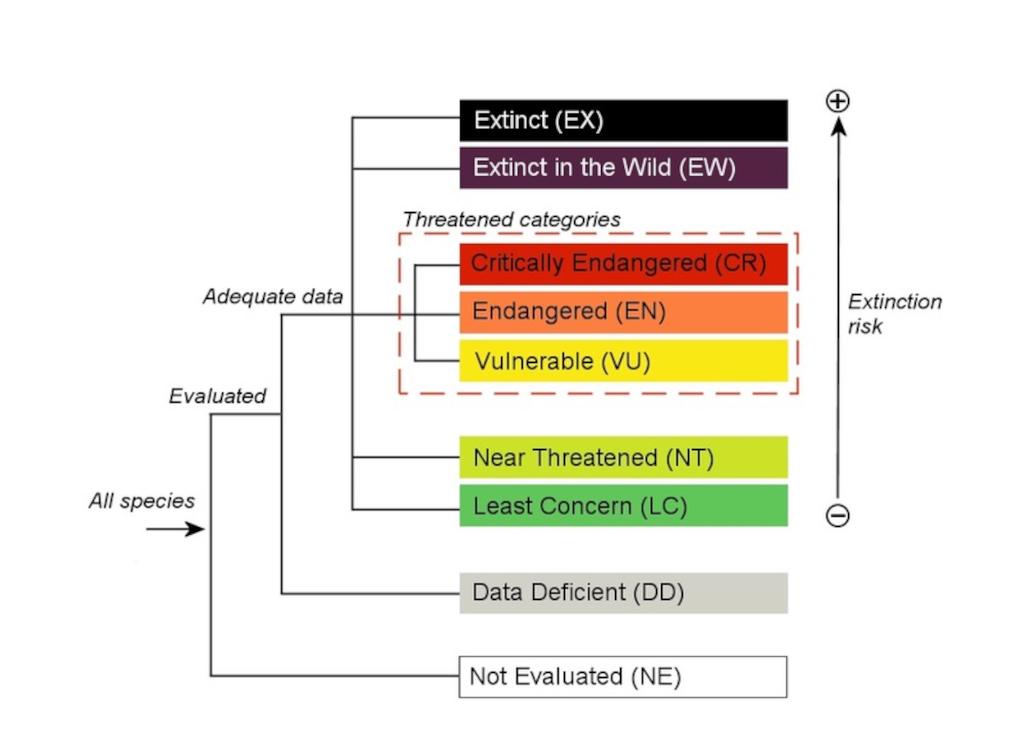
Improving leopard science
Before 2016, leopard hunting in South Africa was very poorly regulated. National population estimates to inform the CITES leopard quotas were based on outdated and meaningless studies 20 that used rainfall and vegetation types to estimate population numbers and assumed that leopards occur at maximum population densities in all available habitats. These studies massively overinflated leopard numbers 5 . Credit needs to be given to the Scientific Authority (a group including scientists from SANBI, SANParks, one representative from each of the provincial conservation agencies and representatives from some NGOs such as Panthera and EWT). In the lead up to the hunting quotas being set in 2016, and against a massive backlash from the South African hunting community, the Scientific Authority fought for a zero hunting quota to be adopted by government. This allowed time to gain a comprehensive and more scientifically informed understanding of leopard populations across the country. Additionally, they wanted the opportunity to develop a framework for better regulated leopard hunting in SA. Thankfully, government took heed of the concerns raised, and the leopard hunting quota was set to zero for the years 2016 and 2017. This bought some time for scientists to collect the necessary data required for more informed decisions.

Undoubtedly, most scientists working to achieve these goals would have loved nothing more than to stop leopard hunting in the country altogether. Realistically, however, they understood the power and influence of the hunting lobby. They dealt with the pervasive threats by members of the hunting and game farming fraternity, who claimed that if they could not make money from the leopard on their land, they would simply shoot them and bury the evidence 21, 22 . The scientists also acknowledged the contribution that hunting makes to conservation in terms of the land set aside for wildlife, which could easily be given to livestock farming, or worse, should hunting become unprofitable.
In a race against time, at huge expense and with the hunting community baying for blood, a concerted effort was made to set up an adaptive management framework for ethical hunting practices. This included establishing the South African Leopard Monitoring Project, a cooperative effort between the NGO Panthera, SANBI and other partners. Panthera had been monitoring leopard populations using camera trap surveys in parts of KwaZulu-Natal and Limpopo since 2013. SANBI provided additional funding to expand the project to other provinces in 2016. These surveys were intended to inform leopard conservation policy and provide a reference point to gauge the impact of future management decisions 6 .
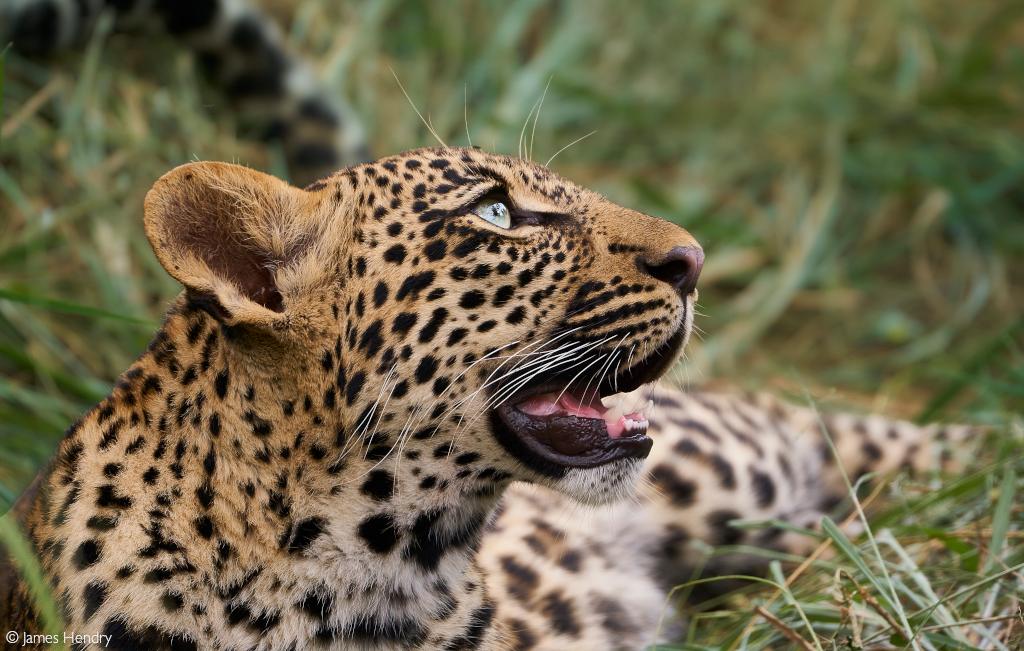
Illogical quota increases
Shockingly, until the 2016 leopard quota review in South Africa, there were no restrictions on the size, age or sex of leopard that were legally hunted 7 . CITES allowed any leopard trophies to be exported as long as they were within quota and accompanied by the requisite permits. CITES, by the way, has a track record of bad decision making for leopards and other species. The existing quotas are unsustainably high 5 . It beggars belief that with global and regional red lists over the last 20 years showing a concerning decline in the status of leopard, the CITES quotas for leopard in all African range states has INCREASED or remained unchanged since 1983 (Table 1). Not a single reduction in CITES export quotas for leopard for African range states has occurred 5 .

The new SA management framework stipulated that only male leopards aged seven or above were allowed to be legally hunted in South Africa. Although this age has come under harsh criticism from many, (particularly because leopards are an infanticidal species, seven-year-old males are in the prime of their breeding lives, and hunters have proven very poor at ageing leopards) 7 , there is no doubt that it is a huge improvement on what was in place before. For more details on problems with the government’s proposed norms and standards for leopard hunting 8 , see the objection 9 submitted to government in 2017 in the references.
A continued decline
The results of the South African Leopard Monitoring Project’s population survey for 2017 to 2018 suggested a concerning 11% per year decline of the leopard population in SA 6 . The monitoring was conducted in protected areas across the country. If these “protected” populations showed 11% declines, then it suggests non-protected areas, which form the bulk of South African leopard habitat (and where leopard hunting will take place), are experiencing far greater declines.
The survey report called for urgent action to combat the illegal trade in leopard body parts, which the authors saw as the biggest and most immediate threat to leopard in South Africa. In a devastating response to this report, the government, rather than implementing a plan to stop the illegal killing of leopard for traditional use, immediately set a leopard hunting quota of seven animals for 2018 and suggested that the CITES export quota of 150 leopard trophy’s stay the same. The hunting quota has since increased to 11(nine allocated to Limpopo Province and two to North West Province) in 2020, and Government has remained steadfastly quiet about its plans to deal with the traditional and cultural use of skins.
A note on the CITES quota of 150: In the years between 2005 and 2016, South Africa never fully used its export quota of 150 skins, but rather an average of about 70 per year. With hunting quotas set so low at the moment, it seems strange that the DFFE would have wanted to retain the high CITES quota unless they are planning on increasing hunting quotas quite dramatically over the next few years. By CITES own admission, exporting species at a level that is well below a CITES quota normally implies that the quota was set arbitrarily. Yet, our government asked for this obviously ridiculous quota to be retained. WHY?
Pointless research
Researchers have been rapped over the knuckles by scientists 12, who found that most leopard research in South Africa had little relevance to the conservation of the species. Most studies were concentrated in areas of low conservation concern and focused on basic research, like feeding ecology in protected areas, rather than applied research relevant to the conservation of the species. Other findings 10,11 questioned the necessity of leopards being collared for research purposes. They drew attention to many studies submitted to the South African Journal for Wildlife Research that lacked ethical clearance or permitting approvals. Radio telemetry 11 was found to be the most common method used to study leopard in South Africa, but the costs often outweighed its benefits, as collars frequently caused death or injury to the animals. They suggested that non-invasive methods like camera traps be used where possible and proposed a method to enable researchers to balance the welfare concerns of individual leopards with the urgent requirement for accurate data to inform conservation decisions. Organisations doing the most relevant research were found to be NGOs. Researchers urgently need to focus their attention on studies that will contribute to the conservation of the species by identifying the preeminent threats to leopards and designing research activity around those threats.
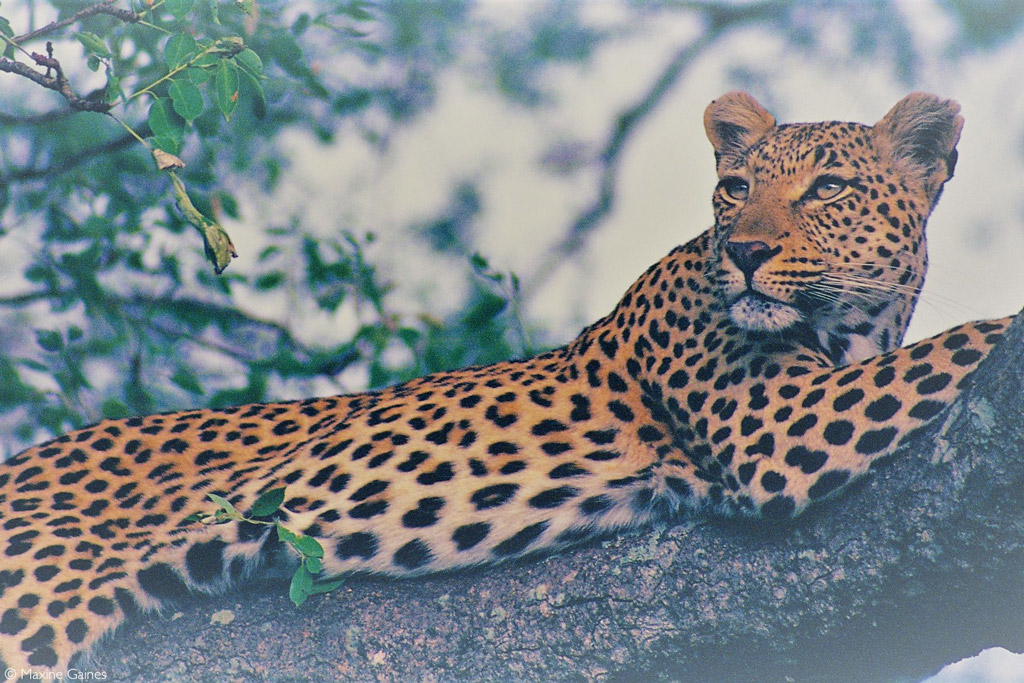
Why not consider metapopulation management of leopard?
Conservation scientists, government, ecotourism, NGOs, law enforcement and the game farming industry need to pull together to establish a Metapopulation Management Plan for leopard, similar to those in place for cheetah and African wild dog. Essentially a Metapopulation Management Plan, instead of managing leopard in each game reserve or area separately, treats the population in the country or sub-region as one large metapopulation. Animals can then be regularly moved from areas where populations are healthy and growing to areas where the species is locally extinct, or numbers are low 15 . A system like this allows managers to increase the genetic diversity of small fragmented groups of a species and creates opportunities to move problem animals to other areas instead of shooting them.
Like parts of the Drakensberg, some areas in our country have perfect leopard habitat but seem to have virtually no leopards, according to recent camera trap surveys 6 . Leopards that are earmarked for hunting could theoretically be used to repopulate these empty areas. This warrants consideration as a matter of urgency for leopard before, not after, the species becomes critically endangered. Perhaps metapopulation plans have not been put into place for leopard because the perception is that they are notoriously difficult to relocate, but recent research suggests that as long as certain conditions are met, leopards can and have been relocated successfully. 16, 17, 18, 19
In closing, there is no doubt that leopards are in trouble in South Africa – as confirmed by the above population surveys. Historically, the hunting fraternity, The SA Government, and CITES have all failed to protect them. The adaptive management plan put in place by the Scientific Authority, while far from perfect, is an attempt to rectify this. However, it is unacceptable that the government has not been more direct in tackling the cultural and traditional use of leopard body parts, rather relying on organisations like Panthera 13 to run these programmes with little visible support from the DFFE.
The gauntlet has also been thrown down by some of the preeminent leopard specialists in the country, the ones who are providing quality research that is relevant to the conservation of the species. Conservation scientists and ecotourism businesses need to play their part in furthering our knowledge of the species in a relevant way to their conservation. This will enable us to improve on the adaptive management plan for the benefit of leopard conservation.
For further reading on South African leopard hunting quotas a look here , here, here and here
References
- Stein, A.B., Athreya, V., Gerngross, P., Balme, G., Henschel, P., Karanth, U., Miquelle, D., Rostro, S., Kamler, J.F. and Laguardia, A., 2016. Panthera pardus. The IUCN Red List of Threatened Species 2016: e. T15954A50659089. Gland, Switzerland: IUCN . https://www.researchgate.net/publication/308899520_Panthera_pardus_The_IUCN_Red_List_of_Threatened_Species_2016_e_T15954A50659089
- Swanepoel LH, Balme G, Williams S, Power RJ, Snyman A, Gaigher I, Senekal C, Martins Q, Child MF. 2016. A conservation assessment of Panthera pardus. In Child MF, Roxburgh L, Do Linh San E, Raimondo D, Davies-Mostert HT, editors. The Red List of Mammals of South Africa, Swaziland and Lesotho. South African National Biodiversity Institute and Endangered Wildlife Trust, South Africa. https://capeleopard.org.za/images/docs/publications/2016_Swanepoel_et_al_A_conservation_assessment_of_Panthera_pardus.pdf
- Ray, J. C., Hunter, L., & Zigouris, J. (2005). Setting conservation and research priorities for larger African carnivores. http://s3.amazonaws.com/WCSResources/file_20120403_095402_WCS_WorkingPaper_24_web_xWA.pdf
- Jacobson, A.P., Gerngross, P., Lemeris Jr, J.R., Schoonover, R.F., Anco, C., Breitenmoser-Würsten, C., Durant, S.M., Farhadinia, M.S., Henschel, P., Kamler, J.F. and Laguardia, A., 2016. Leopard (Panthera pardus) status, distribution, and the research efforts across its range. PeerJ , 4 , p.e1974. https://peerj.com/articles/1974
- Trouwborst, A., Loveridge, A.J. and Macdonald, D.W., 2020. Spotty data: managing international leopard (Panthera pardus) trophy hunting quotas amidst uncertainty. Journal of Environmental Law , 32 (2), pp.253-278. https://academic.oup.com/jel/article-pdf/32/2/253/33482581/eqz032.pdf
- Mann, G., Pitman, R., Broadfield, J., Taylor, J., Whittington-Jones, G., Rogan, M., Dubay, S., and Balme, G. (2018). South African Leopard Monitoring Project, Annual report for the South African National Biodiversity Institute.
- Balme, G. A., Hunter, L., & Braczkowski, A. R. (2012). Applicability of age-based hunting regulations for African leopards. PloS one , 7 (4), e35209. https://journals.plos.org/plosone/article?id=10.1371/journal.pone.0035209
- DEA (2018) https://cites.org/sites/default/files/eng/com/ac/30/E-AC30-15-A3.pdf Downloaded on [1st June 2021]
- Gaines (2017) https://www.yumpu.com/en/embed/view/gN5xuiSJz2jv7pCD?fbclid=IwAR0pveIMt9tyuT9uq8rt74pzuaPB3I4PSpz34R0rZLuc3VBndJabqX55bO0 Downloaded on [1 st June 2021]
- Hayward, M.W., Somers, M.J., Kerley, G.I., Perrin, M.R., Bester, M.N., Dalerum, F., San, E.D.L., Hoffman, L.C., Marshal, J.P., Mills, M.G. and Nel, J.A., 2012. Animal ethics and ecotourism. African Journal of Wildlife Research , 42 (2). https://www.researchgate.net/profile/Fredrik_Dalerum/publication/233953253_Animal_ethics_and_ecotourism_editorial/links/00b4952550b8682ca4000000/Animal-ethics-and-ecotourism-editorial.pdf
- Balme, G., Dickerson, T., Fatterbert, J., Lindsay, P., Swanepoel, L., and Hunter, L., (unpublished manuscript) A decision framework for reconciling ethics, science and conservation in wildlife research.
- Balme, G.A., Lindsey, P.A., Swanepoel, L.H. and Hunter, L.T., 2014. Failure of research to address the rangewide conservation needs of large carnivores: leopards in South Africa as a case study. Conservation Letters , 7 (1), pp.3-11. https://conbio.onlinelibrary.wiley.com/doi/pdfdirect/10.1111/conl.12028
- Panthera (2021) https://www.panthera.org/furs-for-life Downloaded on [1st June 2021]
- IUCN 2021. The IUCN Red List of Threatened Species. Version 2021-1. https://www.iucnredlist.org Downloaded on [2 June 2021].
- Miller, S.M., Harper, C.K., Bloomer, P., Hofmeyr, J. and Funston, P.J., 2015. Fenced and fragmented: conservation value of managed metapopulations. PLoS One , 10 (12), p.e0144605. https://journals.plos.org/plosone/article?id=10.1371/journal.pone.0144605
- Briers-Louw, W.D., Verschueren, S. and Leslie, A.J., 2019. Big cats return to Majete Wildlife Reserve, Malawi: evaluating reintroduction success. African Journal of Wildlife Research , 49 (1), pp.34-50. https://bioone.org/journals/african-journal-of-wildlife-research/volume-49/issue-1/056.049.0034/Big-Cats-Return-to-Majete-Wildlife-Reserve-Malawi–Evaluating/10.3957/056.049.0034.ful
- Weise, F.J., Lemeris, J., Stratford, K.J., van Vuuren, R.J., Munro, S.J., Crawford, S.J., Marker, L.L. and Stein, A.B., 2015. A home away from home: insights from successful leopard (Panthera pardus) translocations. Biodiversity and conservation , 24 (7), pp.1755-1774. https://www.academia.edu/download/61094290/Leopard_Translocation20191101-1919-10b5t5w.pdf
- Hayward, M.W., Adendorff, J., Moolman, L., Hayward, G.J. and Kerley, G.I., 2007. The successful reintroduction of leopard Panthera pardus to the Addo Elephant National Park. African Journal of Ecology , 45 (1), p.103. https://www.ibs.bialowieza.pl/g2/pdf/1621.pdf
- Power, R.J., Venter, L., Botha, M.V. and Bartels, P., 2021. Repatriating leopards into novel landscapes of a South African province. Ecological Solutions and Evidence , 2 (1), p.e12046. https://besjournals.onlinelibrary.wiley.com/doi/pdf/10.1002/2688-8319.12046
- Martin, R.B. and De Meulenaer, T., 1988. Survey of the status of the leopard (Panthera pardus) in sub-Saharan Africa. Secretariat of the Convention on International Trade Endangered Species of Wild Fauna and Flora.
- https://citizen.co.za/news/south-africa/1404951/leopards-under-the-gun/amp/
- https://www.kznhunters.co.za/wp-content/uploads/2020/06/CHASA-HLP-Submission.pdf (see page 9, section 6.
HOW TO GET THE MOST OUT OF AFRICA GEOGRAPHIC:
- Travel with us . Travel in Africa is about knowing when and where to go, and with whom. A few weeks too early / late and a few kilometres off course and you could miss the greatest show on Earth. And wouldn’t that be a pity? Browse our ready-made packages or answer a few questions to start planning your dream safari .
- Subscribe to our FREE newsletter / download our FREE app to enjoy the following benefits.
- Plan your safaris in remote parks protected by African Parks via our sister company https://ukuri.travel/ - safari camps for responsible travellers

Friend's Email Address
Your Email Address
The African leopard – A guide to spotting elusive cats in Africa

When on safari, everyone wonders whether they will be lucky enough to spot an African leopard. There’s nothing quite like seeing one of these big cats lounging up in the canopy of an acacia tree or watching one ambush its prey.
These elusive creatures are timid and masters of camouflage , allowing them to keep themselves well hidden. It’s both challenging and rewarding to get a glimpse of the African leopard – this is what makes leopards such a sought after sighting.
While there are leopards in Africa, there’s no guarantee that you’ll sight one of them on a safari. However, there are some reserves where your chances are higher. So keep reading to find out where the best places to spot leopards in Africa are .
Where Does One Find Leopards in Africa?
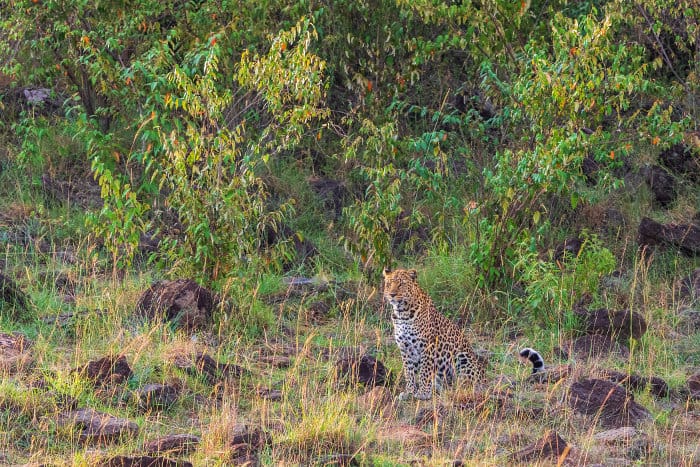
The answer to this question might seem simple, yet few people know where leopards live in Africa. One can find these big cats in 16 of the 54 African countries.
In Africa, leopards prefer to live in habitats with rocky terrain , dense bush , and woodlands . However, the African leopard is highly adaptable. Some leopards live in the savannas and semi-deserts of sub-Saharan Africa, and others in the more mountainous areas around Mount Kenya .
Are Leopards Endangered?
There is a lack of data on the actual number of leopards in Africa. Researchers and conservationists have sadly found that, in sub-Saharan Africa, the population has decreased by more than 30 percent in the last 25 years.
Based on research by the International Union for Conservation of Nature (IUCN), the organization classified the African leopard as vulnerable on its Red List.
This population decrease is primarily due to habitat loss , often fueled by human activity. Researchers estimate that the Panthera pardus pardus has lost between 48 and 67 percent of its original range on the African continent.
Another contributing factor is the decrease in prey population that this carnivore hunts. This loss is also due to shrinking habitat as well as the wild meat trade.
Best Place to See Leopards in Africa – 7 Secluded Spots
Leopards are majestic creatures. Their stealth, strength, speed , and beauty make them gems of the African continent. But they aren’t easily spotted. These seven reserves are your best bet when it comes to seeing the African leopard.
Sabi Sands of the Kruger National Park, South Africa

While African leopards are by no means restricted to national parks and game reserves, Sabi Sands is one of the top spots to watch them in their natural habitat.
Sabi Sands is a collection of exclusive private reserves along the west border of the Kruger National Park . It’s easy to see why it’s considered one of the best safari destinations in South Africa .
The area is home to some of the highest leopard densities in Africa , and is renowned for its decidedly skilled trackers who can read the signs of the wild like no other.
An ideal Sabi Sands spot for leopards is Londolozi . Set along the Sands River, this reserve contains lush vegetation and thick, high-branched trees – perfect for leopards hiding in wait for their next ambush.
It’s your best chance of easily finding leopards in South Africa, as over 50 leopards reside in the roughly 100 square kilometres of land. Plus, Londolozi lodges are exquisite.
The reserve took a compassionate approach towards leopard viewing some years ago. This has led to these big cats being very relaxed and approachable at close range.
This makes for spectacular photography opportunities . The guides are also allowed to take guests out at night, using spotlights to seek out the leopards.
South Luangwa Valley, Zambia
Out of all the national parks and game reserves on the continent, South Luangwa Valley is a favorite spot for leopard sightings . The setting is breathtaking, and the riverine area allows impressive game viewing not only for leopards but also animals of all shapes and sizes.
South Luangwa National Park is especially famous for its night drives . Since most big cats are active at night, the park offers the best chances to view leopards after dark .
The Okavango Delta, Botswana
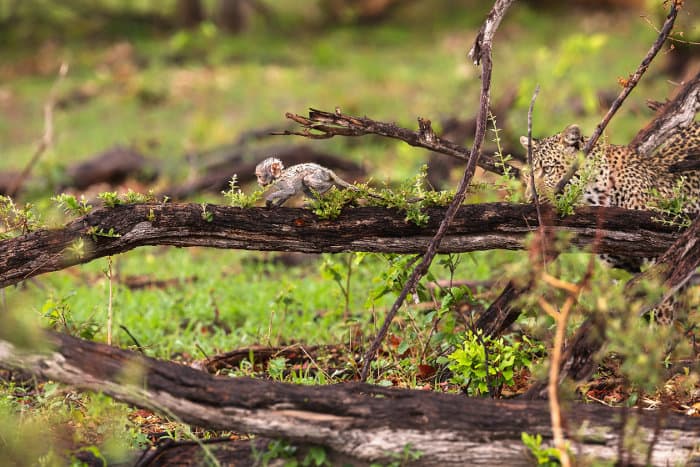
The Okavango Delta of Botswana offers ideal leopard habitat . The waterways and forests surrounding the river floodplains are a favorite hangout spot for the leopards of this area.
The most famous place lies in the Moremi Game Reserve , especially around Mombo Camp . This magnificent setting has starred a few notable animal documentaries, including the “Eye of the Leopard” filmed by Dereck and Beverly Joubert.
Moremi reserve is also home to herds of elephant , buffalo , white rhino , and other African wildlife.
Masai Mara Reserve, Kenya
The Masai Mara is another fabulous destination for leopard lovers and a local favorite for BBC’s “ Big Cat Diary ” episodes.
The reserve has a sizable African leopard population, and the open grasslands make it easier to spot these spotted carnivores than in other, more heavily wooded areas. However, the most suitable sighting area lies along the Talek River , near Mara Intrepids Tented Camp.
Game viewing is excellent all year round here, though your chances of seeing African leopards might be even greater during the Great Wildebeest Migration (between mid-August and early November).
Another big plus about tracking leopards in the region is that these African cats have become quite comfortable with safari vehicles , due to the constant influx of safari-goers. So you might be lucky enough to get some incredible close-up shots.
Buffalo Springs National Reserve and Samburu National Reserve, Kenya
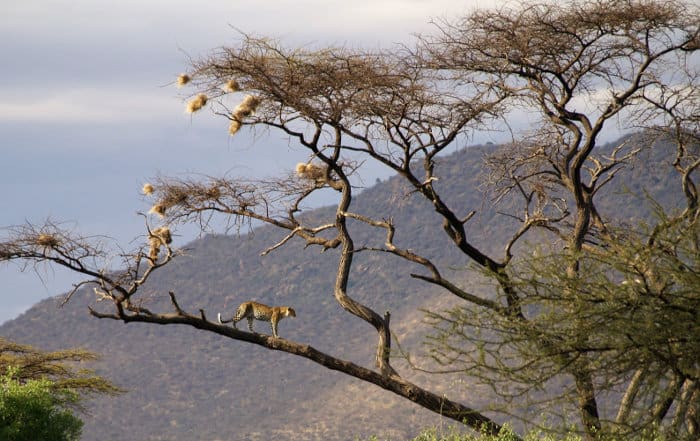
While these two reserves may be in the same country as the Masai Mara, their landscapes are vastly different. Situated on either side of the Ewaso Ng’iro River , the wildlife refuges are dry and rocky, and off the beaten track in comparison to the grasslands of the Mara.
The flowing water attracts these large predators. And the vegetation of woodland and thorn bushes is good camouflage for elusive cats, making this prime leopard spotting territory.
You can learn all about the Samburu National Reserve here .
Serengeti National Park, Tanzania (Seronera area)
The park is not only world-renowned for its “endless plains.” It is also a leopard’s paradise as guides and visitors spot them almost daily .
In the center of this national park, one can find the Seronera Valley . This area, dotted with African acacia and sausage trees , is a popular lounging spot for many leopards.
Across the Serengeti savanna, you’ll see rocky outcrops rising from the grass. These also attract leopards wanting to laze in the sun. To the north of the reserve, you will find dense vegetation and a rocky terrain known as the Lobo area, another favorite leopard tracking spot.
Seronera’s only negative aspect is its overcrowding during high season, making it less pleasant for quality game viewing.
Overall, the area is sometimes reminiscent of Nairobi National Park , where it is not uncommon to find over 20 vehicles next to an animal of interest. While it becomes easier to see animals this way, it is a lot less exciting.
Okonjima Nature Reserve, Namibia
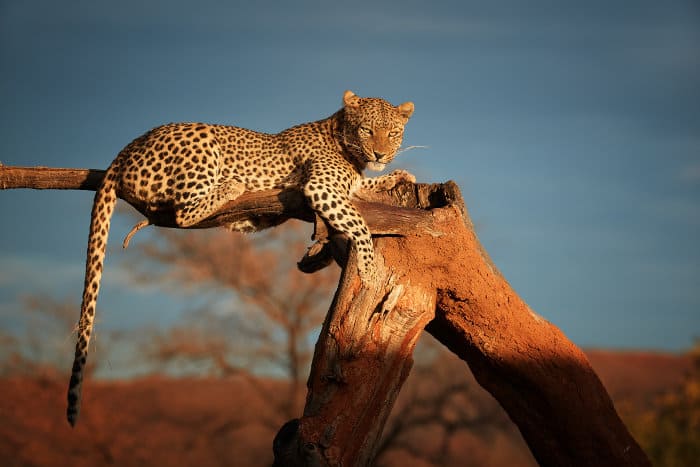
This 20 000 ha sized reserve sits at the base of the Omboroko Mountains between Windhoek and northern Etosha National Park .
Okonjima is a sanctuary for big cats as it’s home to the AfriCat Foundation – a group that rehabilitates injured predators in the hope of releasing them back into the wild. These rehabilitated animals have radio collars, which makes tracking far easier.
The Kalahari Desert is another excellent place to spot leopards. The terrain and limited water sources make it more convenient to find these spotted cats.
Visit One of These Incredible Places to Spot an African Leopard
Spotting a lion or cheetah while on safari is incredibly exciting. Yet one can easily argue that catching a glimpse of the mysterious African leopard tops them all .
Whether you favor Kenya or South Africa , you’re far more likely to spot this elusive big cat at any one of these national parks listed above.
Want to experience a leopard sighting in Africa for yourself? Then have a look at these African safari deals and get booking.
Safari njema! 😉
About The Author
Editorial Team
Related posts.

10 interesting facts about leopard eyes
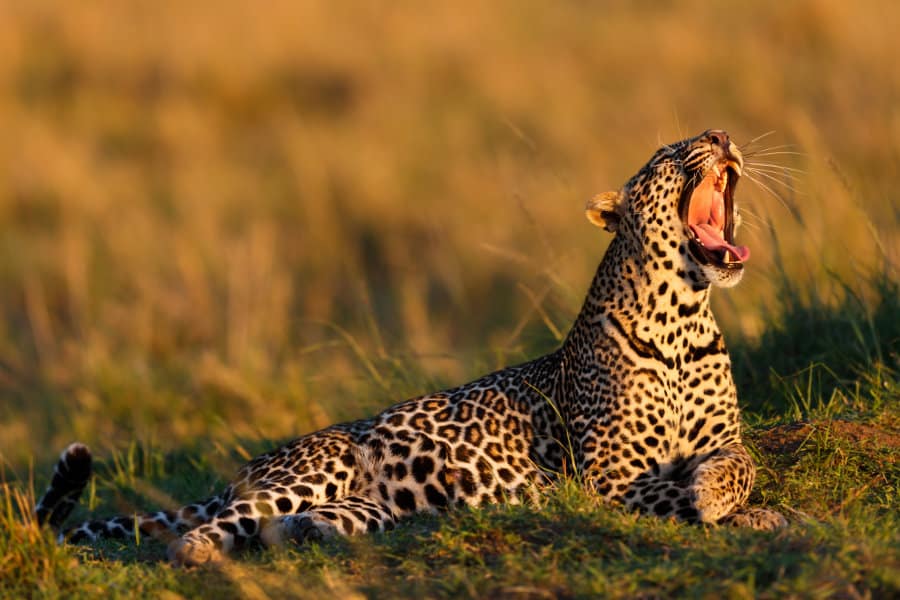
14 interesting facts about leopards

Apex predators: 5 animals at the top of the food chain
3 thoughts on “the african leopard – a guide to spotting elusive cats in africa”.
Thanks a lot for your precious feedback Sandy, appreciate it as always! 🙂 I had never really heard of the Manyeleti Game Reserve before, to be honest with you.
Glad you enjoyed the post Christine, thanks! 🙂 😉
Outstanding article! I thoroughly enjoy your posts.
This is fabulous, thank you! Another great spot for leopard sighting is Royal Malewane, and Tintswalo in the Manyeleti Reserve. Love leopards.
Leave a Comment Cancel Reply
Your email address will not be published. Required fields are marked *
- Central African Republic
- Democratic Republic Of Congo
- Indian Ocean
- Republic Of Congo
- South Africa
- Latin America
- Galapagos Islands
- North America
- Polar regions
- Arctic Canada
- Australasia
- Gorilla Tracking
- Grizzly Bears
- Polar Bears
- Puma Tracking
- Snow Leopards
- Blue Whales
- Bengal Tigers
- Siberian Tigers
- African Lions
- Spirit Bears
- Lowland Gorillas
- Experiences
- Jungle Holidays
- Bush and Beach Combinations
- Conservation Travel
- Natural World Heroes
- Work with Us
- Consumer Protection Overview
- Privacy Policy
- Press and Awards
- Client Reviews
- Expedition Leaders
- Specialist Leaders
- Expeditions for Change
- Journey to Natures Edge
- Country: Settings: Country:
- Currency: Currency:
- Call Us (619) 975-8082
- Destinations
- Gorilla Trekking
- EXPERIENCES
- Journey to Nature's Edge
African Leopard Safaris
Elusive leopards prowl the deserts and bush of Africa in search of unsuspecting ungulates such as zebra and antelope. Due to the threat of lions and hyenas stealing their prey, leopards haul their quarry high into trees to feast on their meal without interruption. Leopards have also been known to use high vantage points to seek out their prey before slinking through the long grass and making the fatal pounce.
Where can you see African Leopards?
Despite being somewhat difficult to locate due to their covert nature, leopards can be seen during game drives in the majority of African safari destinations. One of the top destinations to see leopards is South Luangwa National Park in Zambia which has one of the highest populations of leopards in all of Africa. Other destinations include Kruger National Park in South Africa , Moremi Game Reserve in Botswana and the Masai Mara in Kenya.

Scientific name Panthera pardus
Found in parks and reserves throughout sub-Saharan Africa, leopards inhabit rocky bush terrain and riverine forests but have been known to adapt to a wide range of habitats.
Contact us for a bespoke quote
African Leopard Safari Destinations
Zambia - south luangwa national park, south africa - kruger national park, botswana - moremi game reserve.
A master of camouflage, leopards can be challenging to spot. Your best chance of seeing leopards are along the river where you can see them in large trees.
A top tip from our specialist Phoenix: Look into the tree canopy for a random branch that points downwards... follow that branch up and sometimes... it is the leopards tail!
Classic South Africa Safari
History, culture, wildlife and the world's largest waterfall await travellers....

The African Leopard
African leopard coats vary greatly in colour depending on their location from pale yellow to more brownish chestnut hues. Their rosette markings range from black spots on their lower limbs to large open flowers on their back and hind. These markings often mean they are confused with jaguars native to South and Central America. The underside of leopards’ torsos and tails are whitish in colour and they use their tail’s underside as a sign denoting that they are not seeking prey when walking through groups of mammals.
Generally solitary creatures, leopards live in separate home ranges only overlapping in order to mate. Fights can break out if other males intrude a neighbour’s range. African leopard coats vary greatly in colour depending on their location from pale yellow to more brownish chestnut hues. Their rosette markings range from black spots on their lower limbs to large open flowers on their back and hind. These markings often mean they are confused with jaguars native to South and Central America. The underside of leopards’ torsos and tails are whitish in colour and they use their tail’s underside as a sign denoting that they are not seeking prey when walking through groups of mammals.
CONSERVATION STATUS: Considered near threatened, leopards’ main threat is from humans due to poaching and loss of habitat.
HABITAT: Leopards are extremely adaptable and can live anywhere from arid landscapes to dense forest and rocky outcrops.
LENGTH: Males can grow up to 8 foot in length from head to tail.
- MERCHANDISE STORE
- USA SHOW SCHEDULE
- CUSTOMISE SAFARI
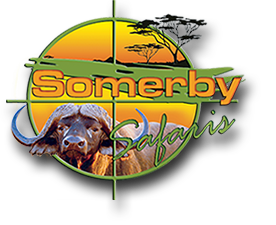
Leopard Hunting
Leopard hunting - package overview.
Hunting Leopard is without a doubt the best adrenaline kicking hunt in Africa. The leopard is the most elusive of the Big Five, also the most dangerous animal in the world when wounded, drawing a deep respect from all who have hunted this magnificent creature. Our Leopard hunting safaris are all custom designed to meet the requirements of the client. Please use the "Enquire Tab" for more details.
Why Somerby Safaris is the best outfitter to hunt Leopard in Zimbabwe:
Leopard hunting is one of the most difficult members of the dangerous game animals to hunt. This remarkable predator is the most elusive of the African predators. Having access to one of the most exceptional, wildest Leopard hunting areas in Zimbabwe , getting more than 80% hits on our baits, and having over 15 years of Leopard hunting experience, Somerby Safaris offers the highest success rate on leopard hunting and can give you the best possible opportunity to successfully hunt your magnificent trophy!
Our Leopard hunting safaris are all custom designed to meet the requirements of the client. Please use the "Enquire Tab" for more details.
Leopard Hunting - Package Includes & Exclude
Hunting Packages Include :
- 15% Government tax
- Trophy fees for the animals mentioned in the package - taken, wounded or lost
- Daily fees for the amount of days specified, which include:
- Transfers to and from Johannesburg Airport
- Service of a Professional hunter and use of hunting vehicle
- Accommodation, full catering, and daily laundry service
- Local liquor in moderation
- Field preparation of trophies and delivery to shipping agent.
Hunting Packages Exclude :
- Any species not specified in the package or additional animals
- Dipping, packing and shipping of trophies
- Accommodation before or after contracted safari period – Arrival day fee.
- All air fare
- Gratuities and personal expenses, phone calls.
Terms & Conditions:
- A deposit will be required to confirm your booking, payable in cash or wire transfer. 50% of your total estimated safari cost is to be paid 2 weeks prior to arrival.
- The balance is payable upon completion of the safari in cash or by wire transfer.
- Please enquire about our cancellation policy.
- All prices may be subject to change, due to fluctuations in Exchange rates; prospective clients will be notified in advance.
- All clients are to sign the safari contract and indemnity waiver.
Leopard Hunting - Gallery
View full gallery on our species pages
Leopard Hunting - Hunting Areas & Safari Lodges
Information on our pristine Leopard hunting area in Zimbabwe:
Our Leopard hunts are conducted in a pristine large hunting area of approximately 250 000 acres in Zimbabwe and has a 33.5km (20 mile) unfenced boundary with The Gona ReZhou National Park, which has had limited human interference. These free-roaming areas for wildlife attract the true hunters who enjoy the experience of true, fair chase hunting.
This spectacular area has historically been known for its genetically huge leopard and is the home of one of the biggest leopard populations. There are very few places in Africa where one could comfortably have an opportunity to hunt and actually get a big leopard. This area is incredibly unique in that it is the largest safari hunting area bordering Gona Re Zhou. It has a vast network of beautiful natural pans and has a remarkably diverse habitat of forest areas, woodland, semi savanna and open grasslands.
We hunt 4 of the big five at this exceptional area. It is primarily a big game area, but it does have plains game such as kudu, zebra, eland, giraffe, impala, duiker, steenbok, crocodile, klipspringer and sable.
Hunting areas in the Limpopo Province, hunting in the Free State, hunting near Kruger National Park, hunting in Zimbabwe
Drom, and his dedicated staff of five full time Professional Hunters operate on eleven exclusive hunting concessions within the nine provinces of South Africa and in Zimbabwe for the hunting of dangerous game. In each camp you will be transported to another time and treated as royalty in luxurious comfort. From beginning to end all your needs are attended to in careful and attentive fashion. Each area is uniquely different from the other in topography and vegetation, thus different species are more prevalent in certain parts of the country. We constantly strive to acquire new concessions to continue to ensure the top trophy quality we have achieved the past 10 years. We manage our areas well by not over hunting them and resting them rotationally. We have a good relationship with the landowners in our areas and can hunt on several other properties around our land and concessions if we need to. We always go the extra mile to make sure our hunters get the trophies they are looking for.
Click the icons on the Google map below for more information and links to the various areas.
Leopard Hunting - Enquire
Somerby Safaris team is ready to assist to plan your dream African hunting safari! We will make sure that your African safari experience is the most exciting adventure and that it will remain etched in your memory books for life! Please provide us with the following information and then we will get back to you within 24 hours!
Somerby Safaris will not share your personal information with any third-party organisations.
Add-on Tours
Add any of our exciting add-on tours to this hunt and get it at a special discounted rate.
3 day / 2 night luxury tour to the magnificent Victoria Falls
$1850 per person sharing, view trip itinerary, 3 day / 2 night standard tour to the beautiful city of cape town., $1100 per person sharing, 3 day / 2 night standard tour to the world-renowned kruger national park, $1350 per person sharing, read our reviews.
Somerby Safaris provides excellence and is at the top of their field. From arrival to departure Somerby Safaris is driven to be the best!
I have been laying over in cities all over the world for more than 30 years and have had some really great times. But I have 4 words to describe my short time with Somerby Safaris, BEST LAY OVER EVER!!!!!
Have hunted Africa 6 times – First 5 with other outfitters and first one with one with Somerby; 6th Safari beats the first 5, Somerby is the best!
Absolutely one of the best hunting experiences of my life. For anyone looking to book a serious African safari, do not hesitate to contact Somerby!
It’s not just the doing of a thing, but how one does a thing that at the dusk of memory takes one back to the sharp moment of action and then a whiskey and a fire shared with a trusted PH ... that is the true and the beautiful essence of “Safari,” at least for me.
Somerby is a wonderful professional organization to work with, hunt with and just know. Booking your first overseas hunt is a huge decision but you can rest assured that Somerby has all the angles covered before during and after the hunt.
Our hunting experience with Somerby created memories and trophies we will cherish for years. Somerby is second to none. Don't wait, don't think twice - Book NOW!
I have hunted with other hunting outfitters in the US, and Canada, none have compared to Somerby!
As my group and I were on our way back home we were already planning for the trip back to Somerby safari
This was without a doubt, the best hunting trip we have taken. We have been taking hunting trips all over the US and Canada for the last 30 years. This trip topped them All. Somerby's far exceed our expectations and we are already planning our return. If you have ever considered an African Safari, call Somerby's you will be happy you did.
Somerby Safaris is first class all the way! I will be back to Africa and Somerby Safaris is the only Safari for me! Hunting with Somerby Safaris was the best trip of my life! All I can think about is going back! - Thank you, Somerby, for a wonderful Safari!
If you are looking for an outfitter that doesn't treat you like a client but a friend, look no further.
VIEW ALL REVIEWS
Hunting Packages
Africa Big Five Hunting Package
Dangerous Game Hunting Packages
Plains Game Hunting Package
Family and Couples Hunting Packages
Hunters Information
Hunting Areas and Lodges South Africa
Non Hunting Activities
Hunting Safari Information South Africa
South African Hunting Safaris – Rifles
Price List & Daily Rates
USA Annual Tour Show Schedule
About Somerby Safaris
Why book with Somerby Safaris?
Read our Hunting Reviews
The Somerby Team
Contact Us:
Drom & Sune Beukes
Drom: +27 72 118 4800
Sune: 011 27 79 873 5154
Office: 011 27 82 207 7576
USA: 1-469-559-2669
(Cell – Jan & Feb only)
USA: 815-361-9079 (Fax)
Price list 2024
InAfrica Tours Brochure
Subscribe to Somerby Safaris Newsletter
Schedule a zoom meeting.

Leopard Hunting | Resources
© all rights reserved somerby safaris.
South African Hunting Safaris
booking enquiries, leopard's valley lodge.
- Photo Gallery
- Video Gallery
- Testimonials
- Hunters Care
Our lodge is a 200 year old converted farmstead, situated in the Central Karoo Region, that has been in our family’s care for 6 generations.
Our selection of accommodation in the majestic Mozambique includes Catapu Lodge, Muanza Lodge, Mupa Lodge and Sena Lodge.
Our Packages
Leopard’s Valley Safaris offers custom-made packages to suit your requirements.
All our hunts are operated out of our Numerous Luxury lodges situated around Southern Africa but mainly in the Eastern Cape.
All our packages are All inclusive from airport pickup to drop off.
All Listed Trophy Game for respective packages, food transport and beverages local
Beer and wine is included in the price .
Packages are discounted, and animals are not transferable. We can tailor make a hunt on request.
Most plains game Safari’s utilize our many Concessional Hunting areas around the lodge with short trips to neighboring game farms not exceeding 40min to an hour. A Much larger part of the country is seen and experienced in this way. The accommodation is as comfortable as any of our local 3 star hotels.
All pricing in US Dollars and subject to change*
SHOW SPECIALS
Purchased january and february 2024 only, 7 day plains game package 7 hunting days , 8 night's accommodation, 4 trophy animals.
- Common Springbuck
$4250 (Normal price - $6350) Observer rate $250 per person, per day
7 day SABLE PACKAGE
7 Days hunting, 8 night's accommodation
7 hunting days for a Mature Sable Bull.These hunts are conducted either on our low fenced properties, where the sable have grown up, and move around unhindered by the low fences, or on one of our large, 65sq mile private reserves, wherever quota is available. This is a fair chase hunt.
$4500 (Normal price - $6 900)
Observer rate $250 per person per day/night
7 day BUFFALO HUNT
7 days buffalo hunting. These buffalo will be hunted on large areas in a fair chase manner. These bulls are guaranteed to be mature hard boss bulls.
$10 500 (Normal price - $15 000)
*This only applies to packages and NOT donated hunts.
*Multiple special packages cannot be added together
Regular packages:
PIONEER PACKAGE 7 Hunting days, 8 night's accommodation, 4 trophy animals
This is ideal for kids and first timers wanting to get their feet wet in African hunting.
- Impala or Black Springbuck
- Warthog or Mountain Reedbuck
1x1 $3 600 2x1 $3 300 per hunter
Observer rate $250 per person, per day/night
PRIME PLAINS GAME PACKAGE 7 Hunting Days , 8 night's accommodation, 5 trophy animals
- Kudu or Gemsbuck
1x1 $5 700 2x1 $5 500 per hunter
Observer rate $250 per person, per day
MIGHTY PLAINS GAME PACKAGE 10 Days hunting, 11 night's accommodation, 6 trophy animals
- Blue or Black Wildebeest
1 x 1 $7 790 2 x 1 $7 490 per hunter
FULLY – LOADED PLAINS GAME PACKAGE
7 Days hunting, 8 night’s accommodation, 5 trophy animals
- Choose 2 –
Gemsbuck, Kudu, Zebra, Black wildebeest, blue wildebeest, red hartebeest
- Choose 3 –
Impala, Warthog, common springbuck, blesbuck, mountain reedbuck
1 x 1 $5 900
2 x 1 $5 600 per hunter
EASTERN CAPE FREE RANGE MOUNTAIN SLAM
7 Days hunting, 8 night’s accommodation, 4 trophy animals
This hunt will be conducted on our free-range, low fence areas in the Sneeuberg mountains, at an elevation of 5500 – 7000ft above sea level. This is the ideal habitat for the very elusive Vaal Rhebuck. This hunt is completely free range and fair chase, for the species listed. Cape Eland can also be added to this hunt.
This hunt is strictly for June and July months, for permitting reasons.
Our Vaal Rhebuck have consistently been over 7”, averaging 8-10”.
- Vaal Rhebuck
- Mountain Reedbuck
- Black Wildebeest
- Klipspringer
$7 500
VAAL RHEBUCK PACKAGE
7 Days hunting, 8 night’s accommodation, 1 Vaal Rhebuck
SPIRAL SLAM
- 1 Cape Eland
- 1 Cape Kudu
- 1 Cape Bushbuck
SPRINGBUCK SLAM
- 1 Kalahari Springbuck
- 1 Black Springbuck
- 1 White Springbuck
- 1 Copper Springbuck
SABLE PACKAGE
7 hunting days for a Mature Sable Bull.
These hunts are conducted either on our low fenced properties, where the sable have grown up, and move around unhindered by the low fences, or on one of our large, 65sq mile private reserves, wherever quota is available. This is a fair chase hunt.
$6 900 - 44"+ guaranteed
SOUTH AFRICAN BUFFALO HUNT
7 days buffalo hunting. This will be on one of our exclusive 65 sq. mile private reserves in the Free State province of South Africa, or in the Mpumalanga Province, near Kruger National Park, depending on availability. These buffalo will be hunted on large areas in a fair chase manner. Bulls will be over 40”, and we have been consistently averaging 40-43”.
$10 500 - hard boss bull up tp 40"
Extra Buffalo - $13 500
The Management Hunts
A friend of mine from Michigan U.S.A said to me that every hunter that does not hunt every day should do a cull hunt before the start of a Safari. “ …. the experience I learned in 1 days ( cull hunting 15 animals) hunting is the equivalent to a lifetime hunting back home…”
These are all management animals, meat culls a necessity to managing the vast herds of game. Great for hunting experience with many valuable lessons learned without losing “. . . that big one. . .”
Management hunt 7 Days hunting, 8 night's accommodation, 10 management animals
- Blesbuck Ewe
- 7 Common springbuck (Driven hunt) Or walk and stalk - $120 each
- Add Eland cows for $600
- Add Kudu cows for $300
- Add Wildebeest cows for $300
- Add Impala or Blesbuck ewes for $200
- Add Springbuck ewes for $100
- Trophy animals can be added as per our list price
1 x 1 $3 900 2 x 1 $3 700 per hunter Observer rate $250 per person per day/night
Springbuck Management hunt 5 Days hunting, 6 night's accommodation, 10 management animals
- 10 Springbuck (Driven hunt)
- Extra springbuck - $120 per animal
1 x 1 $3 200 2 x 1 $2 550 per hunter
Observer rate $250 per person per day/night
ADD A MANAGEMENT CULL HUNT TO YOUR SAFARI !!
To incorporate a 10 Springbuck Driven cull at $1000 to your package.
Add $ 1260 for The 10 Cull animals of the 7 Day cull package .
$ 1 800 for the 14 animals of 10 Day cull package.
______________________________________________________________________________
Specialized Bird hunting also available @ $850/day per gun.
Species offered are Egyptian geese and Guinea fowl, Pigeons, Quails, Francolins and Doves.
(Depending on the season) or just do some walk on birding at $250/gun
FISHING CHARTERS.
Fishing trips are offered at $150/person boat min $1 000 and 8 people max per boat.
(Depending on the season) This includes transfers.
Mozambique hunts
10 day Buffalo Safari $ 15 500
We offer a 10 day Buffalo safari in southern Mozambique from our Nyari camp, meaning Buffalo camp. This area is a communal area adjacent to the world-famous Kruger National Park.
There are large amounts of buffalo in the area that come through from Kruger during the wet season into the hunting area, where there is standing water. On 90% of our hunts you will be on fresh Buffalo tracks daily.
Hunt will start in South Africa at Johannesburg International where we will drive you to the Pafuri gate in Kruger National Park.
On entering Mozambique we will get your Visa. The camp is situated through the Limpopo river on the banks of the Nuanetsi.
This is a true wilderness camp where there is no electricity or Wi-Fi. Very comfortable tented camps exist with battery operated / solar lights and a generator to keep the beers cold. This is a true wild African hunting experience.
7 day Hippo and Croc Hunt $17 000
We have some fantastic river systems to hunt on our areas in Mozambique. From Southern Mozambique to central and northern areas, and have crocodiles available on the world-famous Cahora Bassa Dam. Hippo also have finally got CITES export permits.
This exciting hunt will show you how sly the great crocodile is to hunt. Hunting will take place on foot or by boat on the larger of the systems. Very unique Safari style and exciting hunt to experience shooting some monster crocs of up to 15- 16 feet
14 day Leopard Hunt - $34 000
With leopards becoming more and more difficult to hunt due to anti-hunting pressure and permit restrictions, now is the time to book that leopard hunt!
We have permits to hunt leopards in northern Mozambique as well as in central Mozambique, bordering Gorongosa National Park. Price includes 14 days of hunting as well as Leopard’s tag fee. Includes rifle import, hunting permits and visa etc. The only extra costs will be bait animals or pre baiting
INCLUDES –
- 1 rifle import permit, 1 hunters licence for 1 concession.
- Includes road transfer, pick up and drop off.
EXCLUDES -
- Niassa concession community conservation fee $100 per person per day, if hunting in the Niassa reserve.
- Pre baiting -$250 per day.
- All bait animals
- Multi area licence- $600. If hunting more than one concession.
- Any charter flights or air travel
- Any accommodation pre, post, or during a transfer.
- Concession transfer costs from one camp to another.
* All prices are in US$ and are subject to change.
Leopard's Valley Safaris
Copyright © 2024 (All Rights Reserved) • Leopard's Valley Safaris - South African Hunting Safaris
Web design by jmgrafixx.

Top 10 Safari Parks in Africa
C an't decide where do you want to start your next (or first) safari in Africa? We collected the top 10 safari parks in Africa places to see wild African animals in their natural habitat. If you want to know what to be on the lookout for, read our article on the top 10 safari animals you can spot on your travels!
There's always more to explore so feel free to check out our article on the top 10 countires for safaris! For some Safari fun you can check our blog post on how a Family Safari completely errupted into chaos!
Read ahead or jump to any section that interests you:
Introduction
A safari (Swahili: journey) in one of Africa's national parks is an exciting thing: many people can observe a larger number of wild animals and even have the oppurtunity to see the famous Big 5 of africa.
The focus is on the savannah and bush landscapes, where savannah elephants , lions , buffalos , and other well-known wild animals feel at home.
Whether it's Africa for the first time or safari connoisseurs, there should be something for everyone. And it attracts attention: There is no best destination in Africa, but there are the best destinations.
So, where should the next safari lead?
10th place: Amboseli National Park, Kenya
Where else can wild animals be observed in front of one of the most famous mountains on earth? The Amboseli National Park at the foot of Kilimanjaro in Tanzania serves both as a postcard motif for Africa and as a photographic object. Giraffes, elephants and all sorts of other wild animals strut in front of the snow-covered summit of the "Kili" and give great photo motives.
Ancient elephants still live in the park. This allows visitors to observe the almost intact social behavior of the pachyderms in their herds.
The Kilimanjaro usually wraps itself in thick clouds during the day. The chances of seeing it are best in the morning and evening.
9th place: Addo Elephant National Park, South Africa
Number 9 on the top 10 safari parks in Africa is Addo. Known for, as the name suggests, its elephants, the Addo is more than a convenient destination near South Africa's Garden Route. The park is home to lions again after a resettlement program; black rhinos and leopards are also found here. Due to the extension to the south, the coast with its sharks and whales is also part of the park, which now advertises with the "Big 7".
In conclusion, the park is ideal for exploring with your own (rental) car. Please make sure to ask in advance what you have to consider for the self-drive safari.
In addition, holidaymakers in their cars should ensure they do not run over pill turners (African dung beetles), hundreds of which run across the roads depending on the weather.
8th Place: Etosha National Park, Namibia
Namibia's most important park is home to countless wildlife, including the white and black rhino who are critically endangered, something you can read more about in one of our other articles about these ancient and disappearing creatures. There are also several predatory cat species and many antelopes. "Etosha" means "big white square," which describes the landscape well. The vegetation is extremely sparse; in the dry season, many animals gather at artificial waterholes.
In the dry season, many animals can easily be observed at the park water holes and camps. 114 different species of mammals live in the park.
Every coin has two sides: The park is completely fenced in and cuts the animals off their original routes in search of water in the Kuene region. The waterholes are not comparable to the actual environment and natural migration behavior for true lovers.
7th place: Tarangire National Park, Tanzania
The Tarangire National Park is one of the most underestimated parts of the continent. Many visitors only make a short stop at the Serengeti or do not ebaobabven include the national park in their travel plans. But the park is home to large herds of elephants and many other species in a remarkable landscape of boabab trees.
The park is known for its elephant herds, which run through a prehistoric landscape along the Tarangire River.
The park is home to the tsetse fly, which transmits sleeping sickness. Visitors should urgently pay attention to consistent protection.
6th place: Chobe National Park, Botswana
"Land of the Giants" is written on the sign at the park entrance and already announces the park's main attraction: Elephants, one of the savannah's most social creatures . Between 80,000 and 100,000 pachyderms are estimated to live in the park and adjacent areas, where they migrate depending on the season.
Botswana pursues an exemplary animal and species conservation policy and no longer kills elephants if they become too numerous for the ecosystem. Instead, fences were dismantled to create more space for the animals. Kaffir buffalos and warthogs are also common. As a result, always check the weather forecast before you go.
A safari with the boat on the Chobe river belongs to the experiences, which holiday-makers surely do not forget so fast.
During the high season the Chobe River can be very narrow.
5th place: South Luangwa National Park, Zambia
On the Luangwa River, the wilderness awaits: no fences, no radios to communicate with the rangers. Those who travel to the South Luangwa National Park will experience the bush unadorned, without much traffic and wild. It is not uncommon for your own jeep to be the only one at a spectacular sighting, giving visitors more time and peace to enjoy the encounter with the animals. Night safaris and bushwalks, i.e. safaris on foot, are allowed in the national park.
Pure wilderness. The park is known for its hippos and leopards . Many camps are not fenced and often wild animals run through the lodges. The park is also home to numerous endemic species and subspecies, i.e. animals that can only be found here. Sometimes you can even see the endangered Pangolins and the even more threatened Rhinos . Two species of Animals we explore in more detail in another article.
These include the Cookson gnu, the Crawshay zebra and the Thorneycroft giraffe.
The season plays an important role in the South Luangwa National Park. While in the dry season many large wild animals gather at the water and are so easy to discover, during the rainy season bird lovers get their money's worth.
4th place: Kruger National Park, South Africa
For most vacationers the Kruger National Park is the first safari experience in the African bush . It is one of the largest national parks on the continent and is home to a wide variety of wildlife. In contrast to the open savannahs in East Africa, the landscape is bushy and the animals are harder to spot.
This may be described as the best South African Safari.
In the Kruger National Park live some very rare animal species like wild dogs. Another animal worth further exploration in another one of our articles.
Animals in Vermont
The good infrastructure, the developed roads and the fences around the national park make it clear that the park is used and marketed commercially.
This partly causes a lot of traffic in the park and has at some corners only little to do with the real wilderness feeling.
3rd place: Ngorongoro Nature Reserve, Tanzania
While driving over the edge of the burglary crater into the nature reserve, visitors can rarely suppress the "wow" that involuntarily comes over their lips. The view can take your breath away. The safari through the crater, which has the highest predator density in Africa, becomes the photographic highlight of many Africa journeys.
The wildlife hike through Masai Mara and Serengeti also touches on the protection of the wildlife.
Overall, the high density of animals naturally attracts many visitors and some have the feeling of driving through an open-air zoo.
Some of the jeeps obstruct the way of the animals or hinder cats of prey during the hunt. Tell your driver that you don't approve of such behaviour.
2nd place: Serengeti National Park, Tanzania
Hardly any other national park in Africa is as famous as the Serengeti. This is of course due to the diverse fauna and one of the largest animal migrations in the world .
On the other hand, the Serengeti is almost always threatened: Many people have an interest in the place and in the fertile savannah, on which millions of wild animals cavort and planned large-scale projects would probably mean the end of the national park. The battle for the Serengeti has been fought for decades and culminated in the documentary "Serengeti must not die" by Michael Grzimek and his father Bernhard in the 1950s.
Really one of the Top 10 Safari Parks in Africa.
The migration of wild animals, where millions of wildebeests, zebras and antelopes travel in a large circle through the Serengeti and the adjoining Masai Mara in Kenya during the course of the year. This is known also as one of the great wilderbeast migration , a topic you can do further reading on with another one of our articles .
The Serengeti is exposed to constant threats. The plans to build a highway through the area are not over yet. There are also frequent conflicts between wildlife and humans.
In addition, organizations are now warning that too many tourists are coming to the park. It is best to drive in the low season and avoid facilities that require a lot of water (swimming pools etc.).
1st Place: Masai Mara Nature reserve, Kenya
Number one on the top 10 safari parks in africa list! When tears shoot into the eyes of the viewers of a lion documentary because the pictures are so overwhelming, the reportage is mostly shot in the Masai Mara (or Maasai Mara).
Wide landscape with green hills as far as the eye can see. The view is interrupted only by Wildebeest , zebras, giraffes, Elephants ,, antelopes , lions , hyenas… The Masai Mara could pass for an African cliché if it were not real.
Word has got around of course that the Masai Mara is a paradise on earth. It is therefore frequently overcrowded and the many cars already have influence on the behavior of the wild animals. Some cars leave the tracks in search of the best view. If this happens to you, it's best to tell the driver that you don't want them to.
The park also serves as a Rhino sanctuary and is home to some 60 white and black rhinos, who are guarded around the clock by armed rangers. An absolute must for rhino fans, who are almost guaranteed to meet some of the animals here.
The impressive Murchison waterfall, where the Victoria Nile plunges over 43 metres into the depths, is also a must see. The park is home to the endangered Rothschild Giraffes (also Uganda giraffe or Nubian giraffe). To the south of the park is the Budongo chimpanzee forest.
The park is in some places tsetse fly high area. Be sure to take care to protect yourself against insects.
When to go on a Safari
The best time is always present, but if you are looking for the most enjoyment from your trip, the best time to go is from July through October, when the animals are easy to find and in substantial numbers. However, deciding when to go on a safari depends on what country you want to visit and when you can plan your trip. As well as the type of wildlife you hope to encounter.
The best months for an African safari are therefore varied.
What to pack/ best luggage for African safari
Some of the most recommended basics:Here's the "must-haves" to pack for your safari :
- T-shirt, shirt or blouse – long sleeves and collars help to protect from the sun and mosquitoes
- Fleece or warm jacket.
- A pair of safari trousers – those that zip off at the knees are very handy, too.
- Comfortable walking shoes (or boots) and socks.
Above and beyond the comfortable basics, there are niche items which could enhance your experience on safari. We've researched the best of these items to take with you.
Best insect repellent for African safari: Natrapel 8 Hour insect repthatellent: this is a CDC recommended product based on 20% Picaridin formula and is DEET FREE. It is safe to spray on your skin and clothing.
Best binoculars for African safari : Celestron 71347 Outland x | 10×25 | Best compact Binoculars for Travel.
Best camera for African safari : Best -buy cameras for safari in Africa: At Canon, it would be the Canon EOS Rebel series. Often you can get a kit ( camera + lenses + accessories). Best for travelling and easy shots.
Best shoes for African safari : light trail shoes and hybrid shoe /sandals (Keen, Teva, Merrel, North Face, HiTec, Garmont, Salomon etc) are adequate for regular travel and normal safari conditions. Even fly-camping trips and walking trails on fairly rough terrain don't warrant hiking boots when conditions are dry.
It is important to find out what you need for specific areas as well as administrative documents and permits.
Summary on Top 10 Safari Parks in Africa
The landscape is very bushy and visitors often only see the animals when they are standing directly in front of or next to the car. Slow driving is therefore all the more important.
How did you like the article on the top 10 safari parks in africa? In conclusion, we hope to give you some ideas and inspirations on the best african safari tours, animal encounters and holiday trips.
- Masai Mara Nature Reserve, Kenya – Overcrowded but abundant wildlife, including rhinos.
- Serengeti National Park, Tanzania – Famous for the great wildebeest migration.
- Ngorongoro Nature Reserve, Tanzania – High predator density, popular tourist destination.
- Kruger National Park, South Africa – Large park with diverse wildlife, commercialized.
- South Luangwa National Park, Zambia – Unspoiled wilderness, known for hippos and leopards.
- Chobe National Park, Botswana – Land of the Giants, home to a large elephant population.
- Tarangire National Park, Tanzania – Underrated park with large elephant herds and baobab trees.
- Etosha National Park, Namibia – Sparse vegetation, artificial waterholes attract many animals.
- Addo Elephant National Park, South Africa – Known for elephants, self-drive safari recommended.
- Amboseli National Park, Kenya – Elephants near Mount Kilimanjaro, observe intact social behavior.
Tips for Safari:
- Best time to go is from July to October for high animal sightings.
- Pack essentials like long-sleeved shirts, hat, fleece, comfortable shoes, insect repellent.
- Recommended binoculars: Celestron 71347 Outland x | 10×25.
- Canon EOS Rebel series for safari photography.
- Check specific requirements, permits, and administrative documents for each park.
Be advised that those are subjective ideas and of course every safari park, whether big or small can be beautiful and present you with awesome wildlife.
There's always more to explore so feel free to check out our article on the top 10 countires for safaris!
Frequently Asked Queastions (FAQs)
Safari experiences are generally safe, but it's important to follow guidelines and instructions provided by your guides or tour operators. Wildlife should be observed from a safe distance and never approached or provoked. It's also recommended to stay within designated areas and camps, especially during night hours. Adhering to these precautions ensures a safe and enjoyable safari experience.
Many safari operators and lodges prioritize sustainability and conservation efforts. They work to minimize the ecological impact by implementing responsible practices such as supporting local communities, conserving natural resources, and participating in wildlife conservation initiatives. When choosing a safari operator, it's advisable to opt for those with strong environmental ethics and credentials.
Interacting with or touching wildlife is strongly discouraged and, in most cases, prohibited during safaris. The well-being of the animals and the safety of visitors are of utmost importance. Safaris promote responsible wildlife viewing, which involves observing animals from a safe distance and respecting their natural behaviors. Touching or disturbing the wildlife can cause stress or potentially dangerous situations for both humans and animals.
Several ways to contribute to conservation efforts during a safari include supporting eco-friendly lodges or tour operators that actively participate in conservation initiatives. Additionally, you can choose to visit parks and reserves that allocate a portion of the entrance fees to conservation projects. It's also encouraged to learn about and respect local customs, traditions, and wildlife protection regulations while engaging in responsible tourism practic
The post Top 10 Safari Parks in Africa appeared first on Animals Around The Globe .
Animals in New Mexico
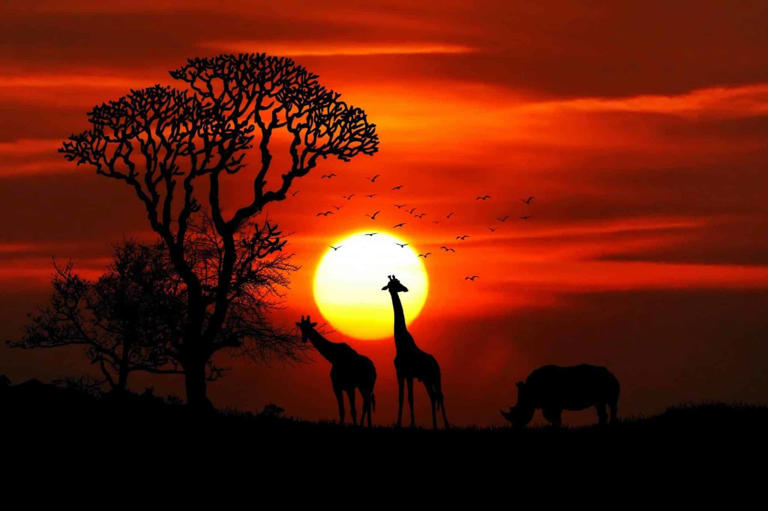

IMAGES
VIDEO
COMMENTS
17 days • 7 locations. CAPE TOWN AIRPORT TO KIGALI AIRPORT. An epic adventure taking in some of Africa's most incredible sights and wildlife experiences, from Cape Town to the Okavango Delta, Victoria Falls, the Maasai Mara and an encounter with mountain gorillas. US$14,280 - US$18,140 per person.
The best places to see leopards. Botswana: Botswana is excellent for spotting leopards, and a testament to the leopard's adaptability - leopards are commonly seen in watery habitats like Chobe National Park and the Okavango Delta, but also in the desert-like Central Kalahari Game Reserve (CKGR). Kenya: Kenya 's parks are prime leopard ...
The South African portion of the Kgalagadi Transfrontier Park, the Kalahari Gemsbok National Park, is a place of predators - roughly 200 cheetahs, 450 lions and 150 leopards dominate the sandune and scrubland-ridden landscape that knows no borders between South Africa and Botswana. Leopards in the south-western portion of the Kgalagadi have ...
The park is considered a great habitat for leopards. It forms the South African portion of the renowned Kgalagadi Park. Many leopard sightings have been recorded here. Shamwari Private Game Reserve. It is located 75 kilometers from Port Elizabeth. The Reserve has been recognized as the World's leading safari and game reserve on many occasions.
We have narrowed down the list to the top three regions where these incredible cats, that are masters of stealth and camouflage, can be seen. Leopards are nocturnal and thrive under cover of darkness. Sabi Sands Game Reserve. The Sabi Sands Game Reserve is well-known as one of the best places to embark on an authentic African safari.
Browse our African safaris on offer here. 1. The Greater Kruger, South Africa. This corner of South Africa is famous for its spectacular leopard encounters, especially in the southern regions of the Greater Kruger, where leopard densities are at their highest. Private reserves like Sabi Sands Game Reserve have a long history of leopard ...
1.) Successful leopards can live up to 15 years in the bush. 2.) Leopards are largely silent, unlike their cousin the lion, and sometimes emit a cough-like call. 3.) They like rocky outcrops and dense riverine bush. 4.) After lions, leopards are the second biggest African cat and can weigh between 60 and 70 kg. 5.)
South Africa is home to over 500 bird species, 100 species of reptile and 150 mammal species, including the Big Five and the endangered African wild dog. Seeing the Big Five - lions, leopards, rhinos, elephants and Cape buffalo - is the ultimate safari challenge. These animals were historically thought to be the most difficult to hunt and ...
The Leopards Of Londolozi is a one-of-a-kind safari that has been specifically designed around leopard photography and the green season. You will be taken to the best place to see leopards in Africa, Londolozi Private Game Reserve. This South Africa photography safari takes place exclusively in Londolozi, where leopard photography and filming ...
How much does it cost to hunt in South Africa? . An African Hunting Safari price for an 8-day plains game hunt with 7 trophies is on average between $4000 and $7,000. However, some additional costs need to be considered. 1. Travel cost to Africa of between $1500 - $2500.
Rivalling Greater Kruger as Africa's ultimate leopard hotspot, Luangwa is a relatively shallow southern extension of the Great Rift Valley dominated by the river for which it is named. It supports a quartet of national parks, the largest and most famous of which, South Luangwa, ranks as one of Africa's truly great all-round safari destinations.
Range & habitat. The leopard has the most extensive distribution of all the big cats. They have a heavy presence in sub-Saharan African countries such as Zambia, Botswana, South Africa, Kenya, and Tanzania. Outside Africa, leopards can be found in Iran, the Himalayas, Central and South East Asia, India, Eastern China, Manchuria, Atlas mountain, and the Korean Peninsula.
This might be because the individual tree is particularly suitable to haul up prey or as a vantage point to check out the surrounding areas. More likely, leopards, just like us, are creatures of habit with favorite hang-out spots. Serengeti Tours. 5. Sabi Sand Game Reserve - South Africa. Leopard in a tree.
South Africa is calling - come! Leopard Mountain is a fully solar off Grid, 5 Star, multiple award-winning, Big 5, family-run safari lodge set within the magnificent 58 000 acre Manyoni Private Game Reserve. Our Safari Lodge is intimate and exclusive. With only 9 luxury suites we are able to guarantee personalised service.
The vast majority will come from the four-day safari we went on, and what better way to start this series than with shots of an animal named Safari. She's a leopard, and undoubtedly one of the ...
Sabi Sands hosts one of the world's best-protected and best-studied leopard populations. We have life histories for over 900 leopards in the Sabi Sands since 1979 and detailed records of more than 500 litters of cubs. Over 110,000 unique leopard sightings have been submitted since 2003 and approximately 8000 new observations are added annually.
Chris Berman/ Getty Images South Luangwa may have the densest population of leopards but if there's one place in Africa that's world-famous for its leopard sightings, it's South Africa's Sabi Sands Game Reserve.It's located on the western edge of Kruger National Park, with which it shares an unfenced boundary.Rangers at Londolozi Lodge in the heart of the reserve have been studying the park's ...
A study 3 showed leopards to have disappeared from at least 37% of their historic African range. However, more recent studies 1,4, paint a bleaker picture of an extensive leopard range reduction in the region of approximately 60%-70% 1,4 with only 17% of the existing range protected and disturbingly, that leopards are extinct in 67% of South ...
One can find these big cats in 16 of the 54 African countries. In Africa, leopards prefer to live in habitats with rocky terrain, dense bush, and woodlands. However, the African leopard is highly adaptable. Some leopards live in the savannas and semi-deserts of sub-Saharan Africa, and others in the more mountainous areas around Mount Kenya.
Leopard's Valley is situated on the ranch Libertas, in the Game rich Camdeboo area in the Karoo, an unfenced working stock ranch that forms part of a family trust of 11 000 hectares, close to 30 000 acres, and has most of the wild indigenous animals free roaming across its plains. Nestled in the Camdeboo mountain range, between Graaff-Reinett ...
The African Leopard. African leopard coats vary greatly in colour depending on their location from pale yellow to more brownish chestnut hues. Their rosette markings range from black spots on their lower limbs to large open flowers on their back and hind. These markings often mean they are confused with jaguars native to South and Central America.
Why Somerby Safaris is the best outfitter to hunt Leopard in Zimbabwe: Leopard hunting is one of the most difficult members of the dangerous game animals to hunt. This remarkable predator is the most elusive of the African predators. Having access to one of the most exceptional, wildest Leopard hunting areas in Zimbabwe, getting more than 80% ...
Very unique Safari style and exciting hunt to experience shooting some monster crocs of up to 15- 16 feet. 14 day Leopard Hunt - $34 000. With leopards becoming more and more difficult to hunt due to anti-hunting pressure and permit restrictions, now is the time to book that leopard hunt!
Number 9 on the top 10 safari parks in Africa is Addo. Known for, as the name suggests, its elephants, the Addo is more than a convenient destination near South Africa's Garden Route.